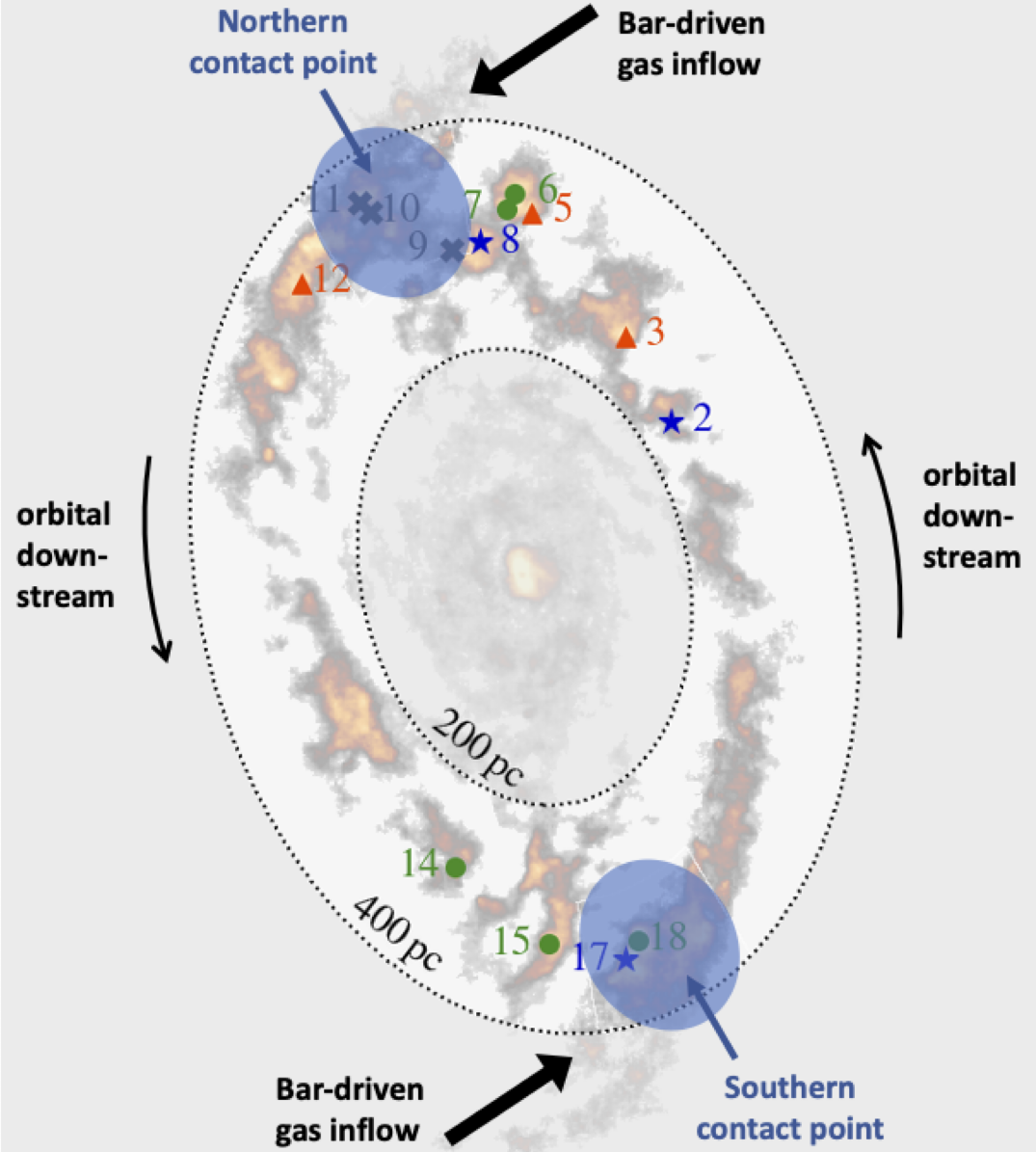- To move slides, use the arrow keys or swipe on your mobile device
- To see the speaker notes, press "s"
- To go to full screen, press "f"
- To print as PDF, go to this URL: ?print-pdf, then print.
- To get a PDF with speaker notes, add ?print-pdf&showNotes=true to the URL.
Ice in the Galactic Center
Adam Ginsburg
University of Florida, Gainesville

Savannah Gramze, Nazar Budaiev, Brandt Gaches, Ash Barnes, Cara Battersby Alyssa Bulatek, Jonny Henshaw, Desmond Jeff, Xing "Walker" Lu, Betsy Mills, Dan Walker, Matt Ashby
Supported by the NSF: 2008101, 2206511, CAREER 2142300, STSCI grants 1905, 2221
Slides available at
https://keflavich.github.io/talks/gc_ice_2025.html or from my webpage →talks
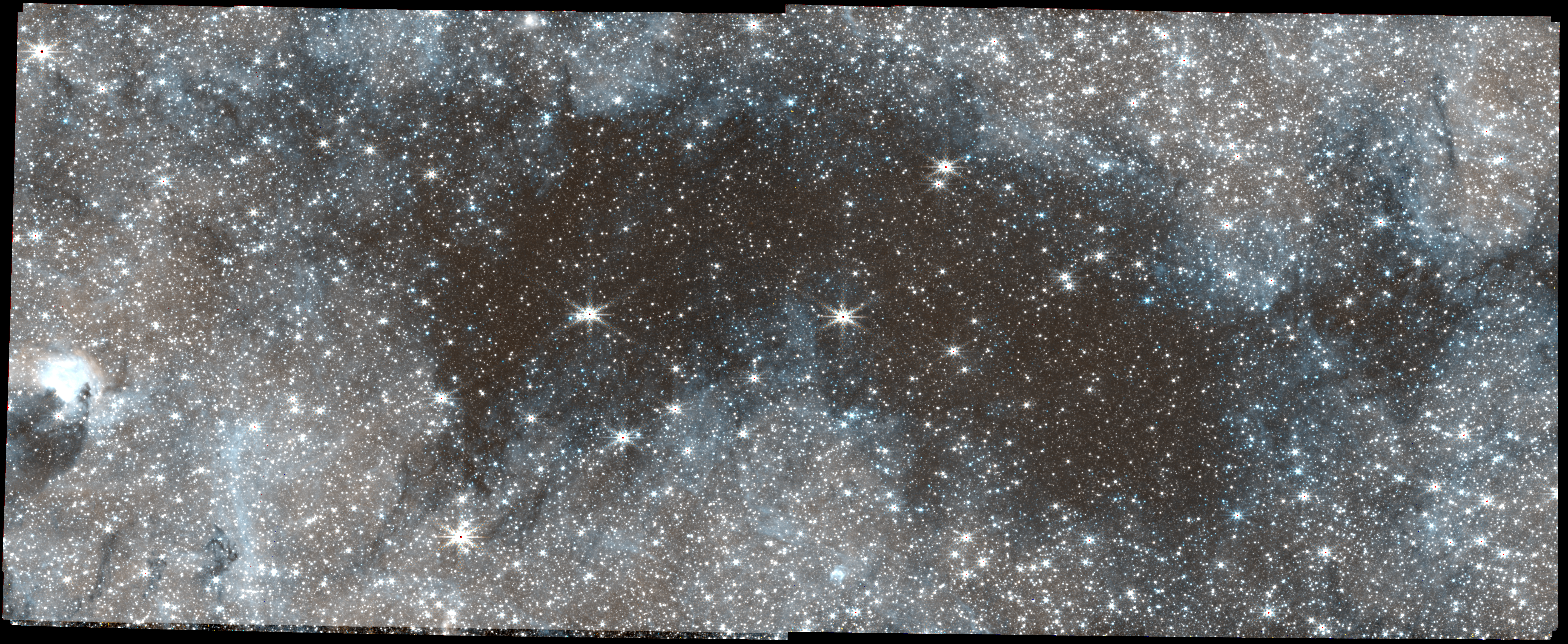
Enemy:
Friend:
- Nice molecules like CO freeze out
- They make extinction curves weird
- Grow grains, making dust harder to model
- Delivers water and other good stuff to planets
- Ices facilitate chemistry, making good stuff like CH2CH3OH
- Can be used to measure metallicity?
The CMZ is one extreme of star forming conditions in the Galaxy
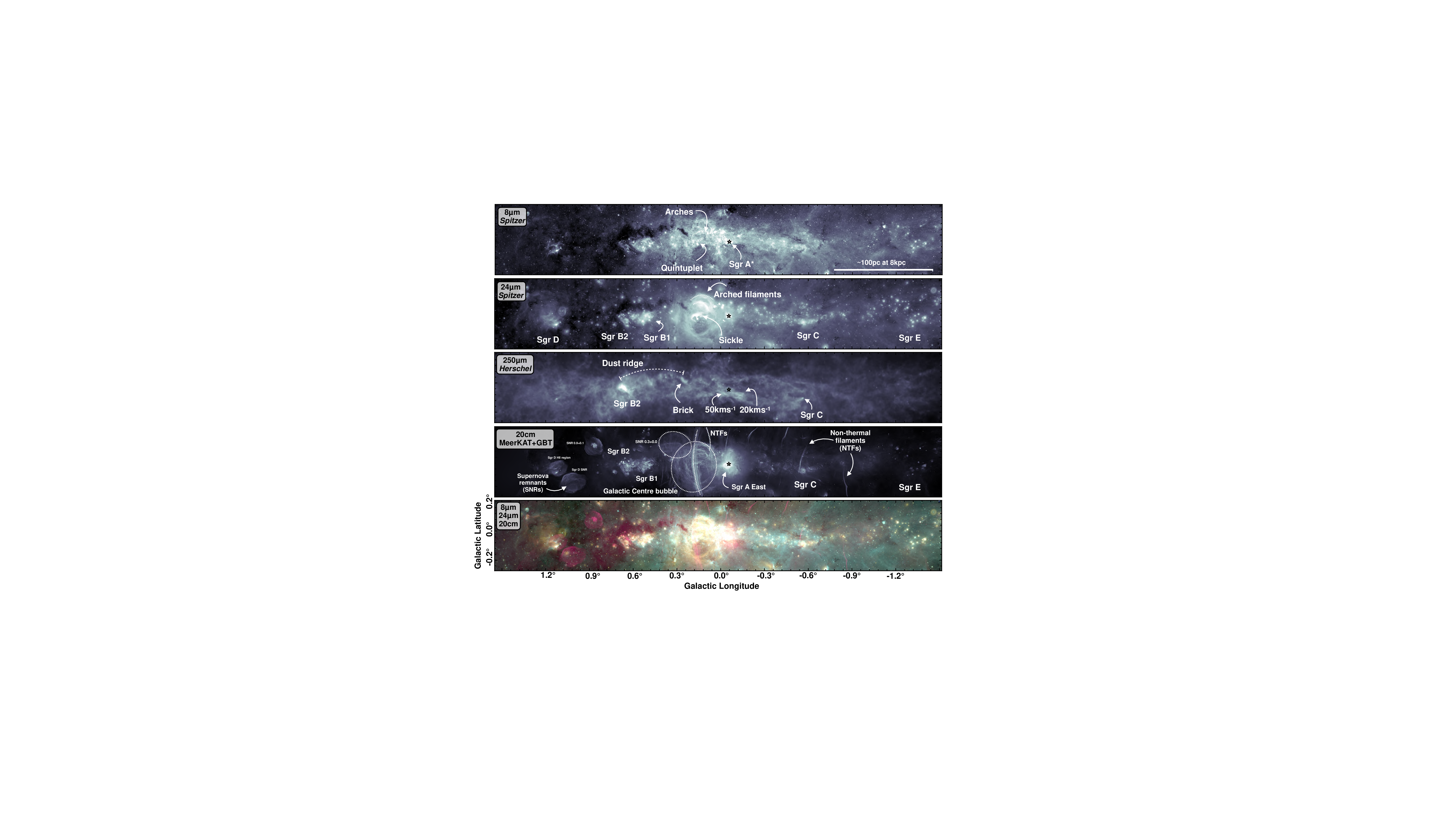
PPVII review: Henshaw, Barnes, Battersby, Ginsburg, Sormani, Walker
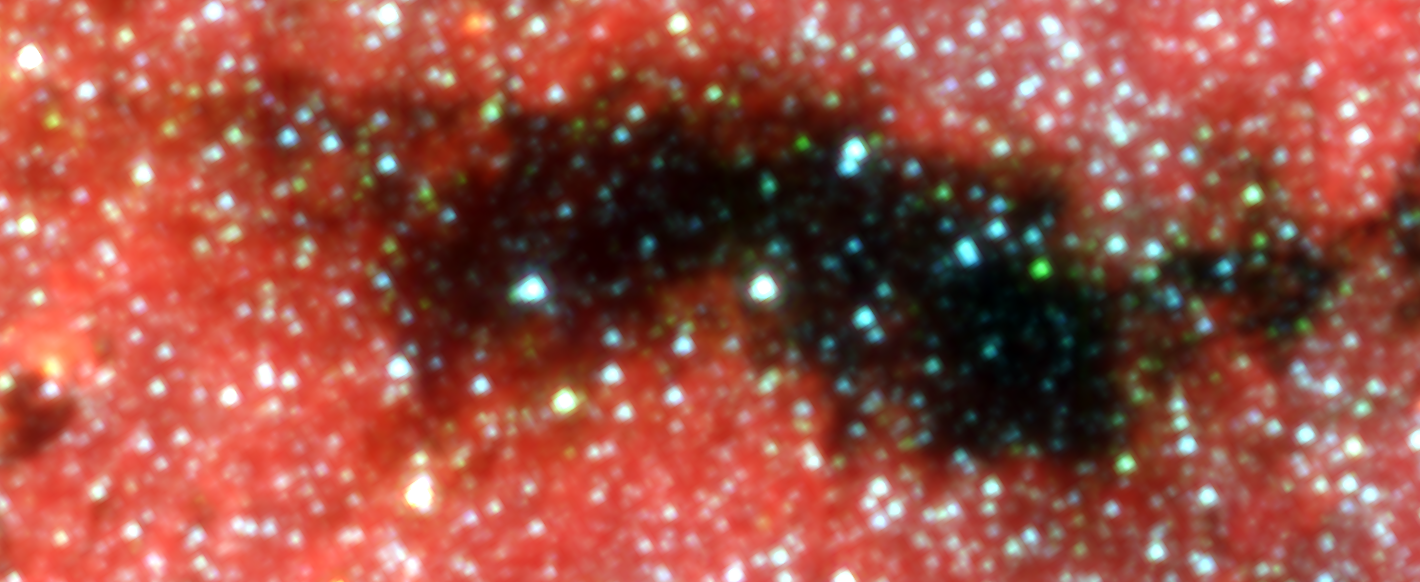
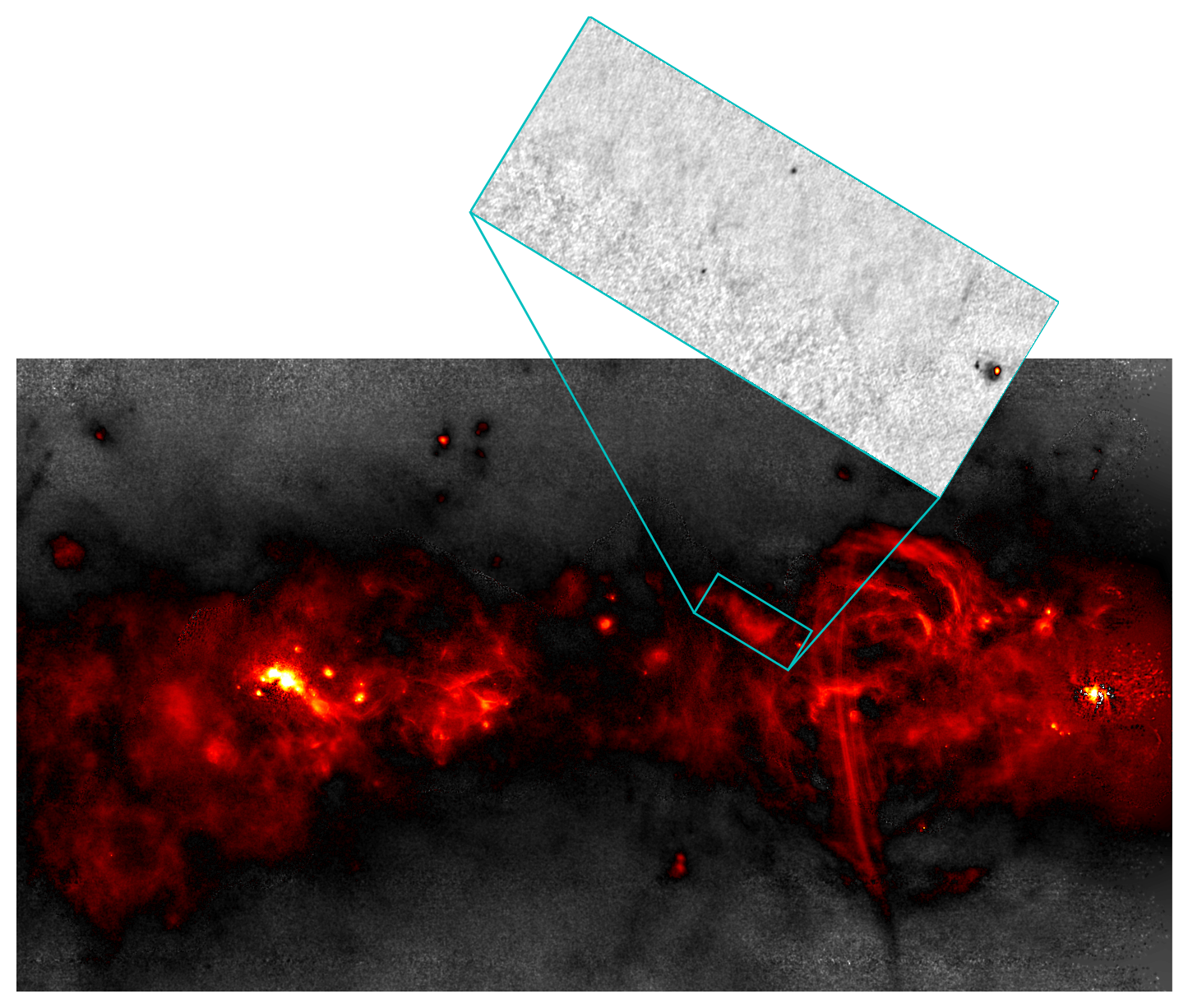
despite a total mass ~105 M⊙ in <3 pc
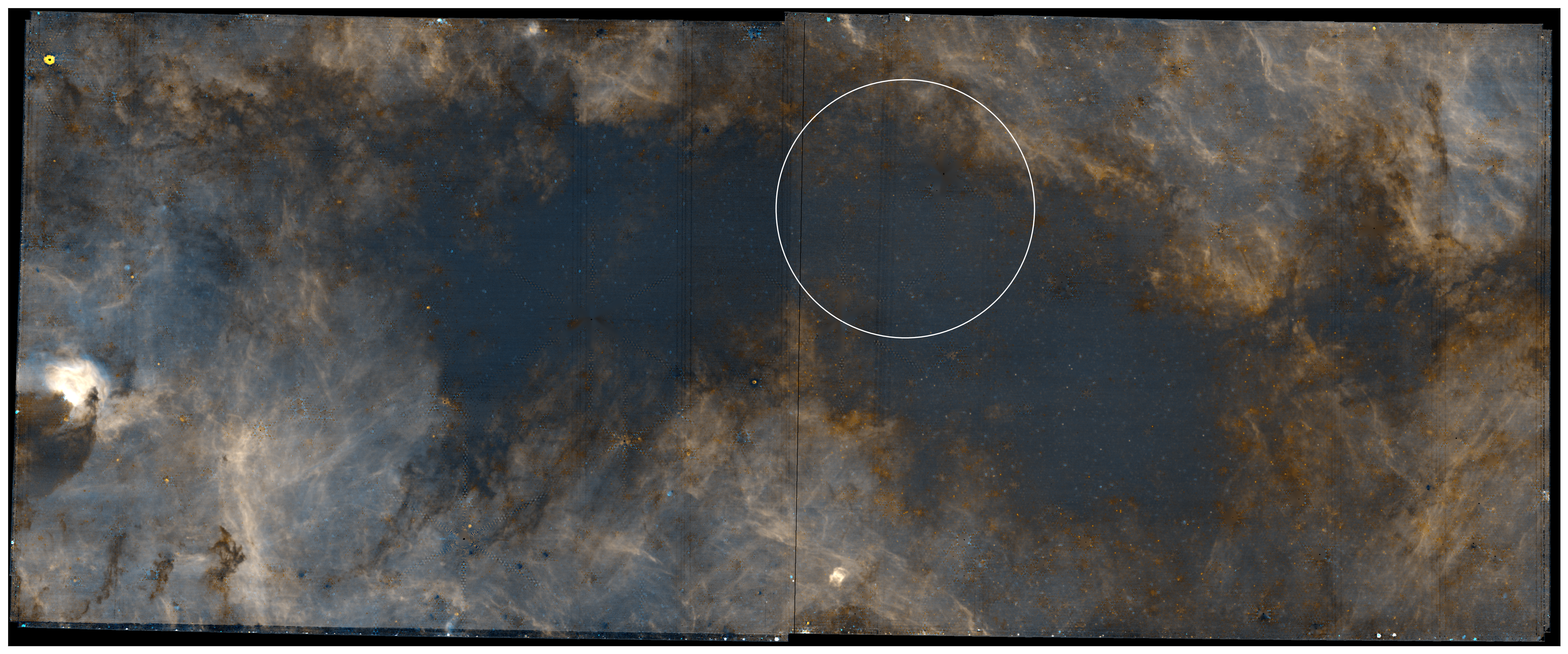
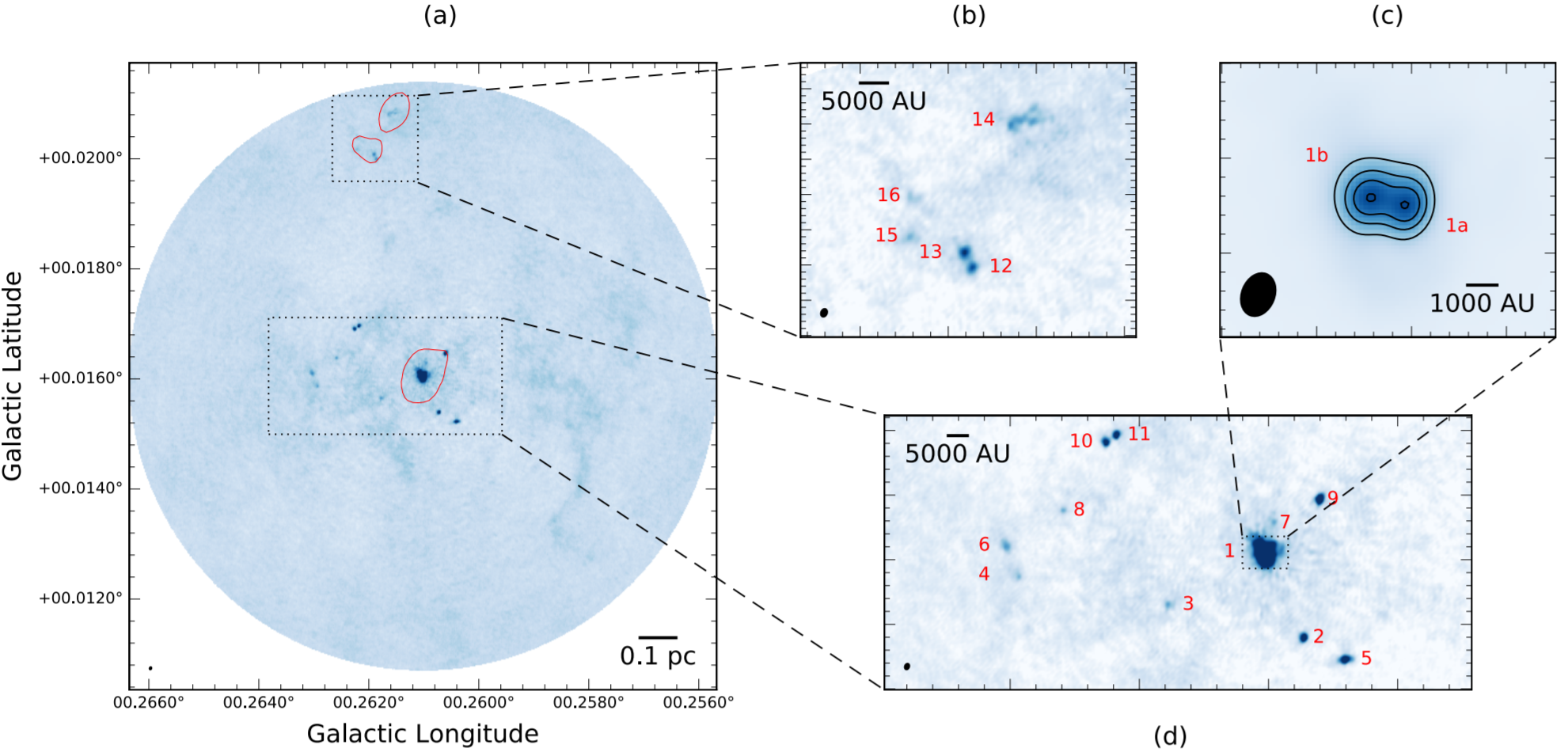
Walker+ 2021
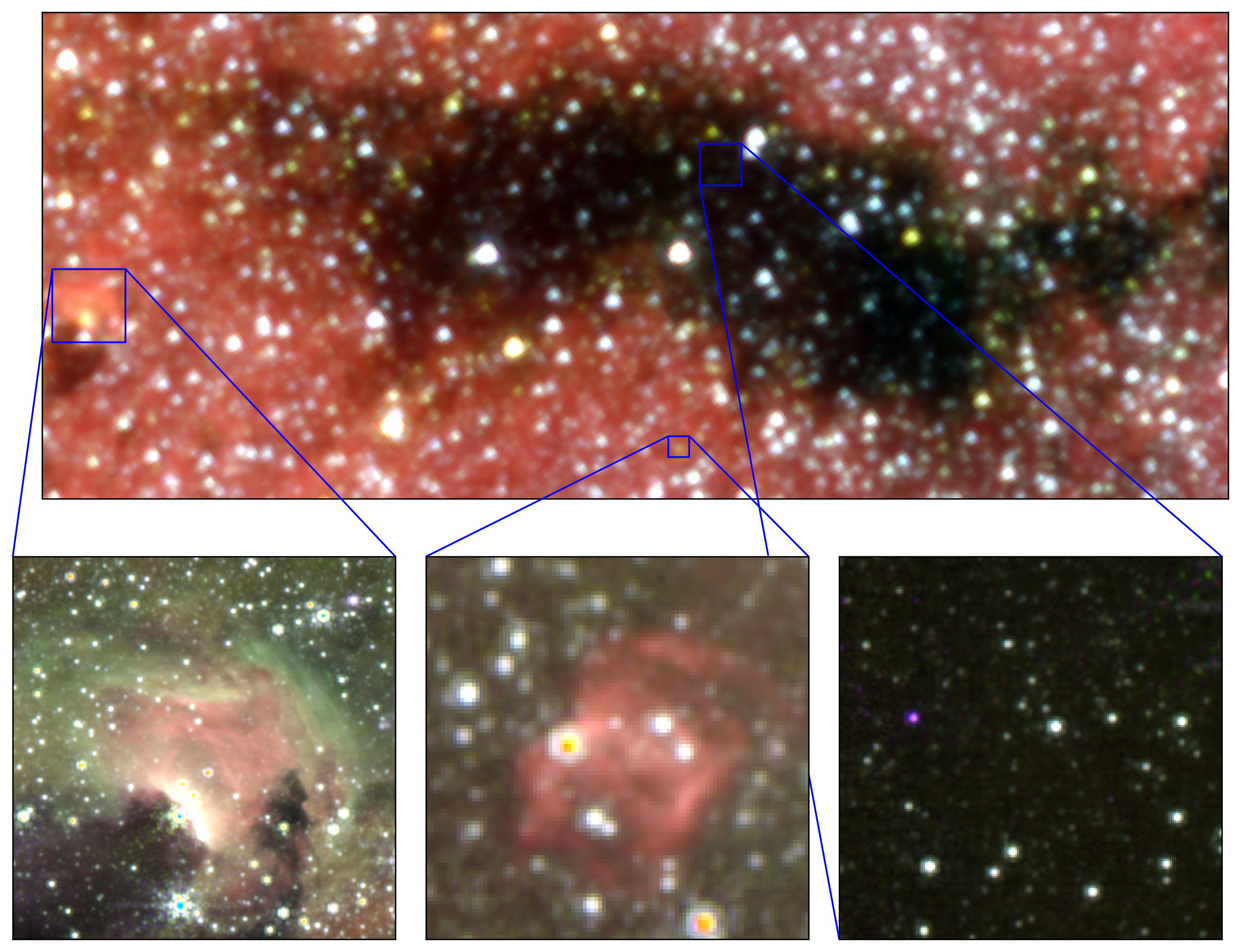


F466N
F405N
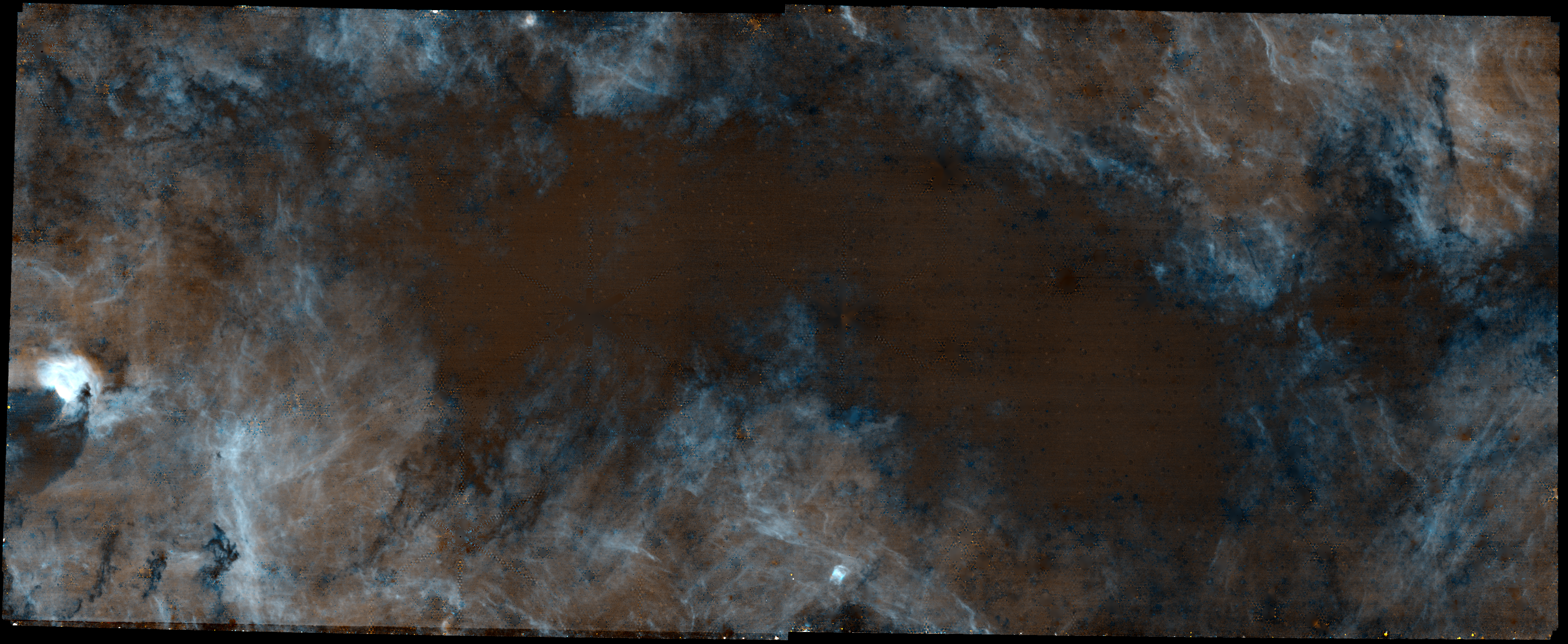

F466N
F405N
1-2 mag excess extinction (A4.66μm) at AV~60-90
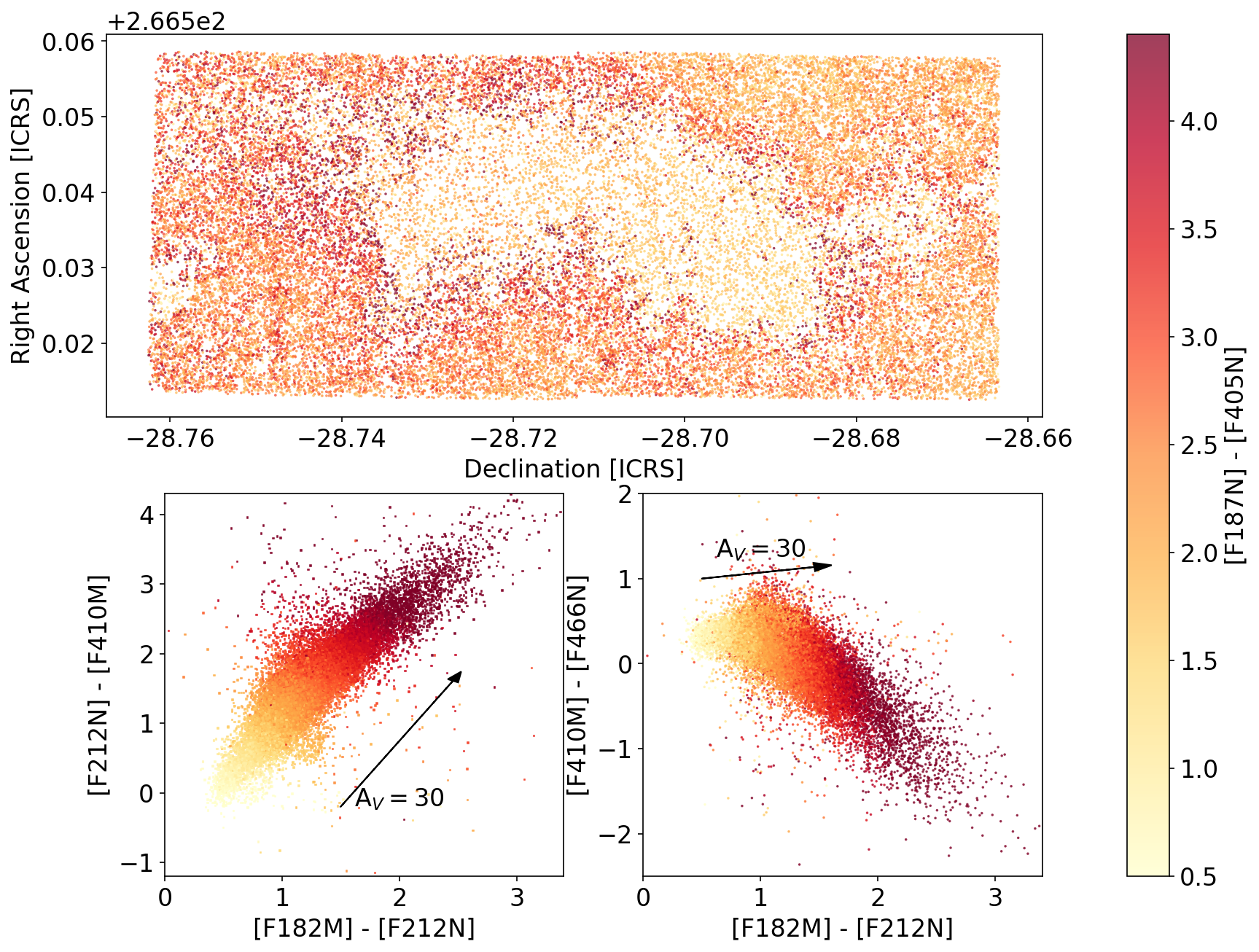
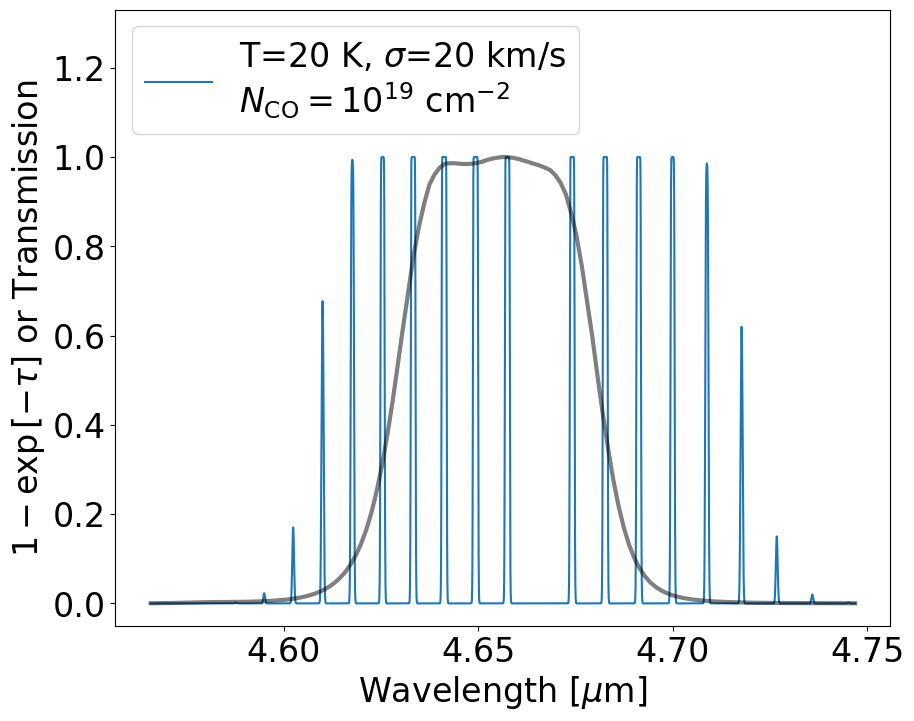
10% abs. = 0.1 mag
90% abs. = 2.5 mag
Gas absorption is limited to < 0.2 mag
Observed absorption goes to at least 2 mag (though lower limits go higher still)
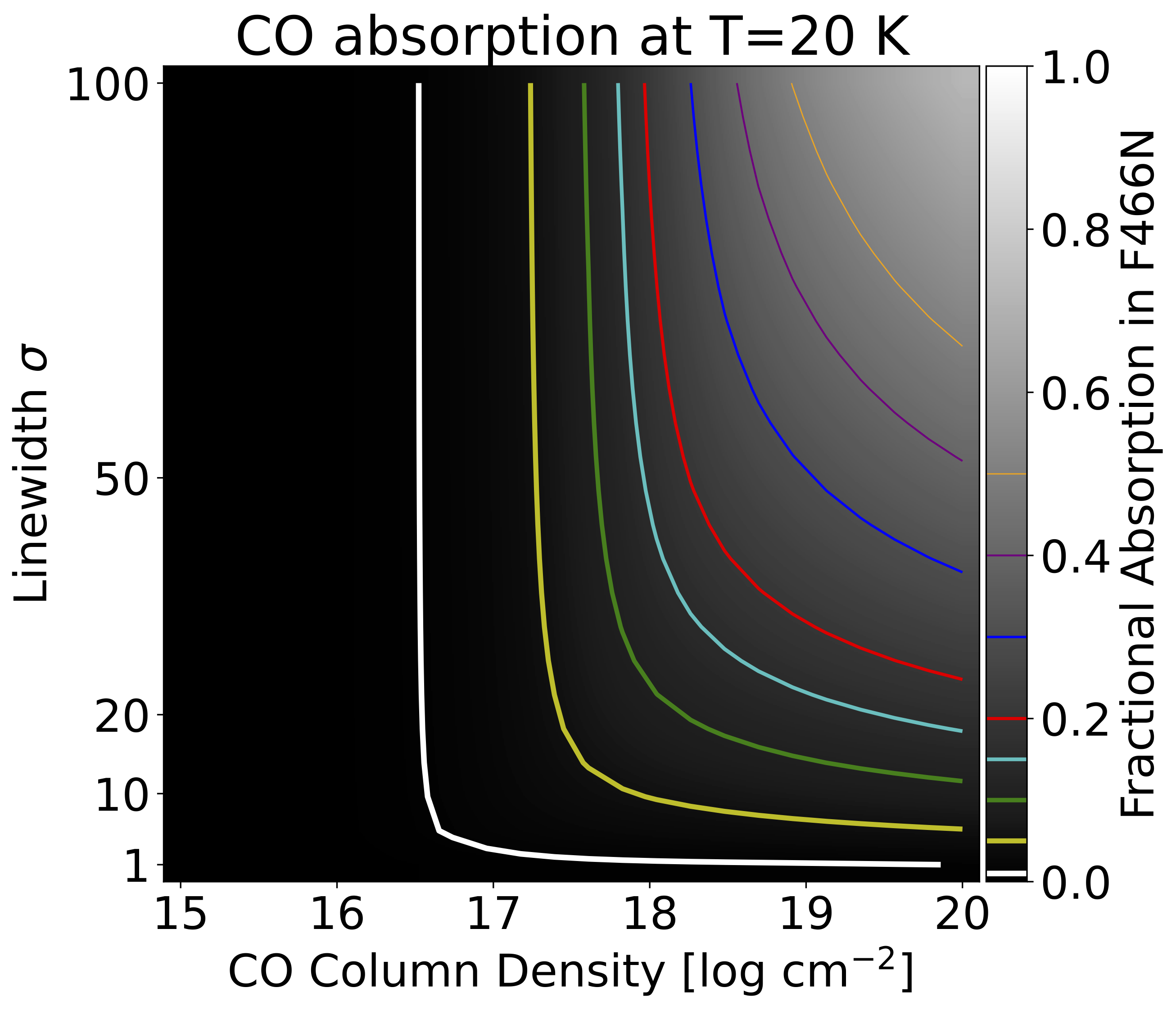
Blue is Pfβ & Huε, absorbed.


F466N
F405N
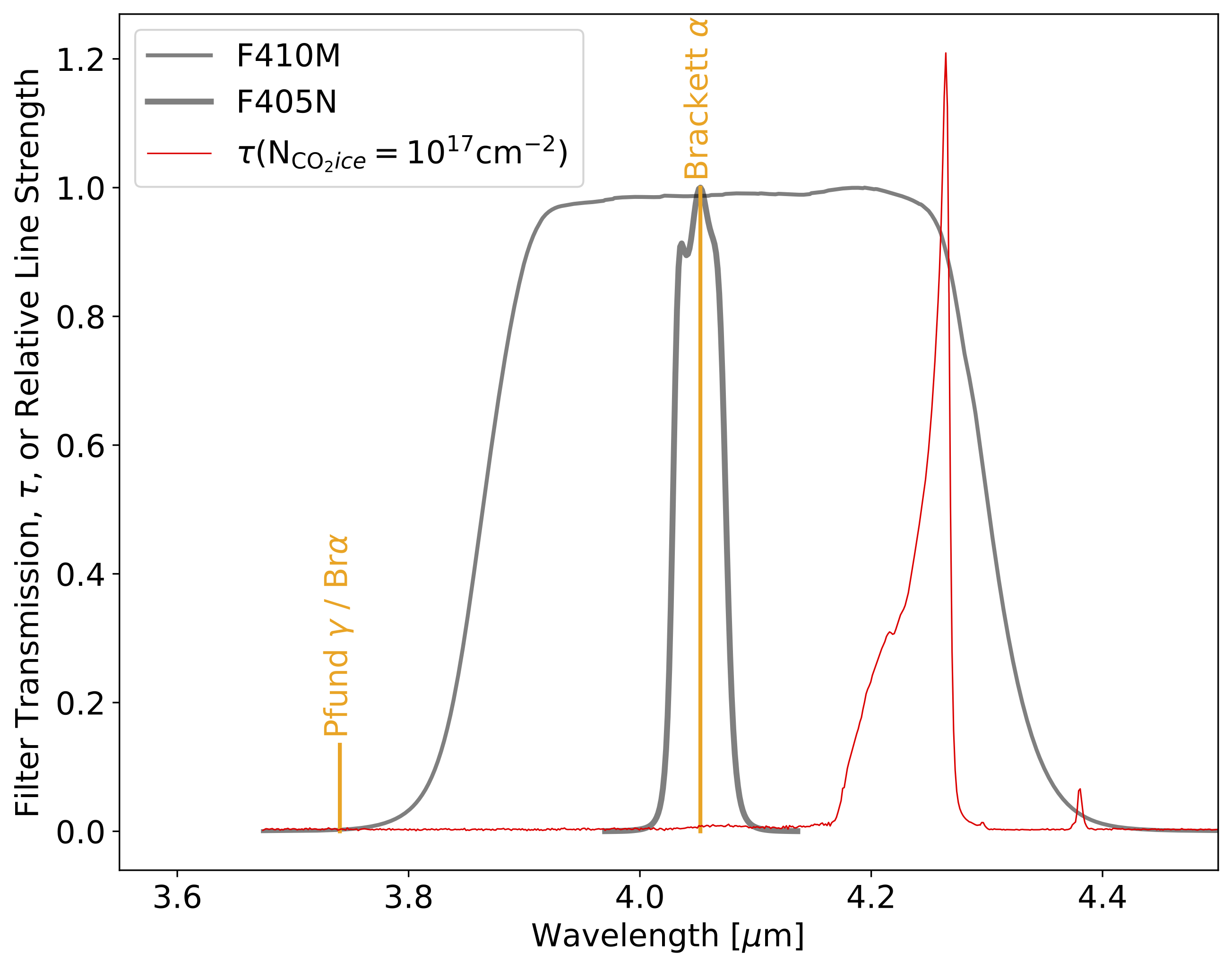
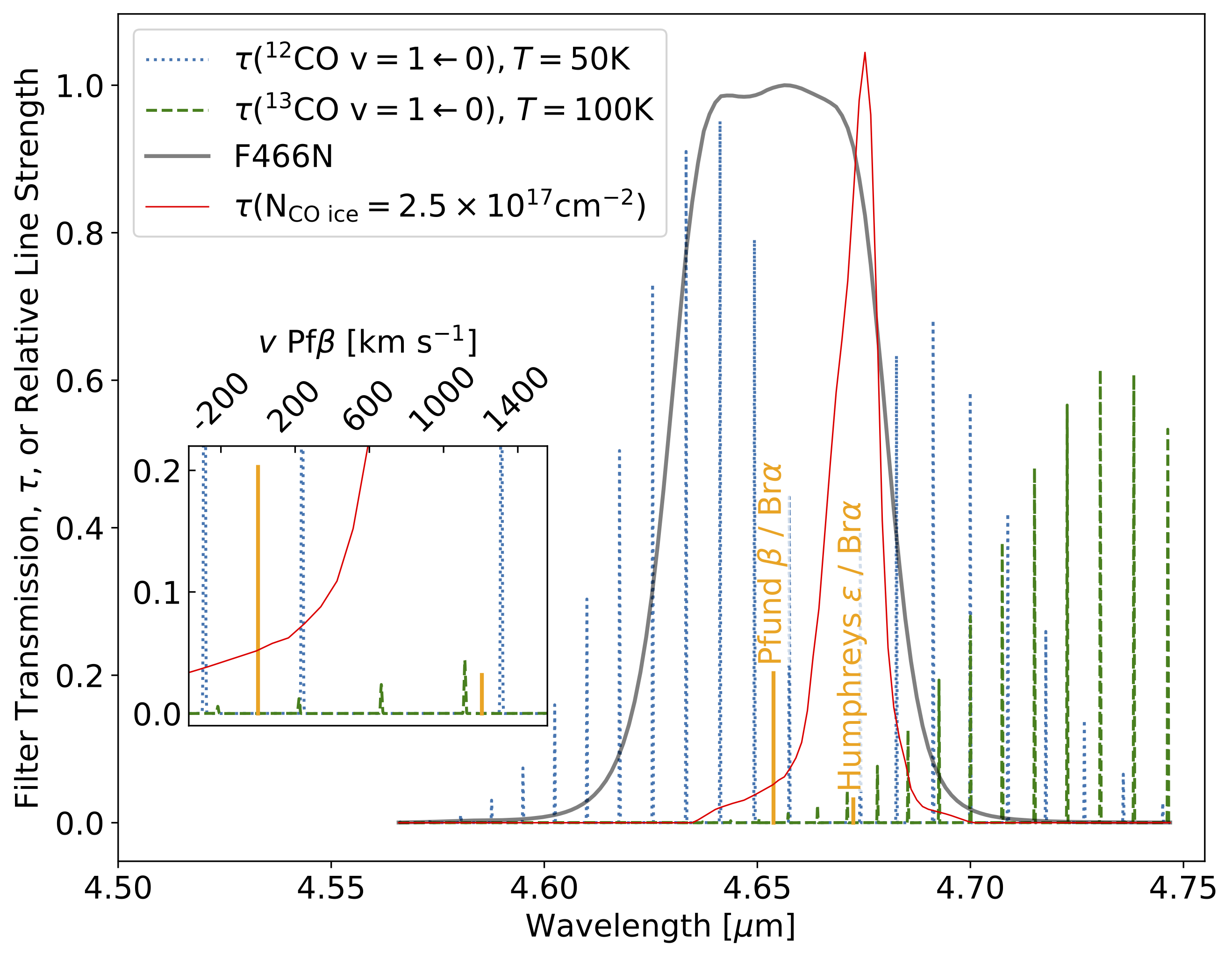

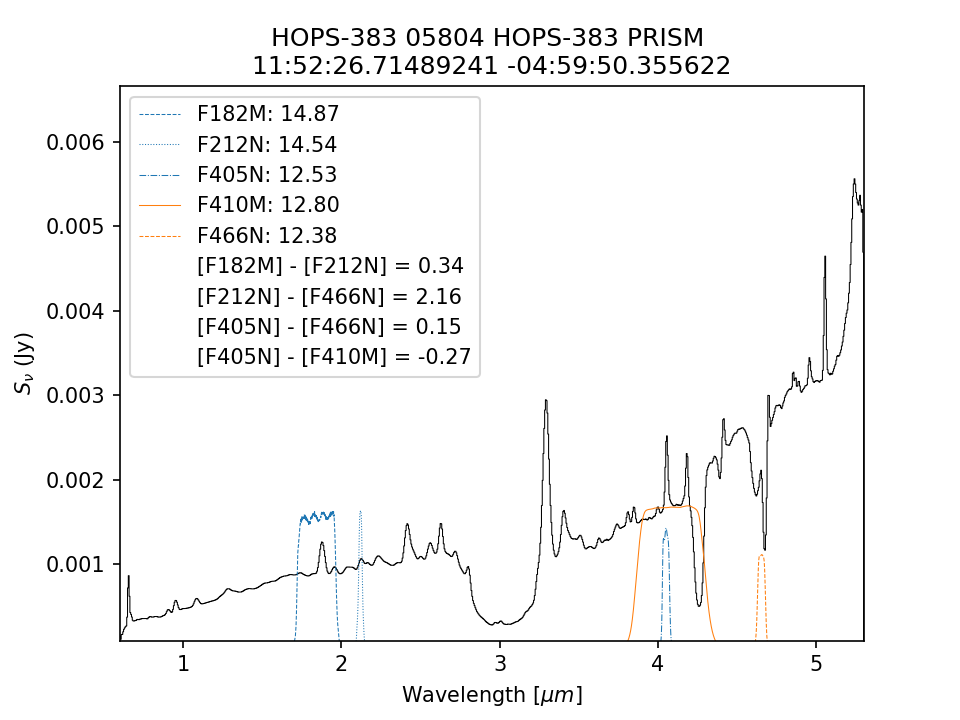
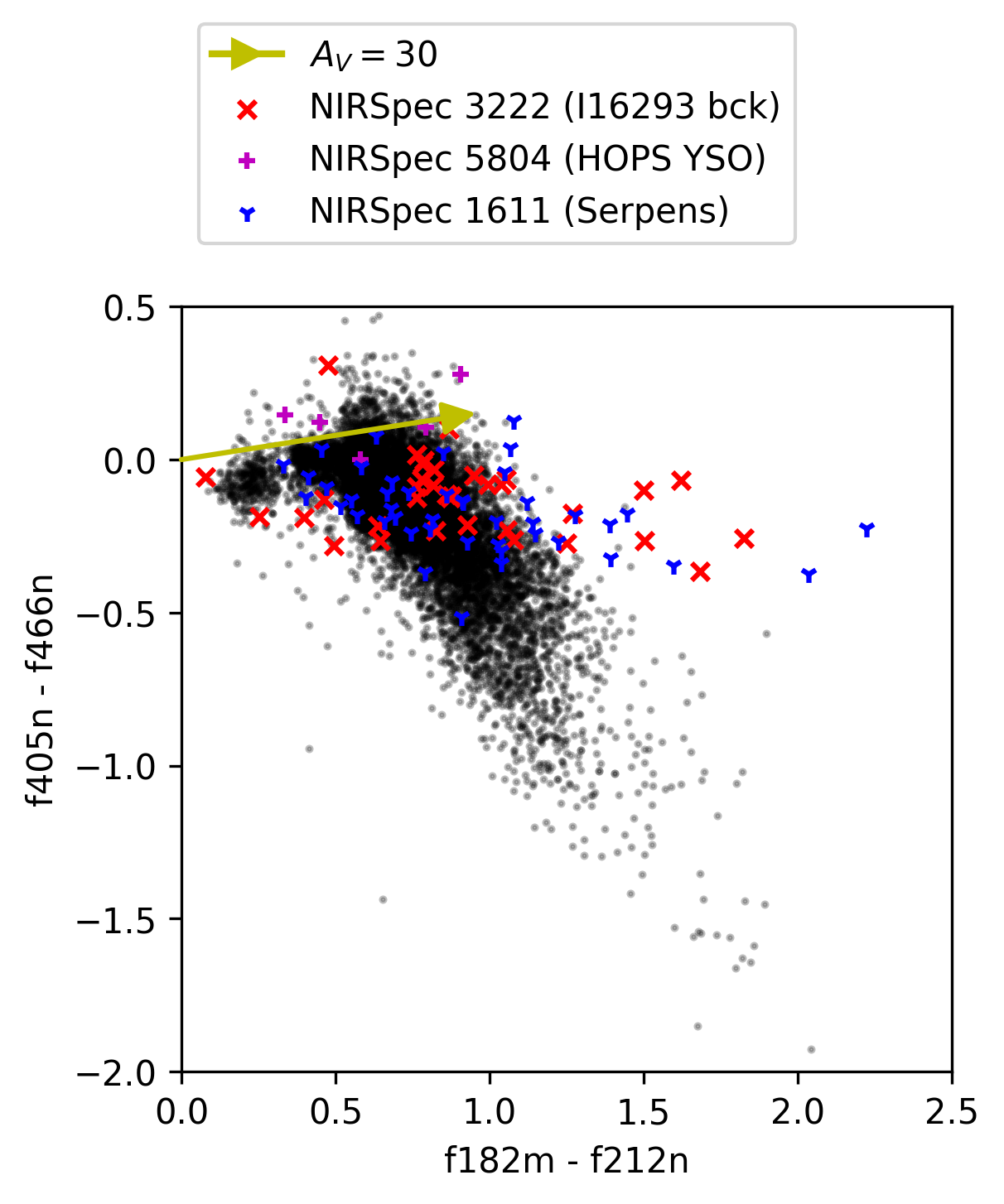
≈ A$_V$
≈ N(CO)


F466N: CO, XCN, H$_2$O
F405N: Weak absorption
F405N: Weak absorption
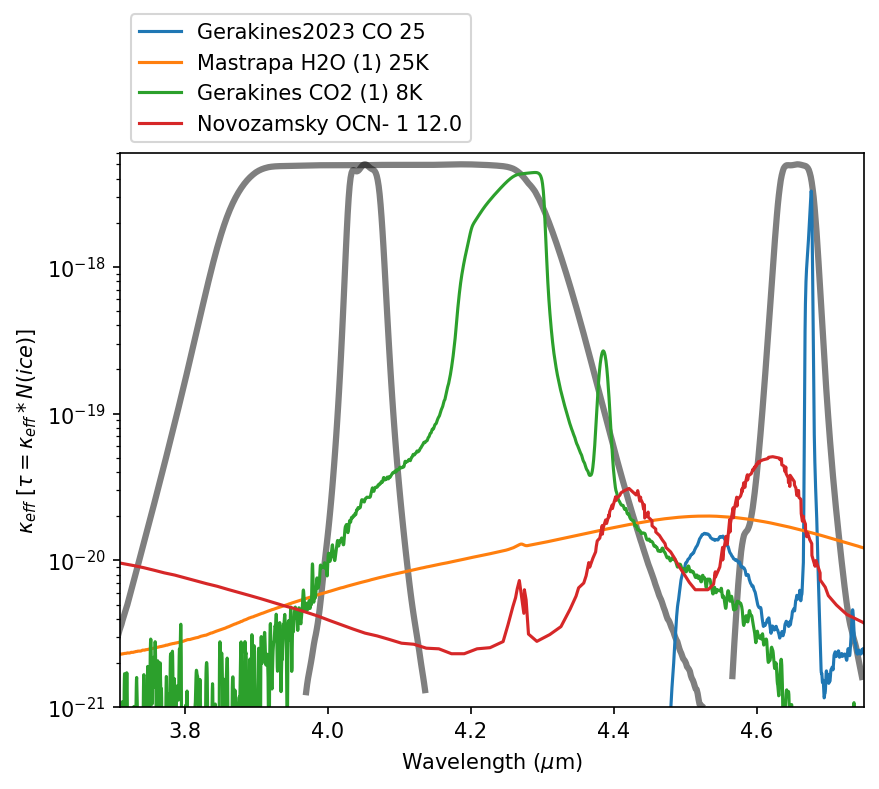
Colors constrain ice mixtures
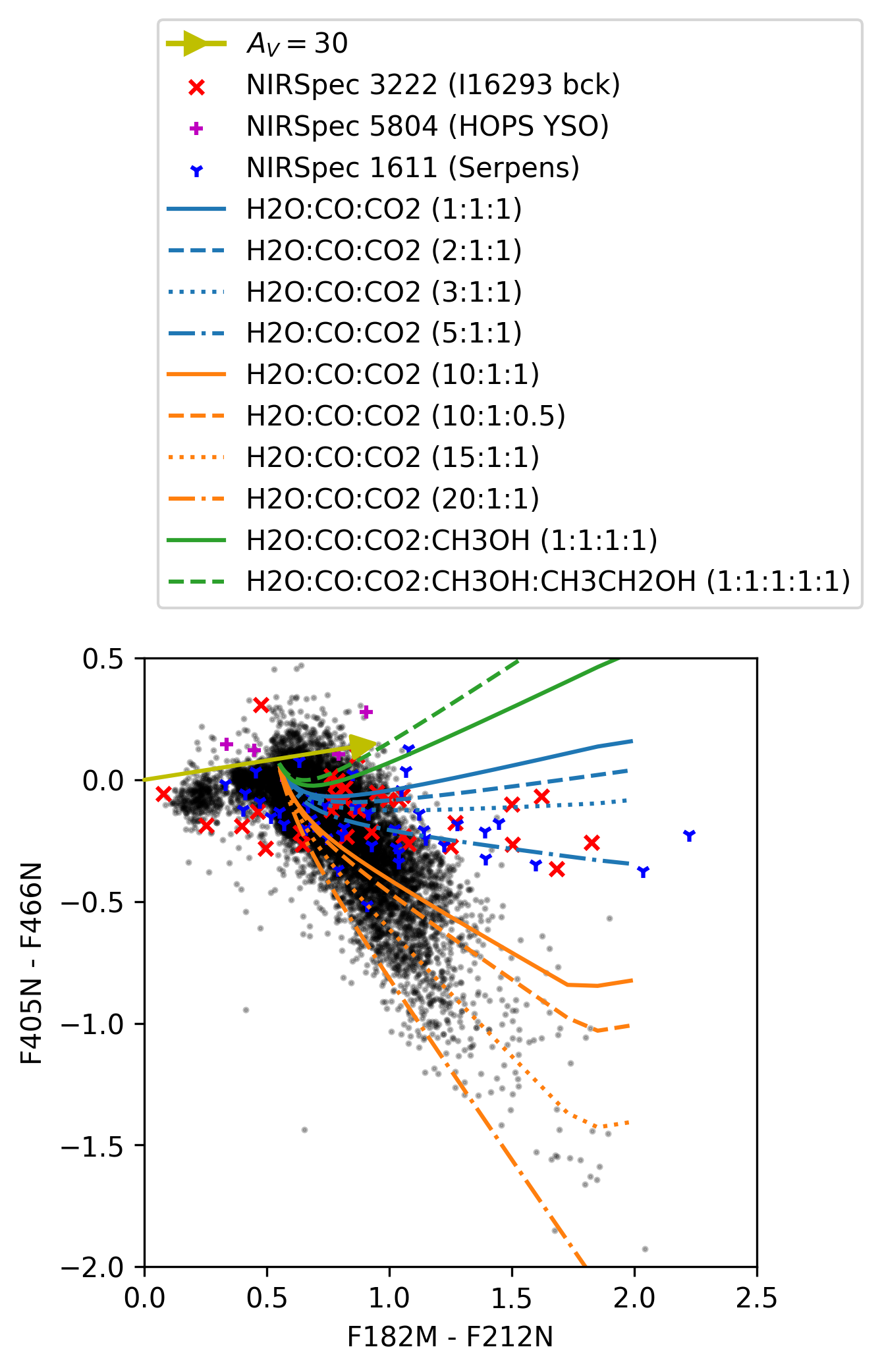

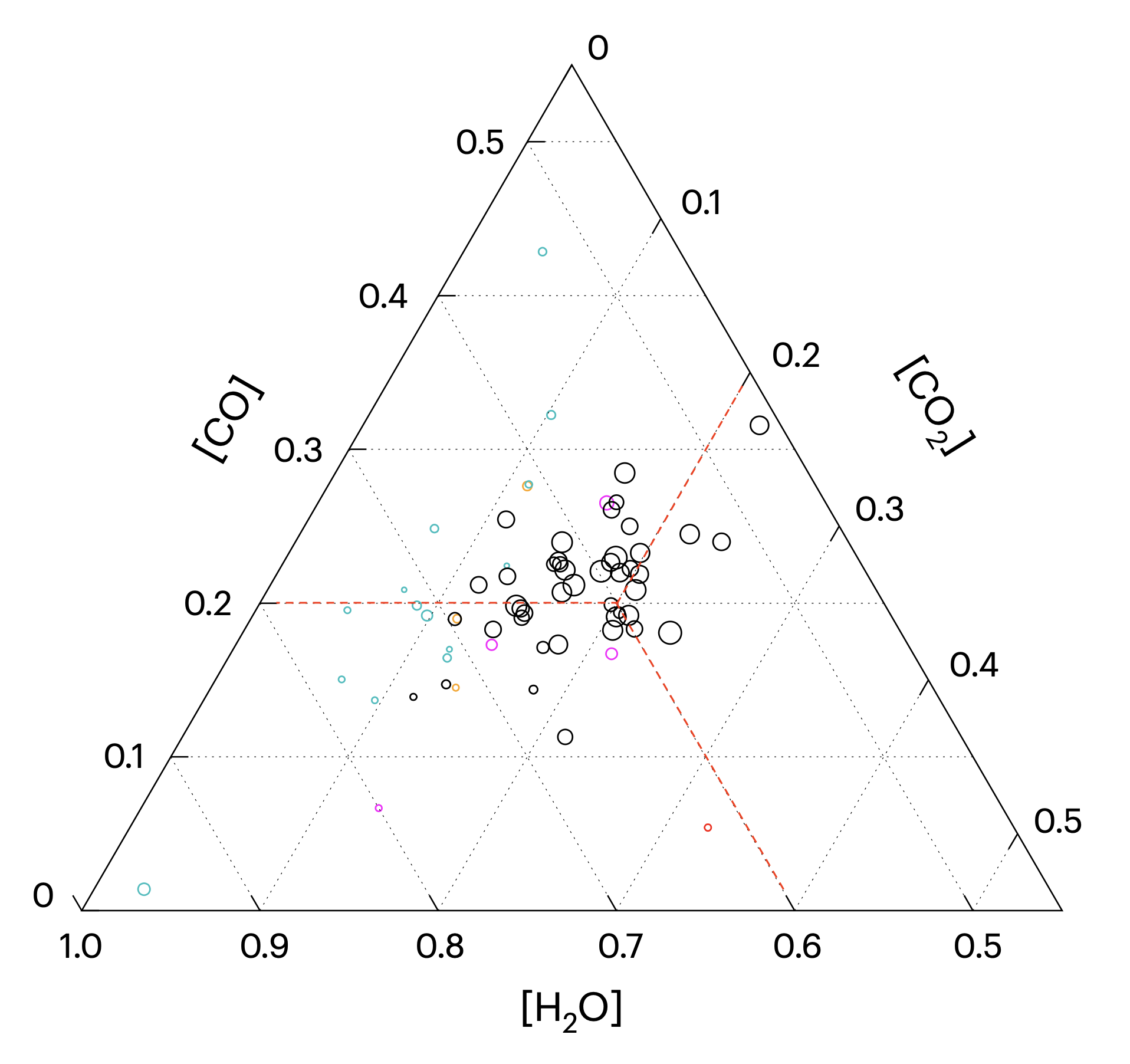
Smith+ 2025:
Local clouds ~ 3:1:1
H$_2$O:CO:CO$_2$
Local clouds ~ 3:1:1
H$_2$O:CO:CO$_2$
If we adopt those ice models, we can infer the CO ice column density
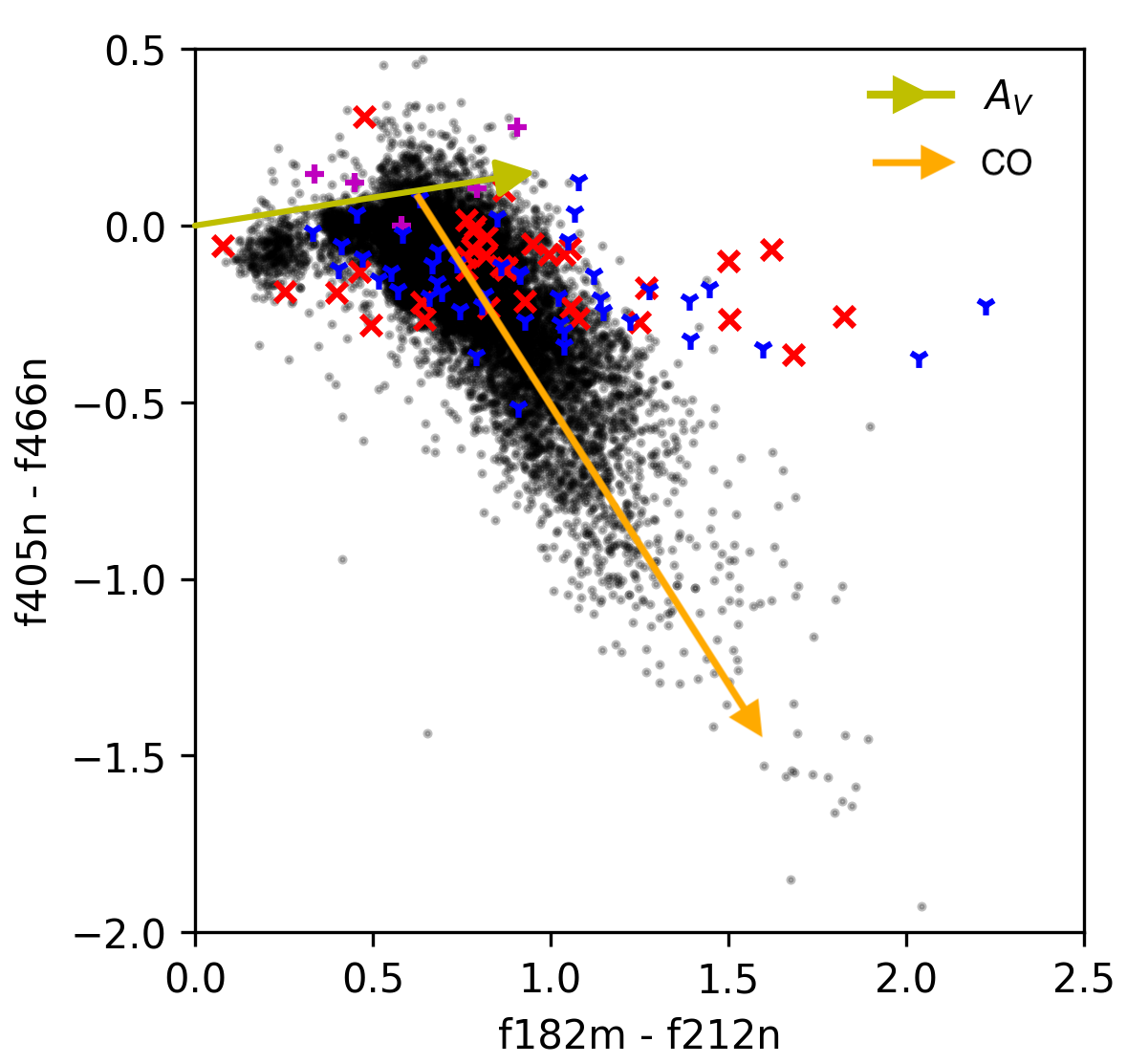
If we adopt those ice models, we can infer the CO ice column density
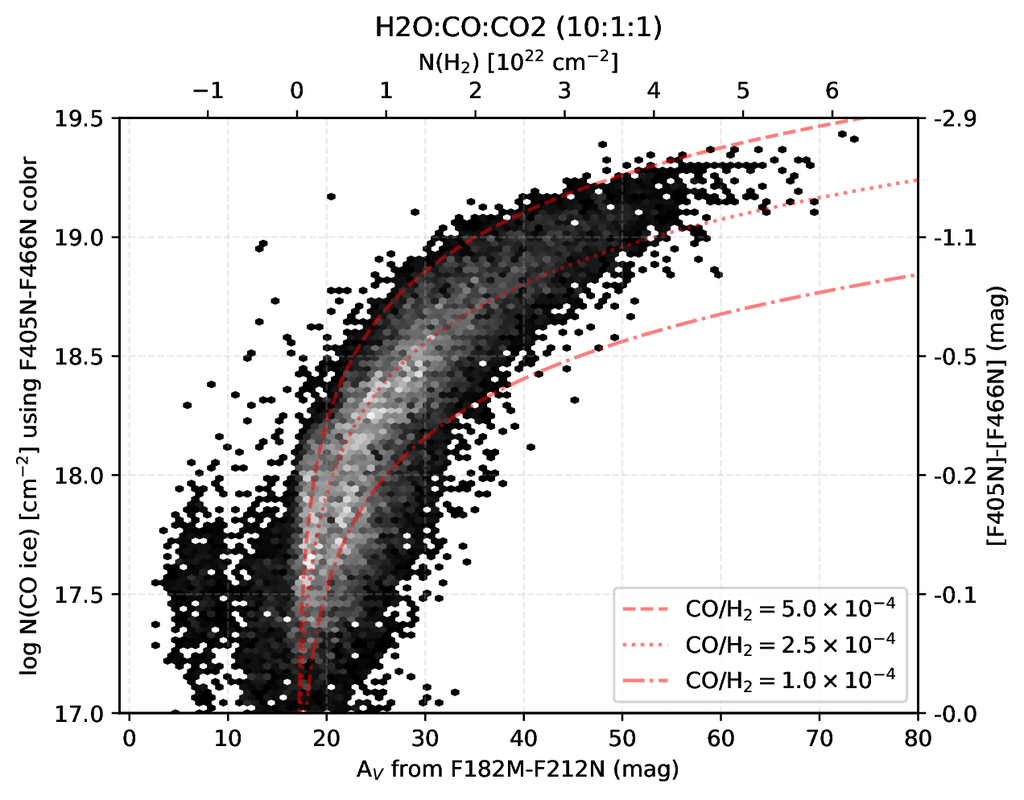
Lots of stars: they map a coherent structure
Stars are bluer (icier) toward the center
Stars are bluer (icier) toward the center
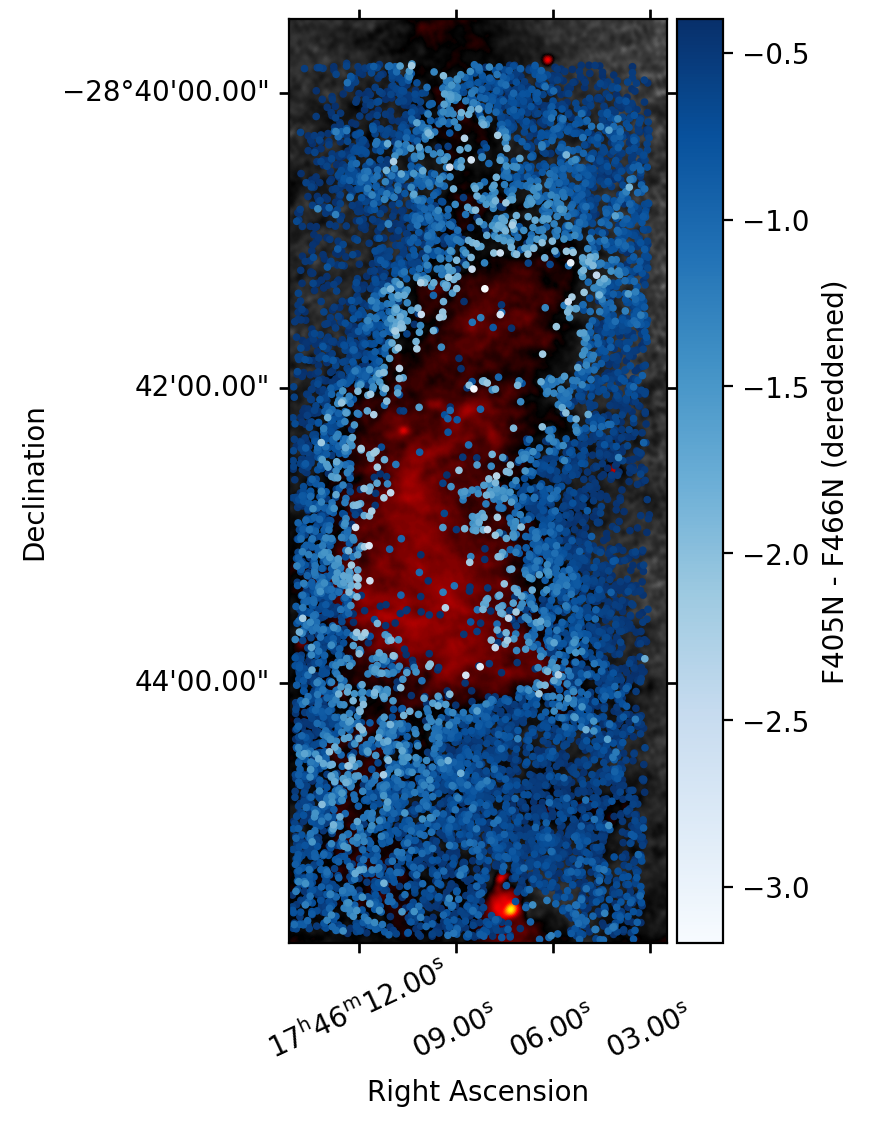
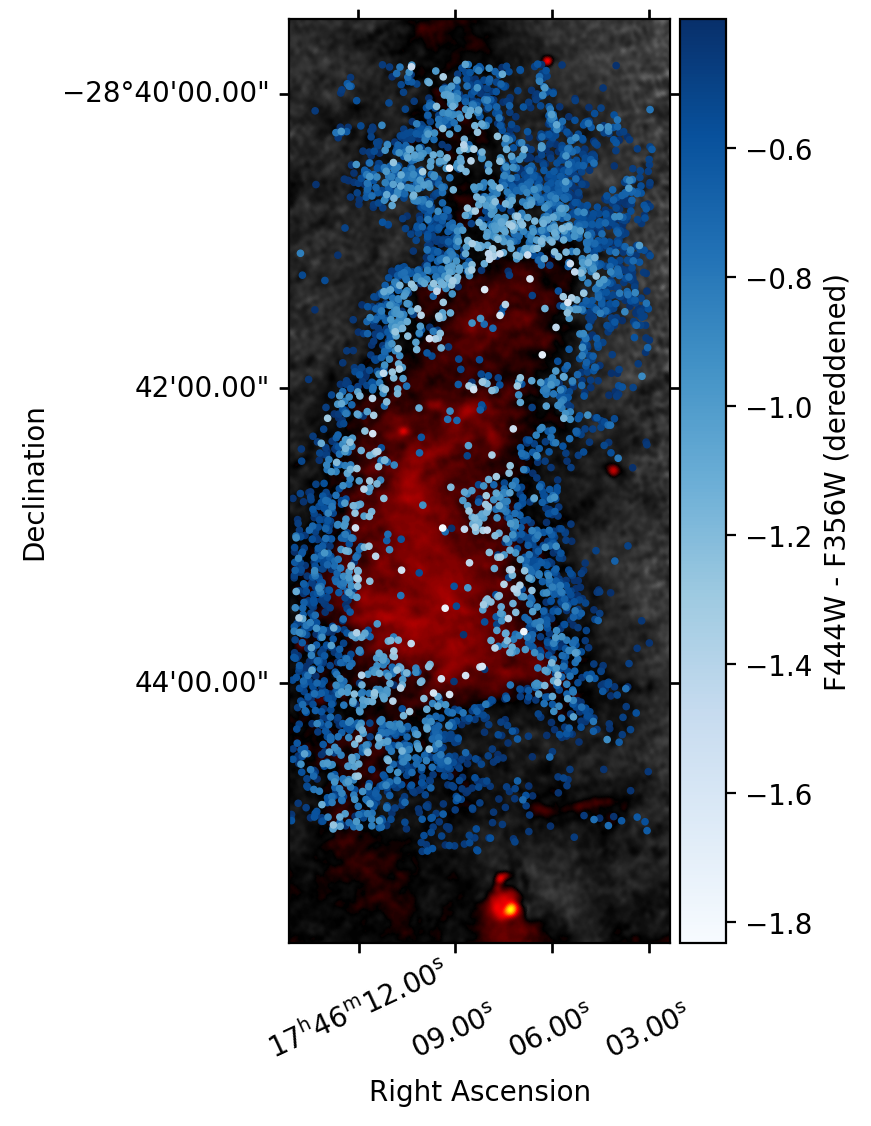
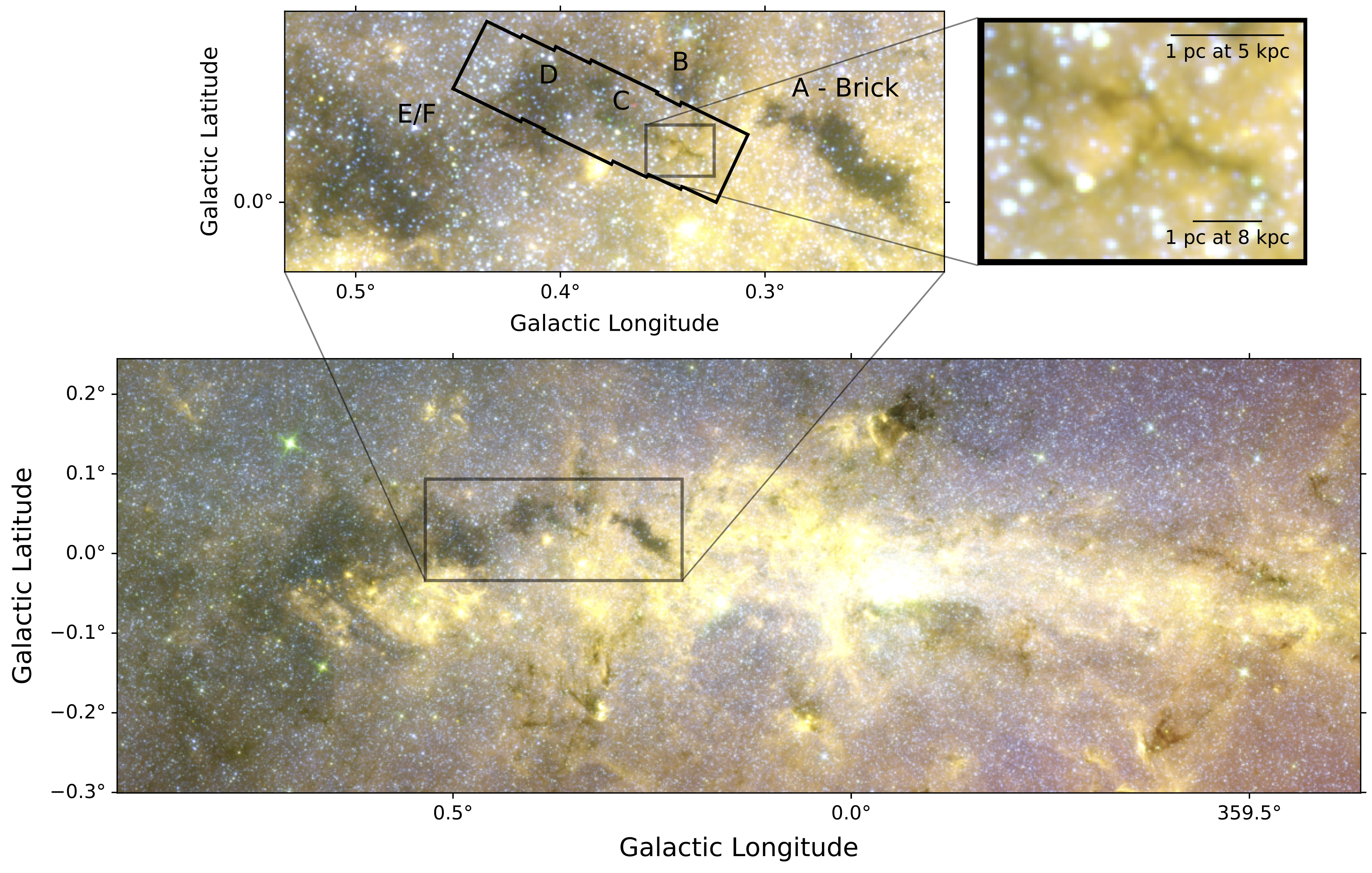
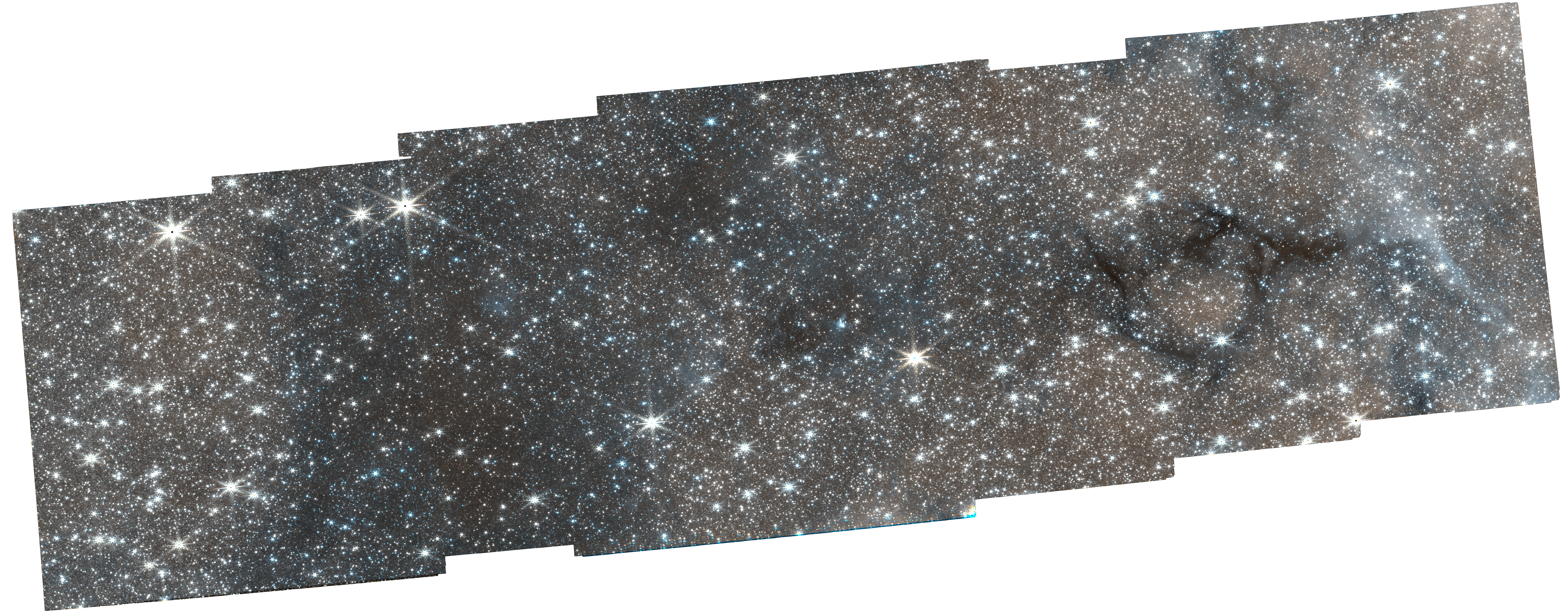
The Galactic Center Dust ridge is also icy...

... and has a foreground cloud in front


We measure ice via stellar absorption
There are clear environmental differences



- Smith+ 2025: 27 data points
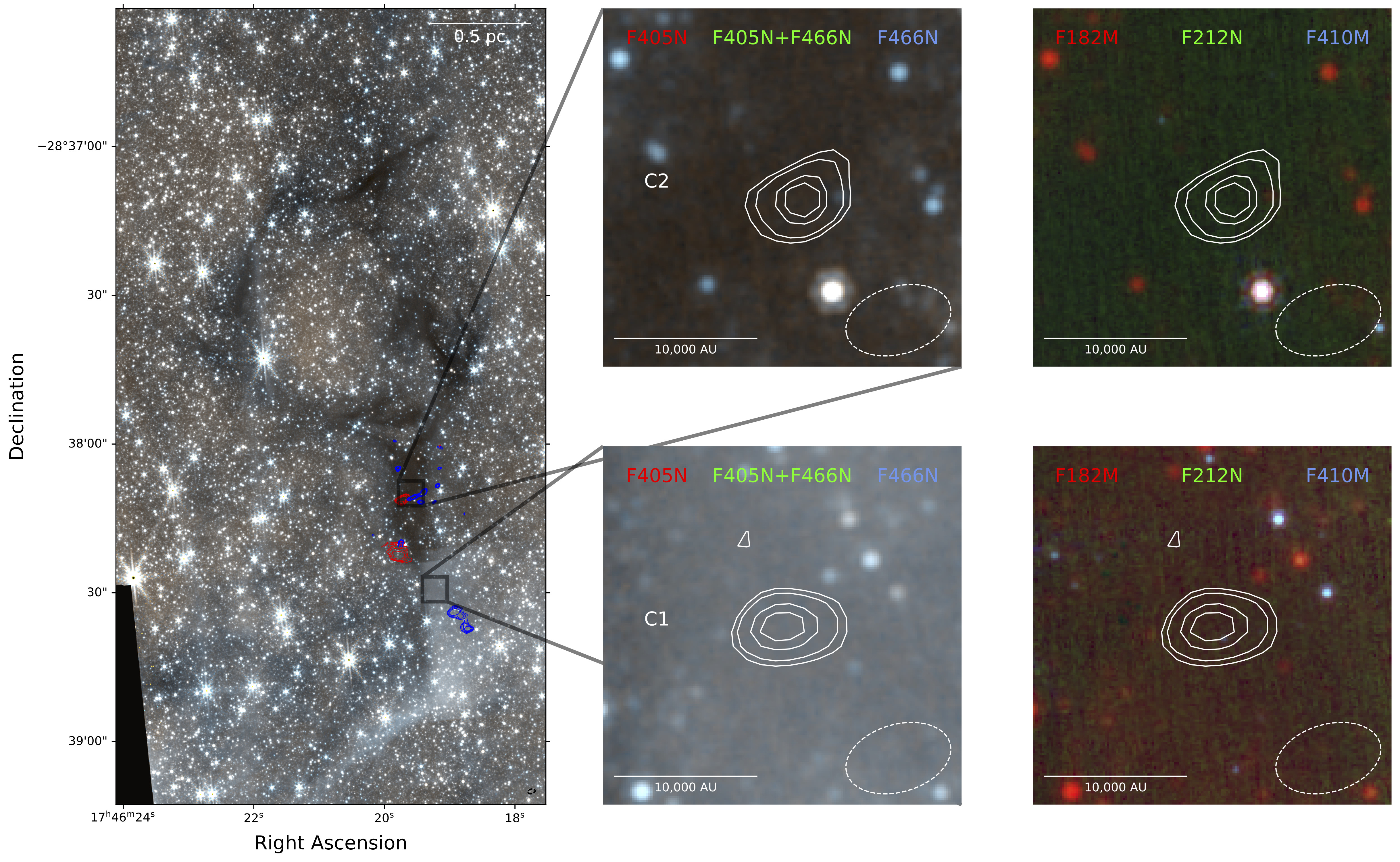
Column density maps - of H$_2$ and CO ice
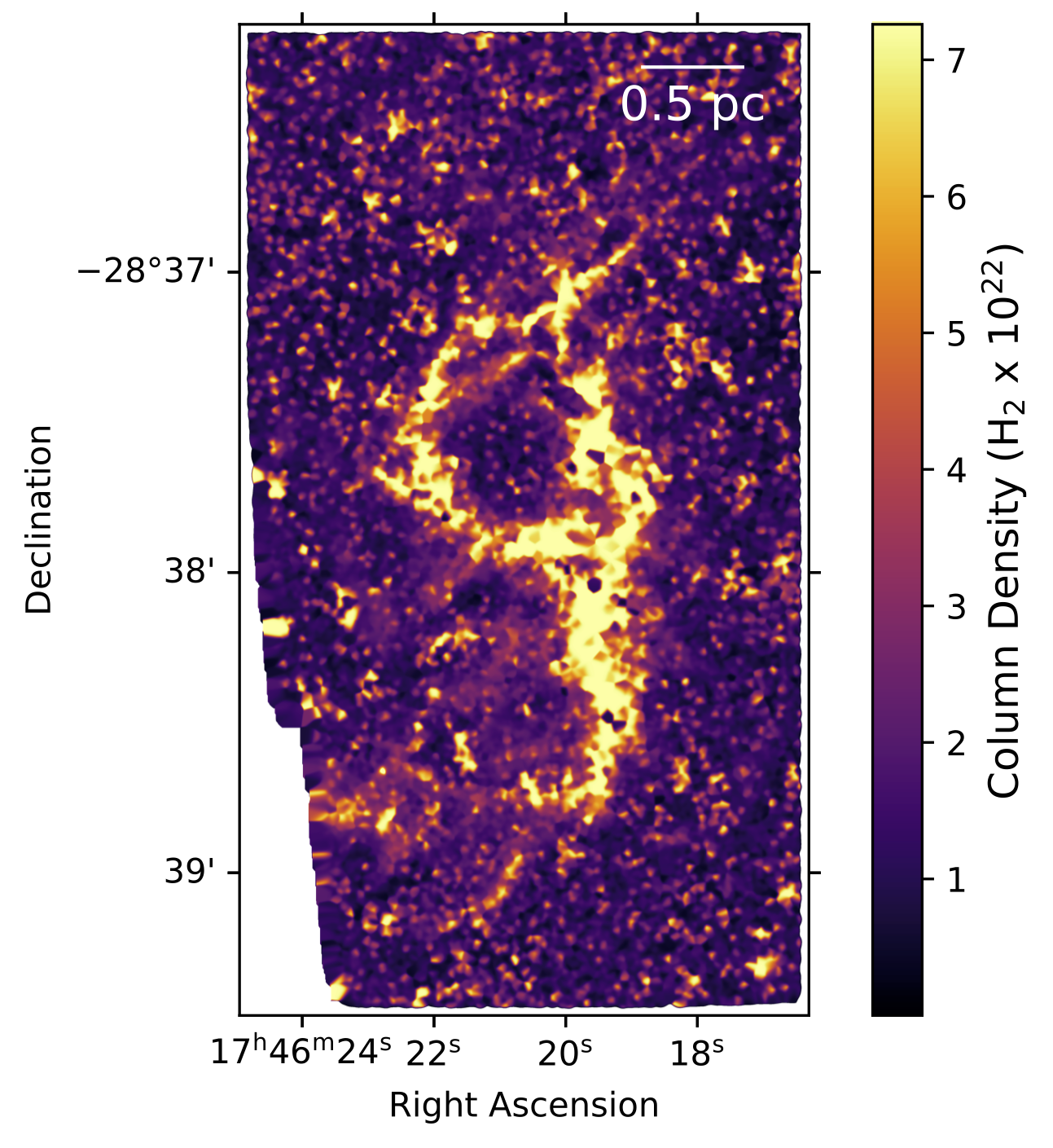
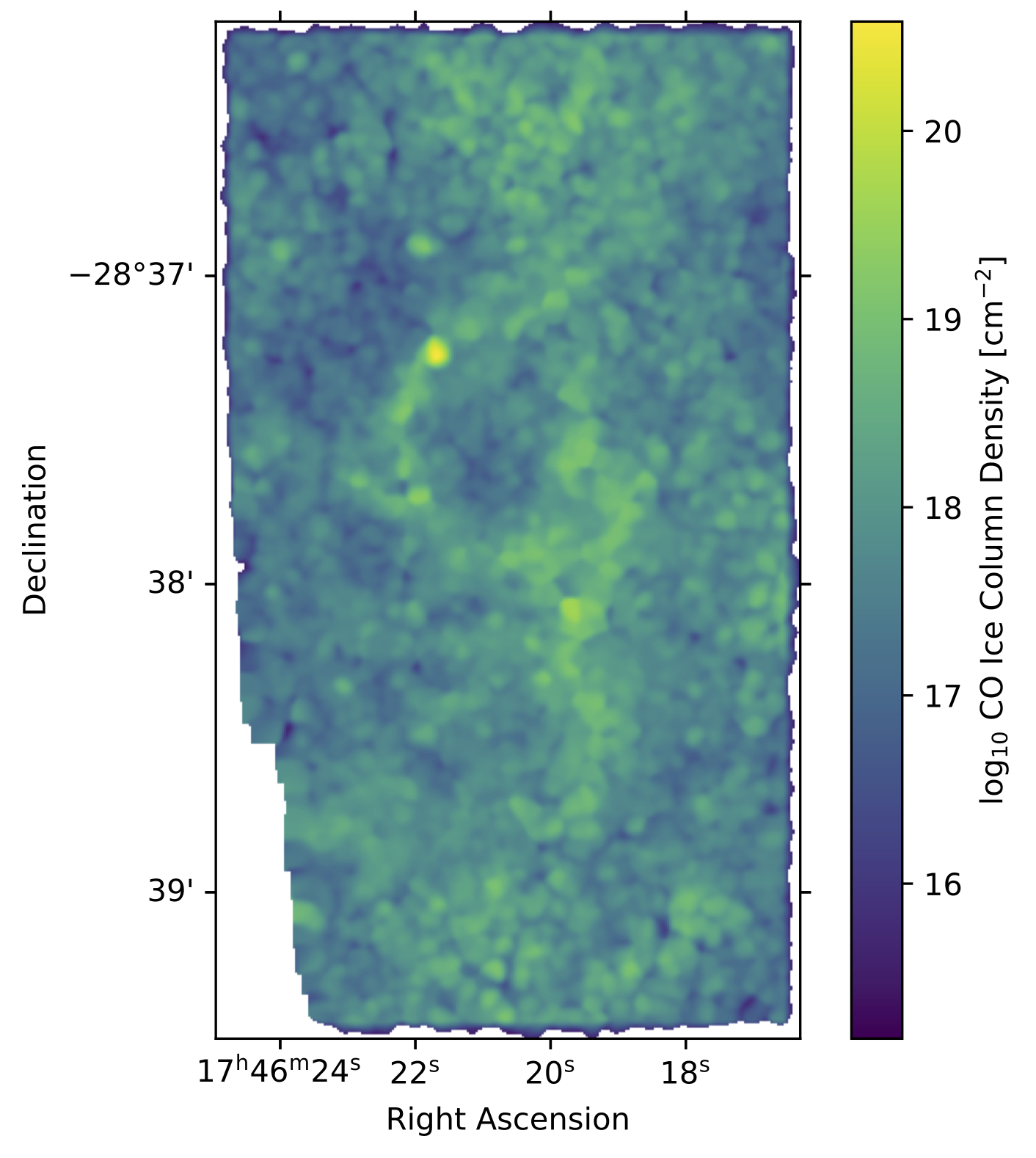
Both CO column and abundance are rising with column density
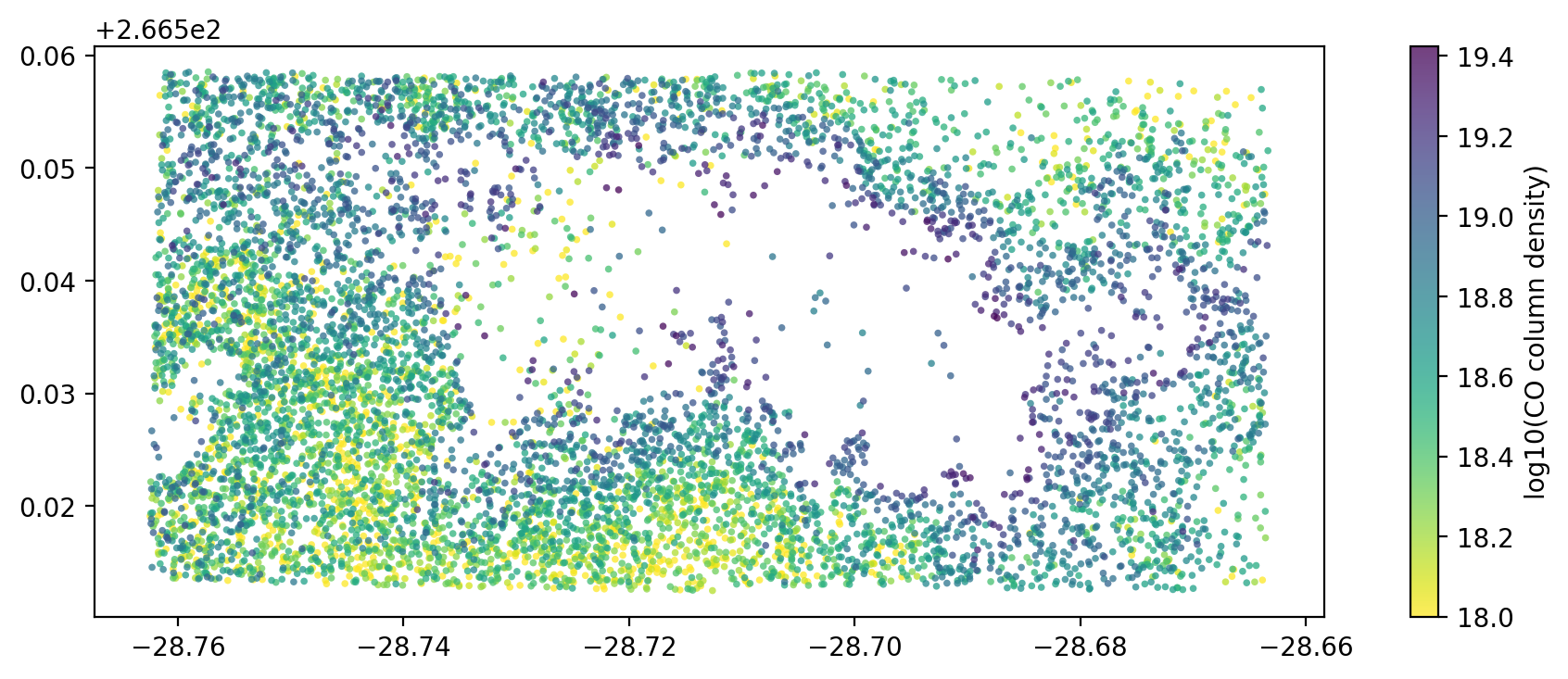
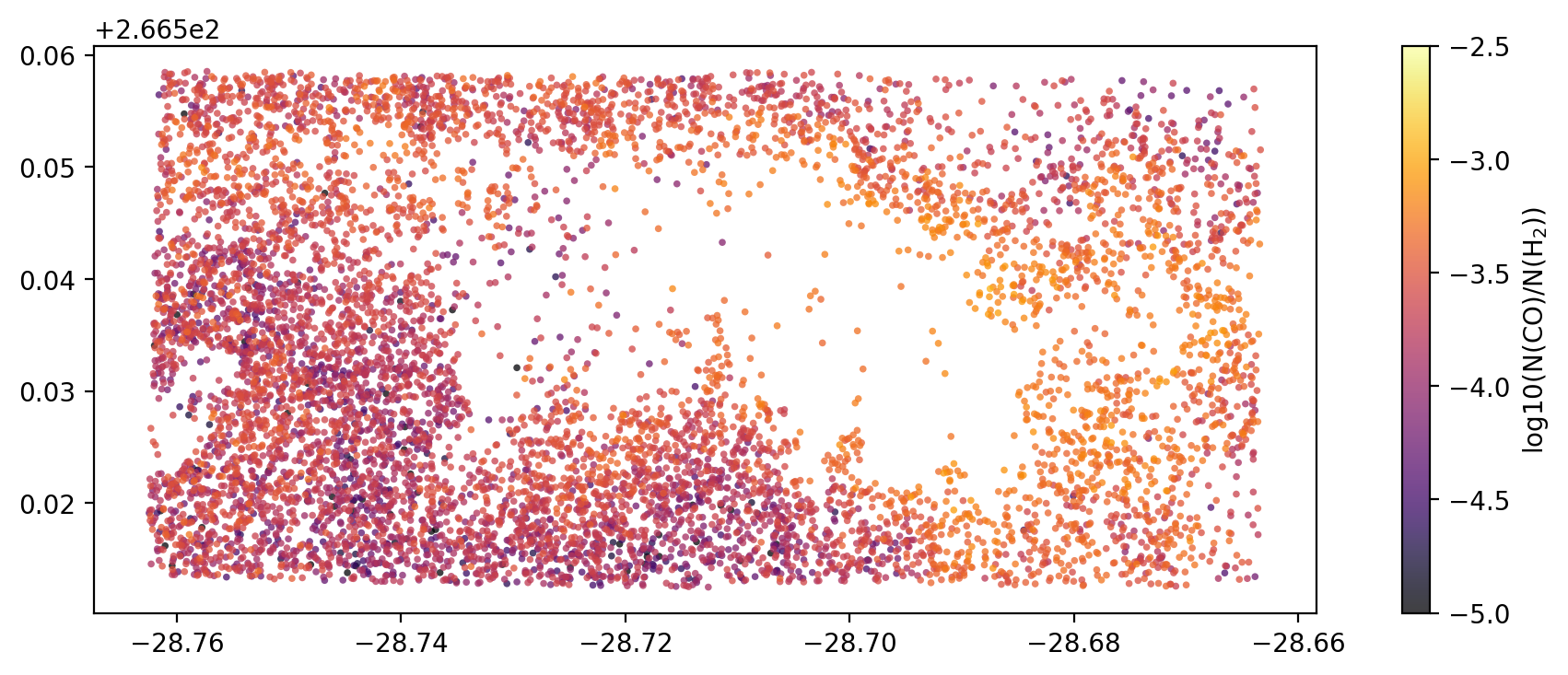
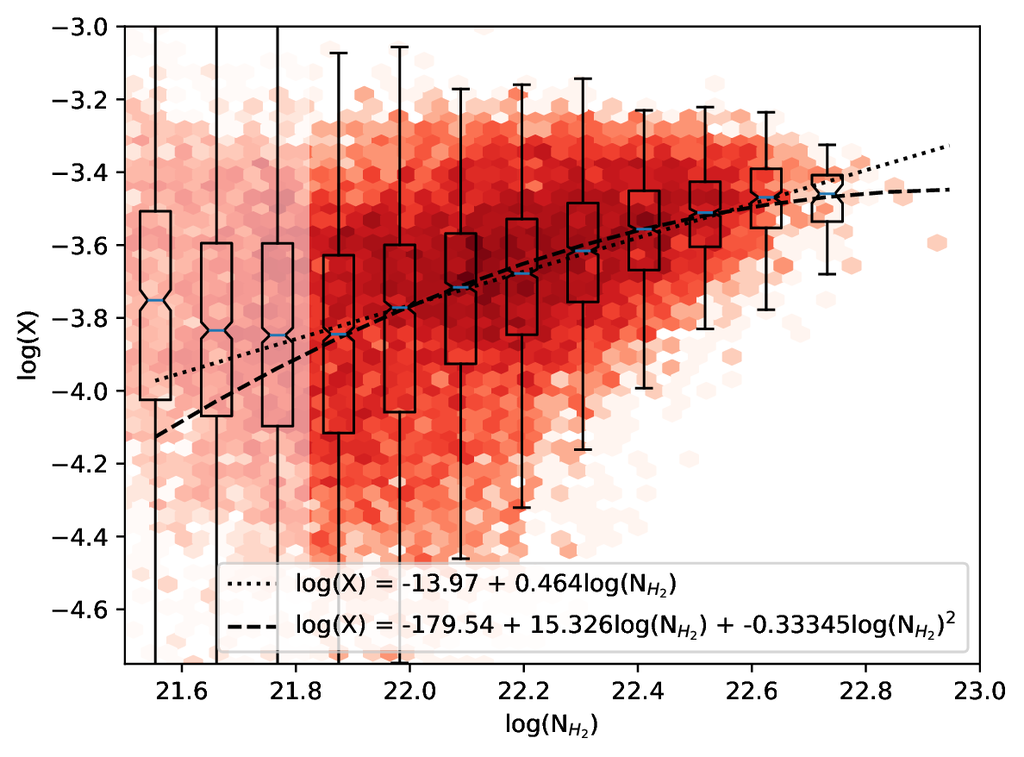

- Smith+ 2025: 27 data points

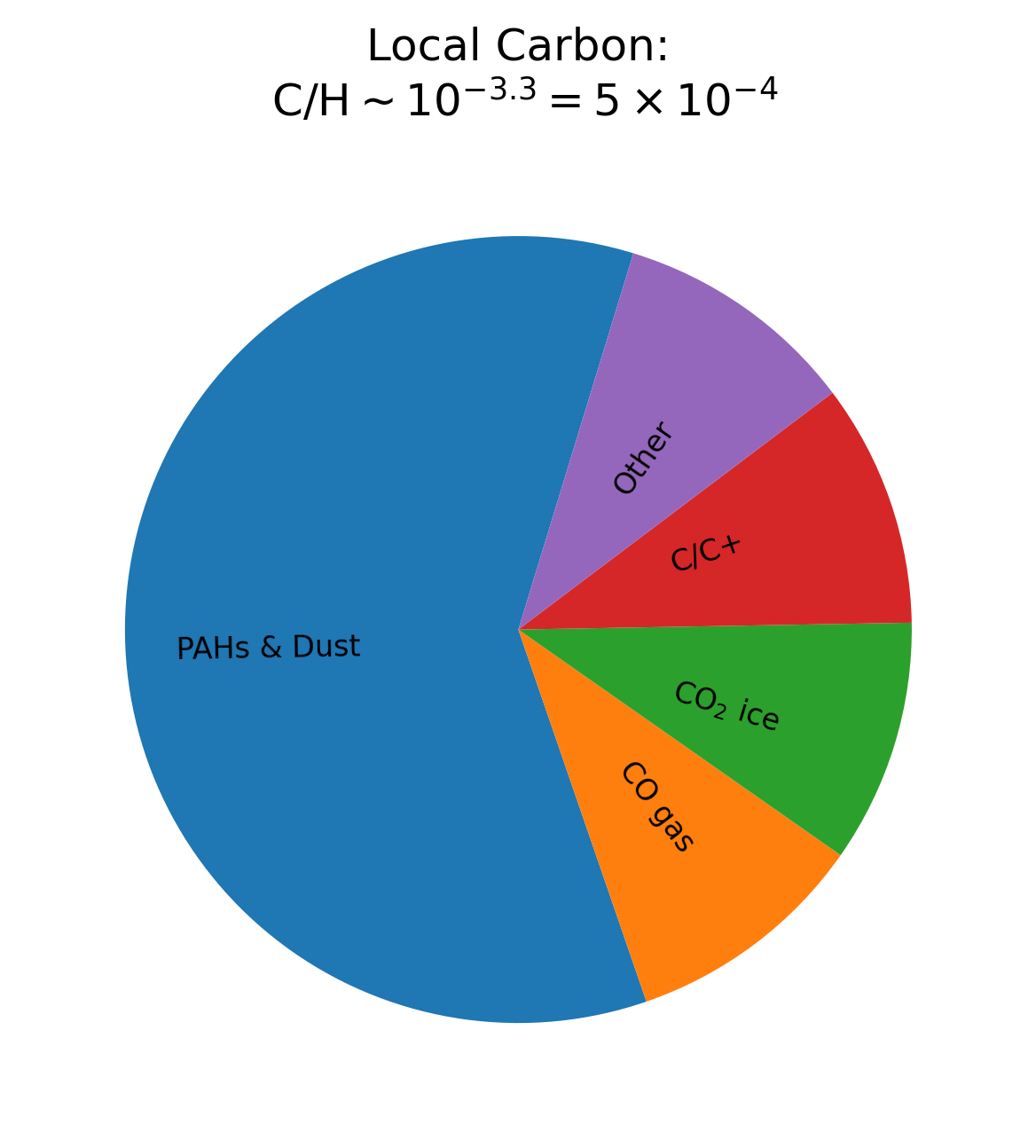
Standard assumed carbon breakdown, roughly.

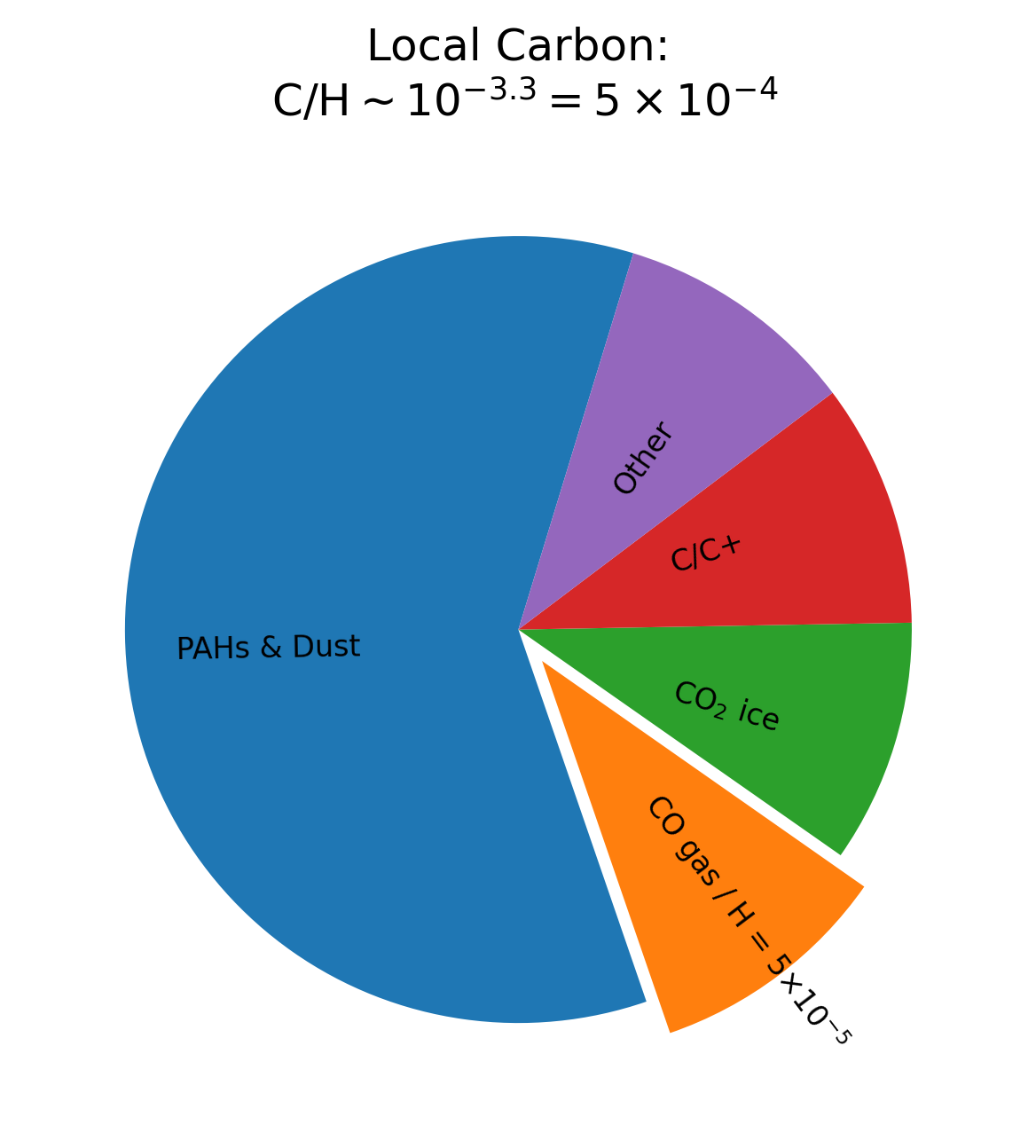
Standard assumed carbon breakdown, roughly.

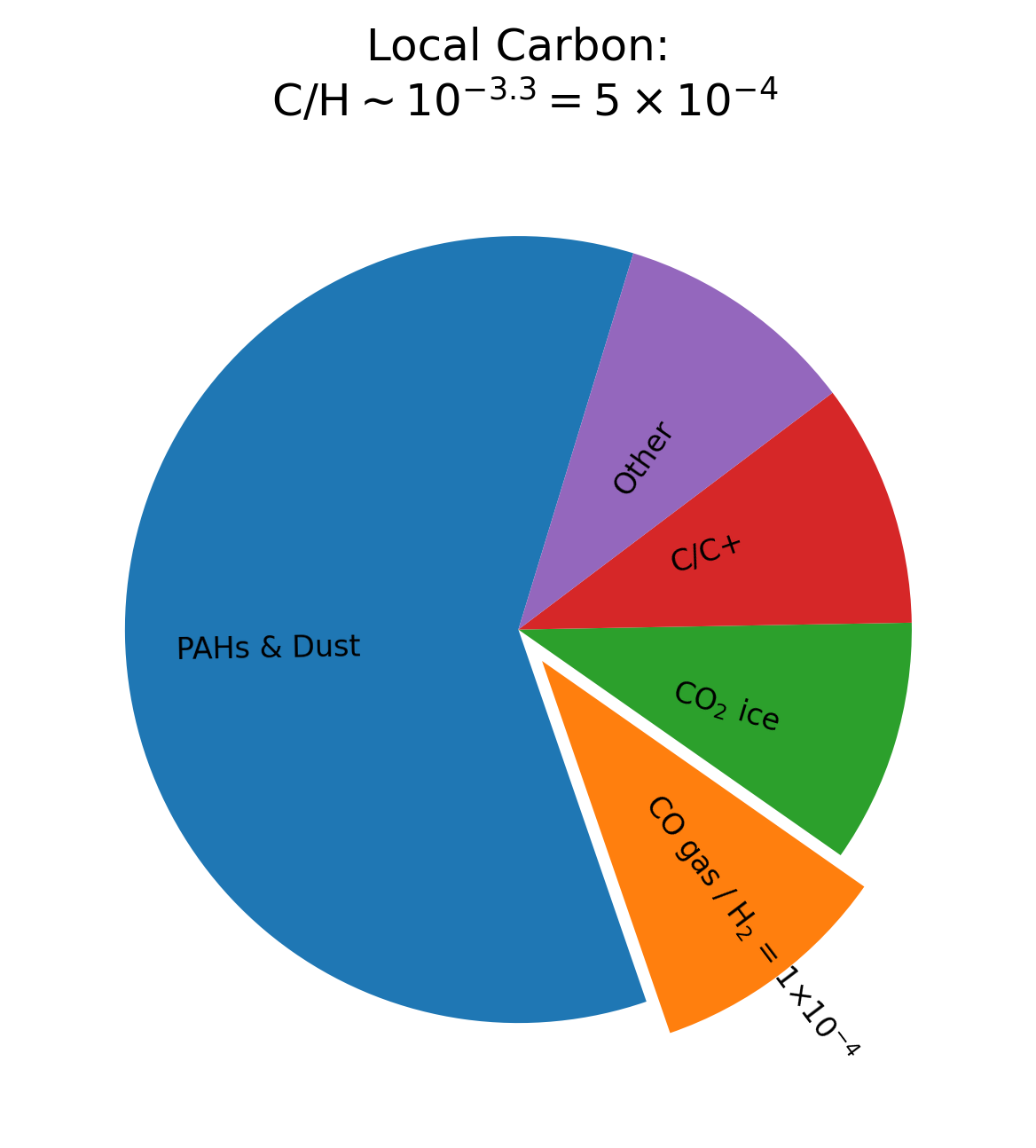
Standard assumed carbon breakdown, roughly.

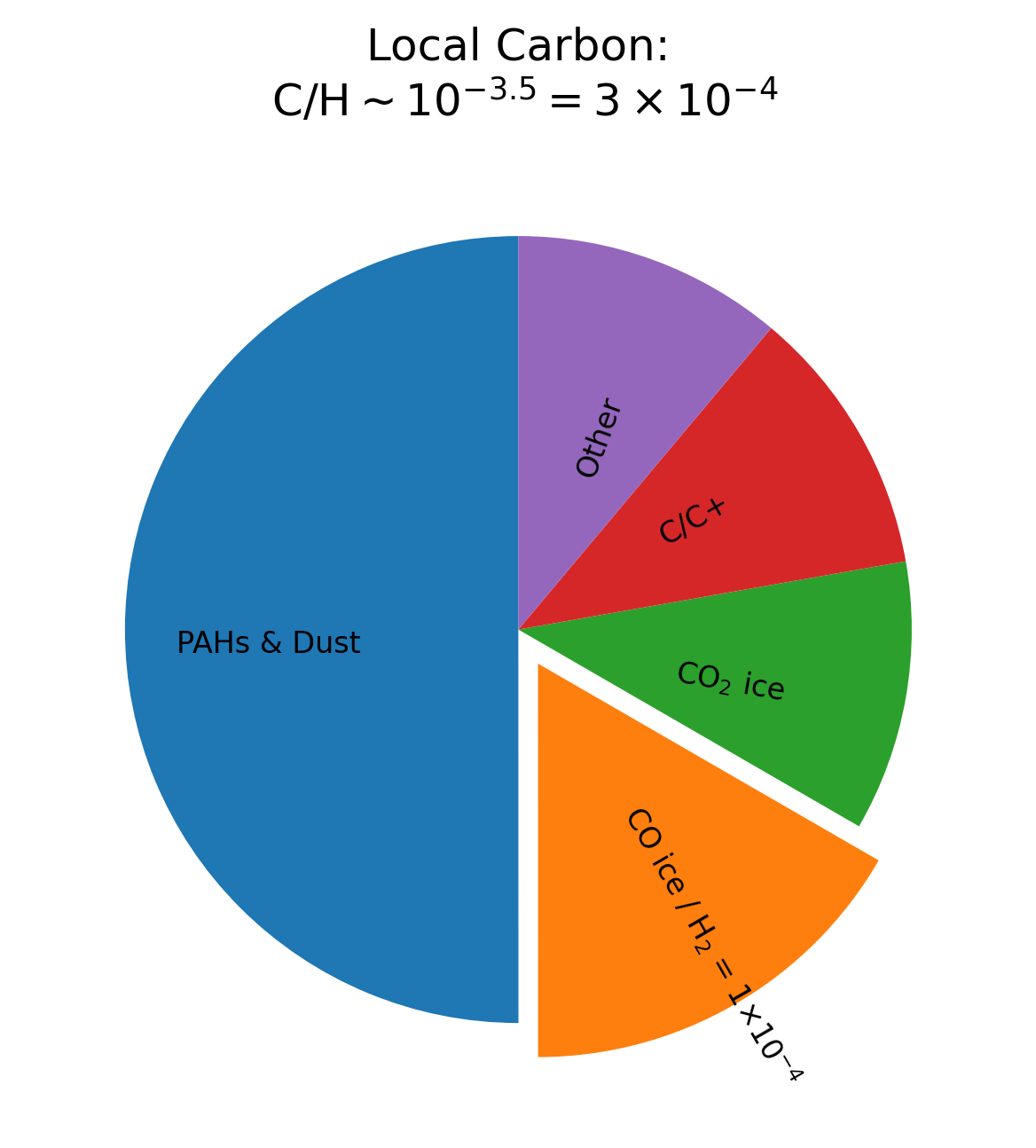
Standard assumed carbon breakdown, roughly.
The Smith+ 2025 measurements hint at nearly 100% of CO in ice
The Smith+ 2025 measurements hint at nearly 100% of CO in ice

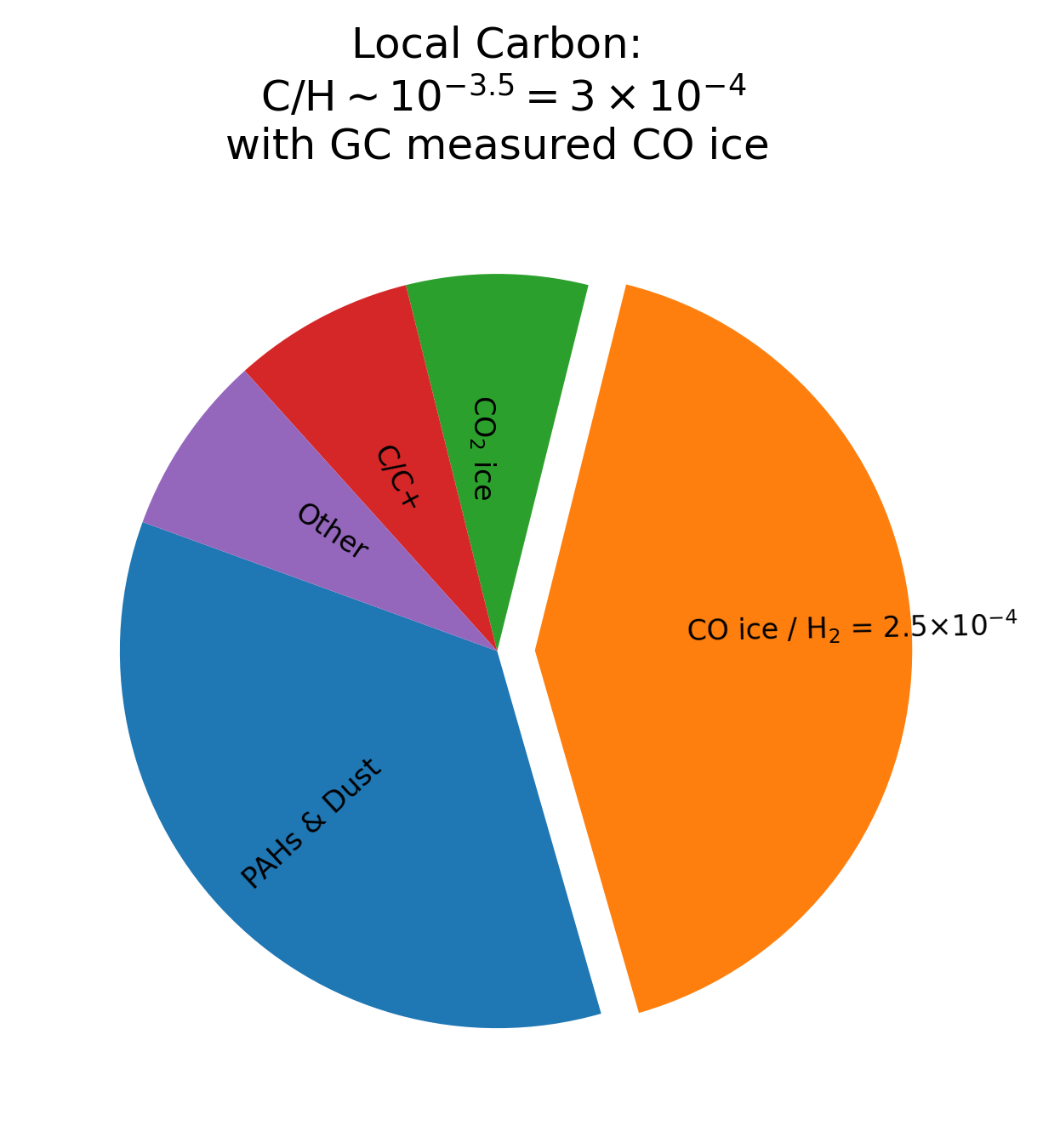
With measured GC CO ice column, the fraction of carbon in CO ice becomes uncomfortably large...

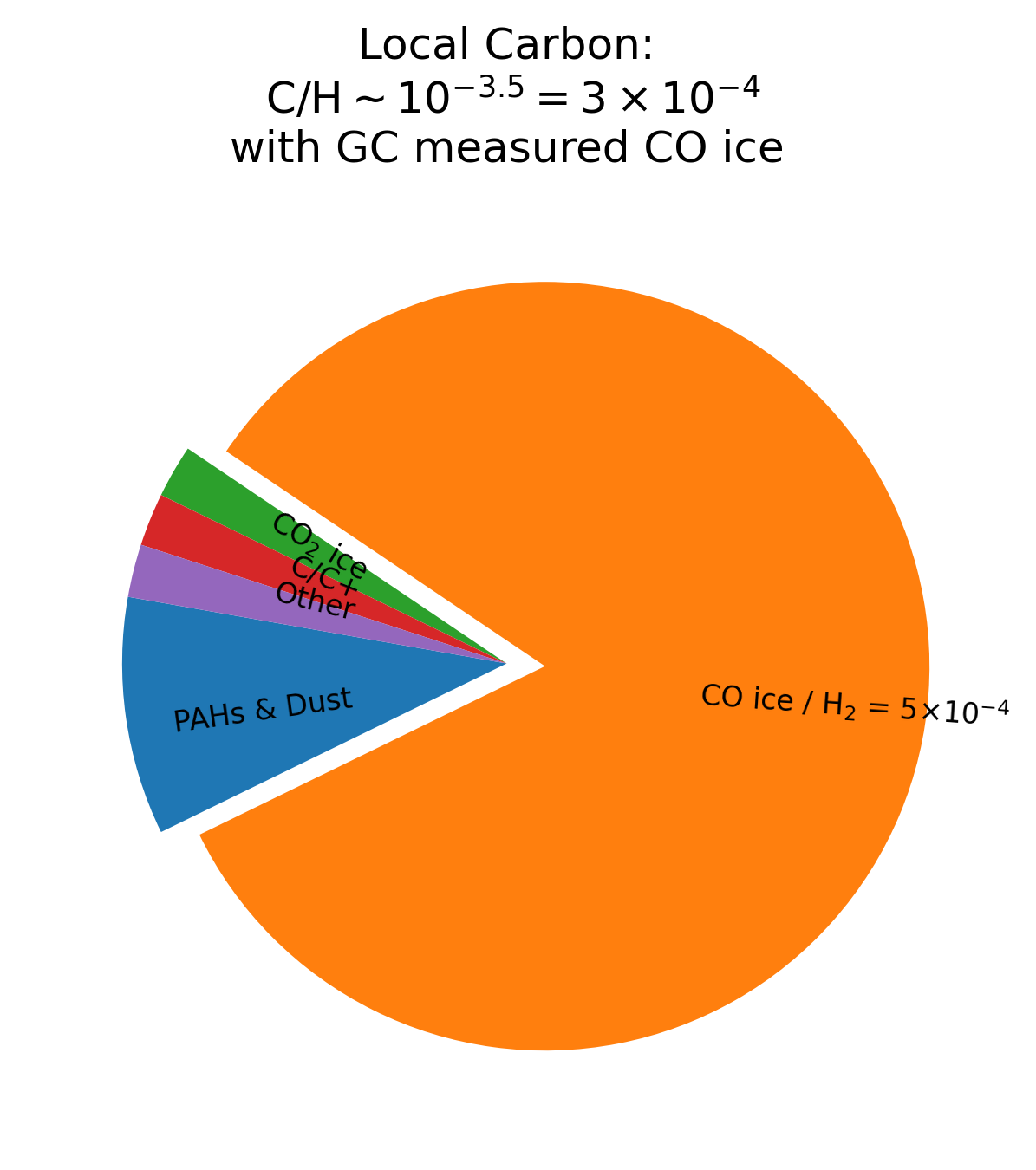
With measured GC CO ice column, the fraction of carbon in CO ice becomes uncomfortably large...
or even exceeds the total budget
or even exceeds the total budget


With measured GC CO ice column, the fraction of carbon in CO ice becomes uncomfortably large...
or even exceeds the total budget
or even exceeds the total budget

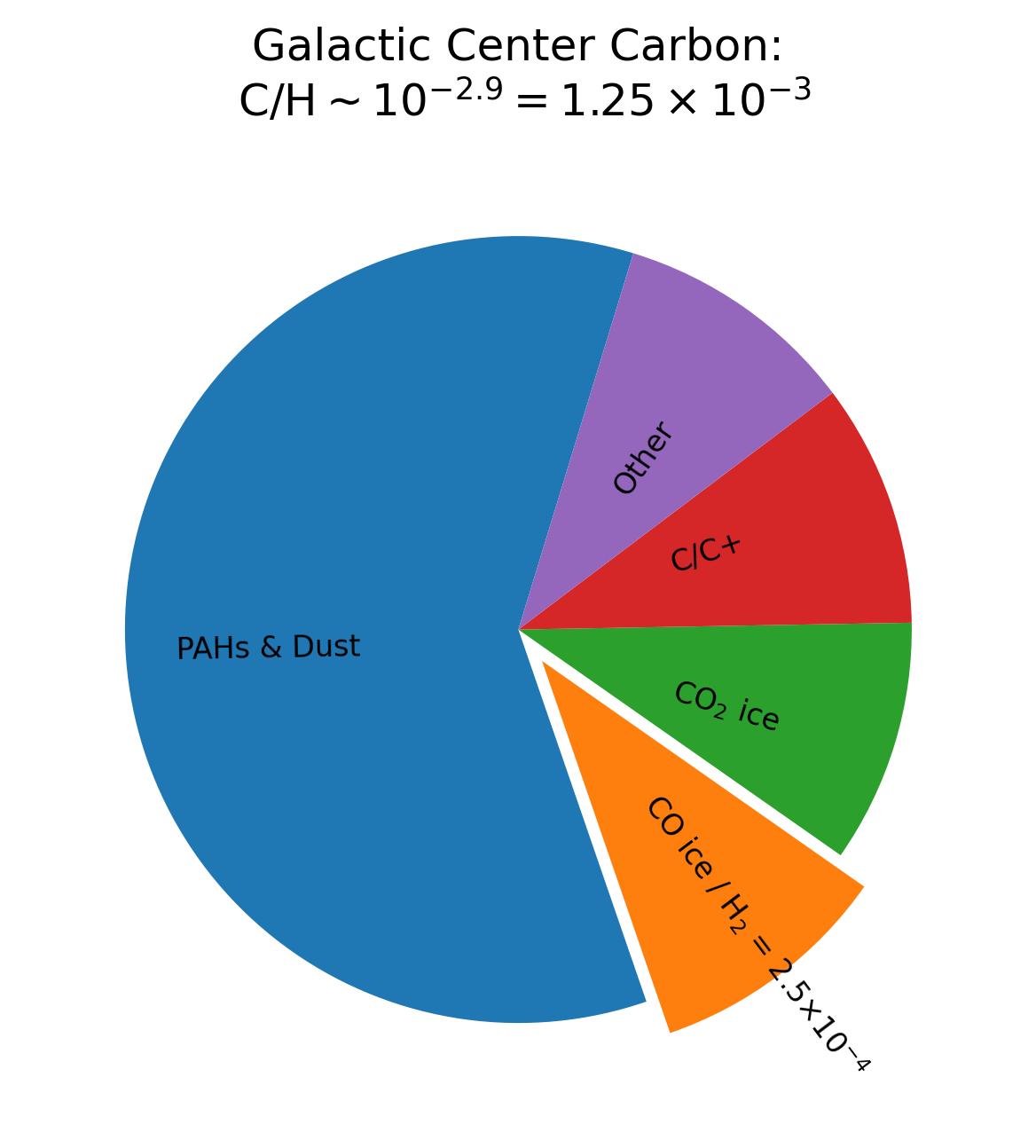
If $Z_{GC} = 2.5 Z_\odot$, the CO ice fraction goes back to normal ($\sim10-20$%).
(but some lines-of-sight still have $\sim$double that CO ice...)
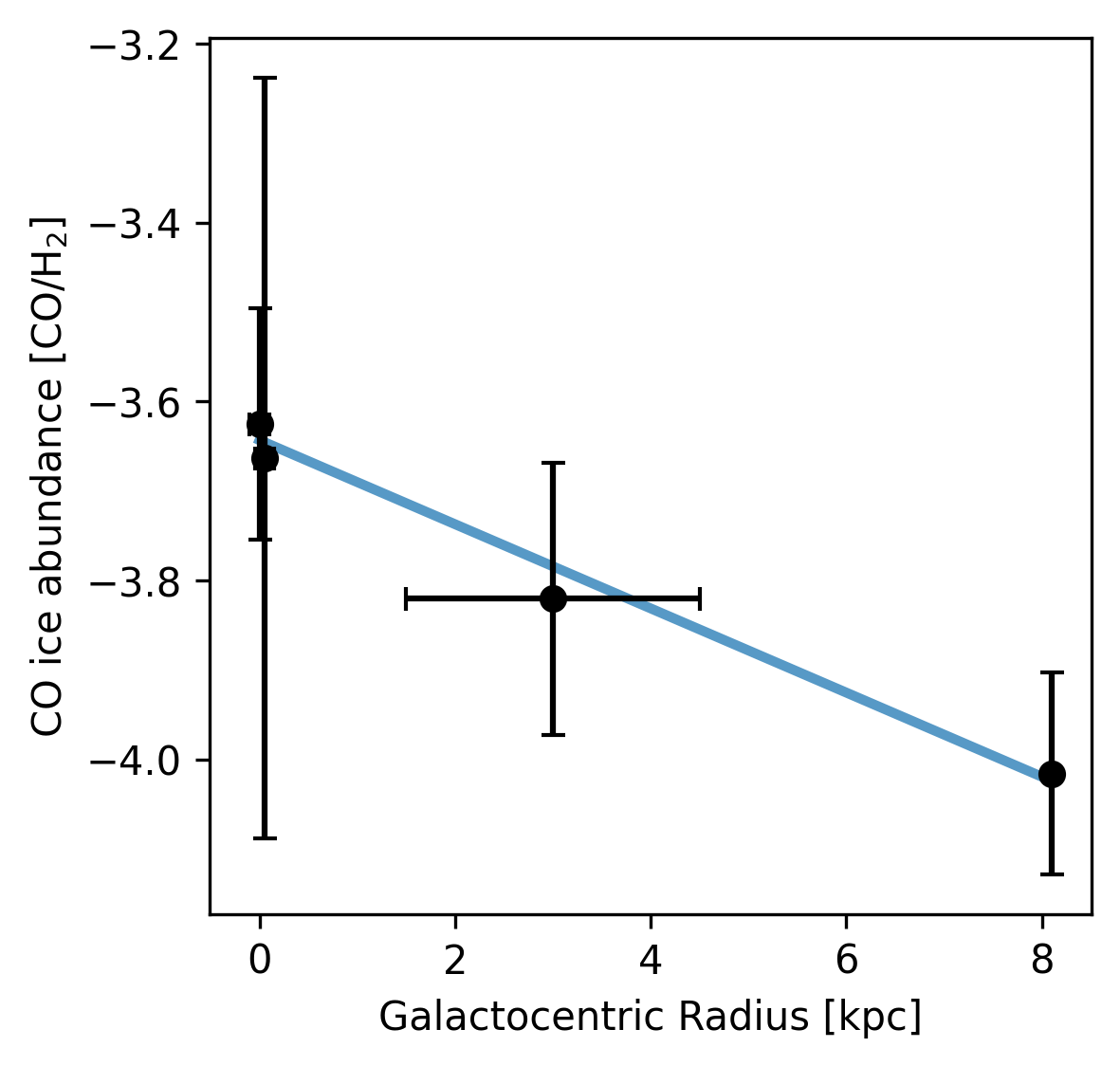
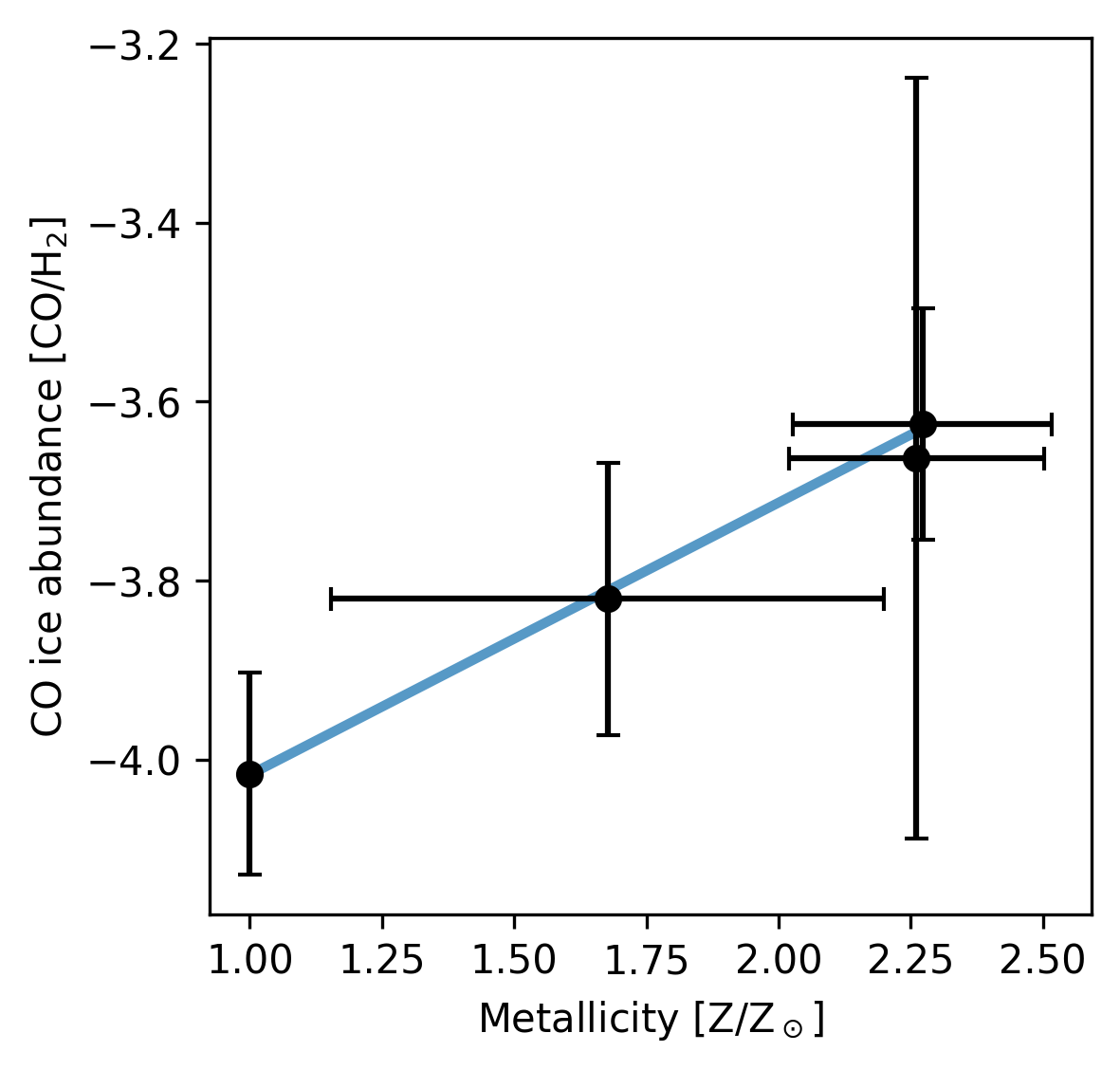
Now for stranger things: F356W excess absorption
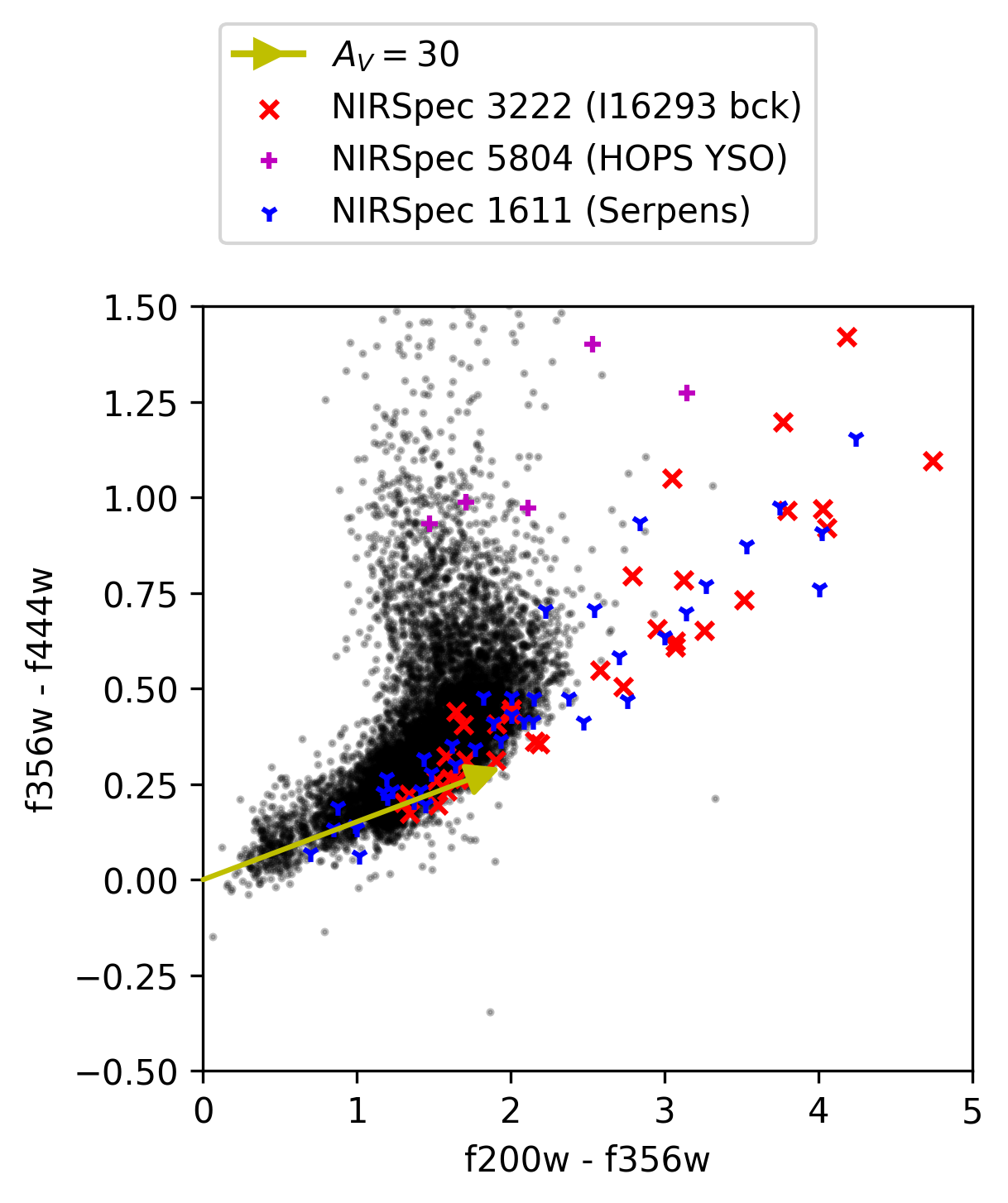
Now for stranger things: F356W excess absorption
is correlated with CO ice
is correlated with CO ice
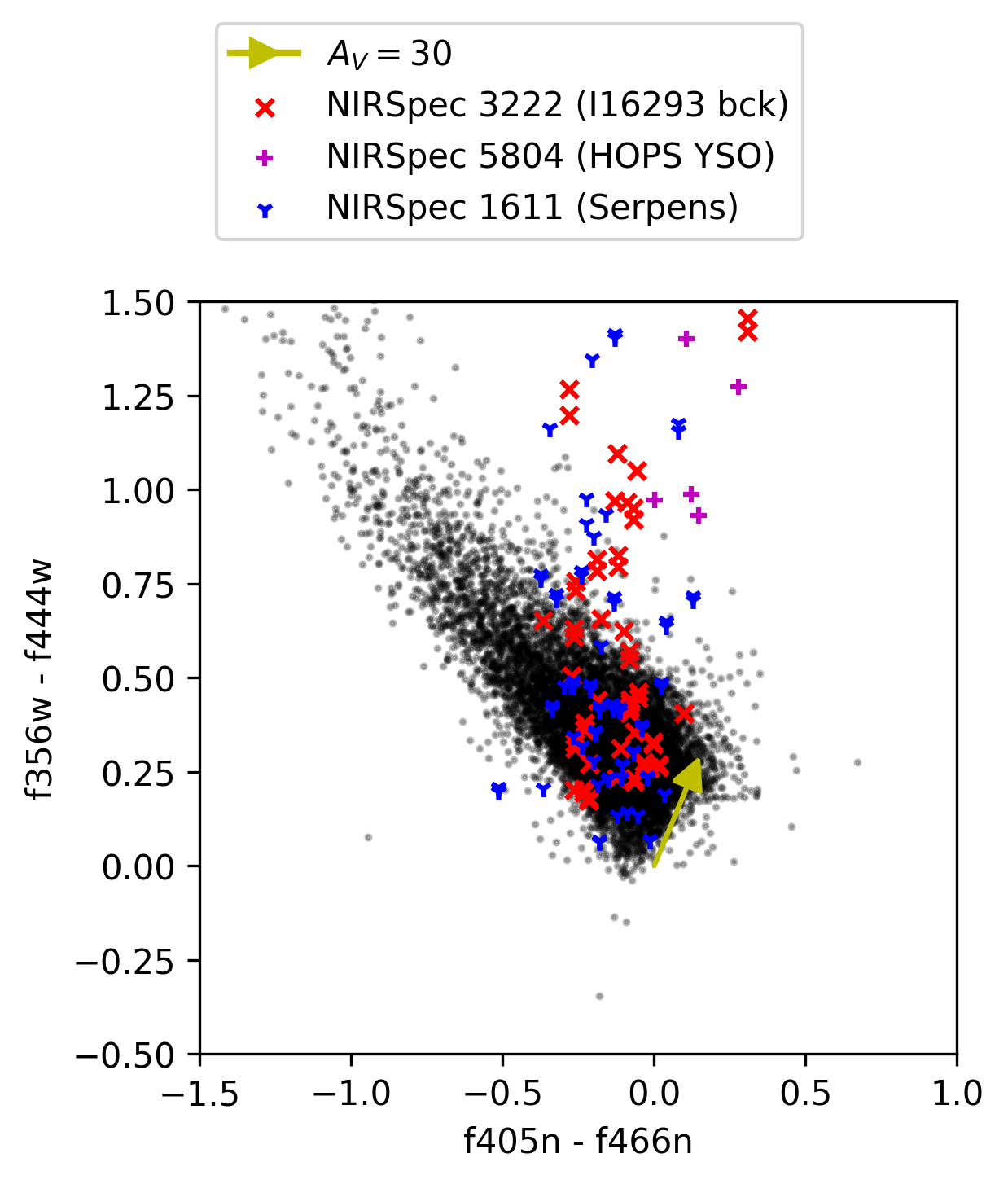
Simple molecule ices don't match
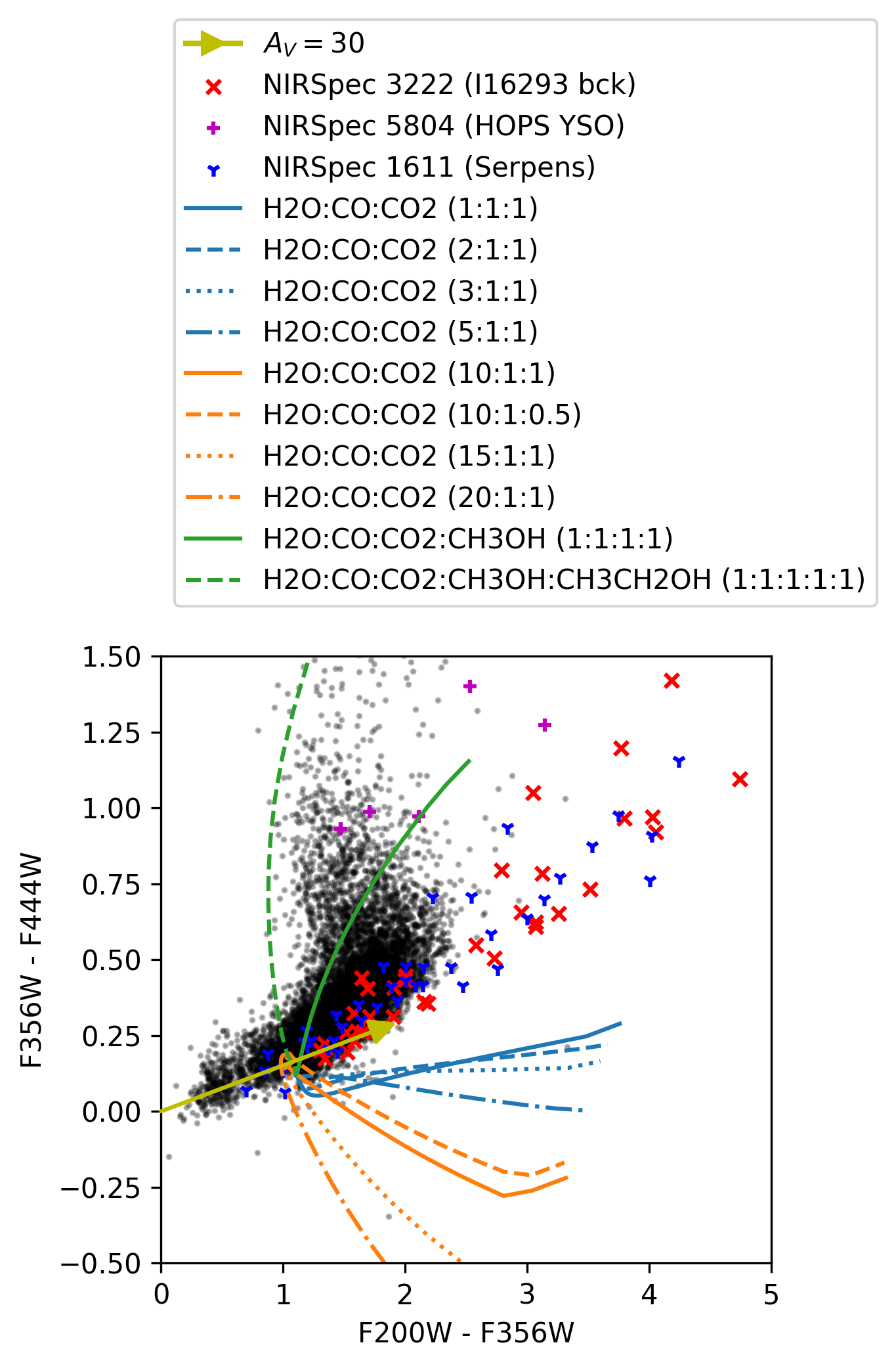

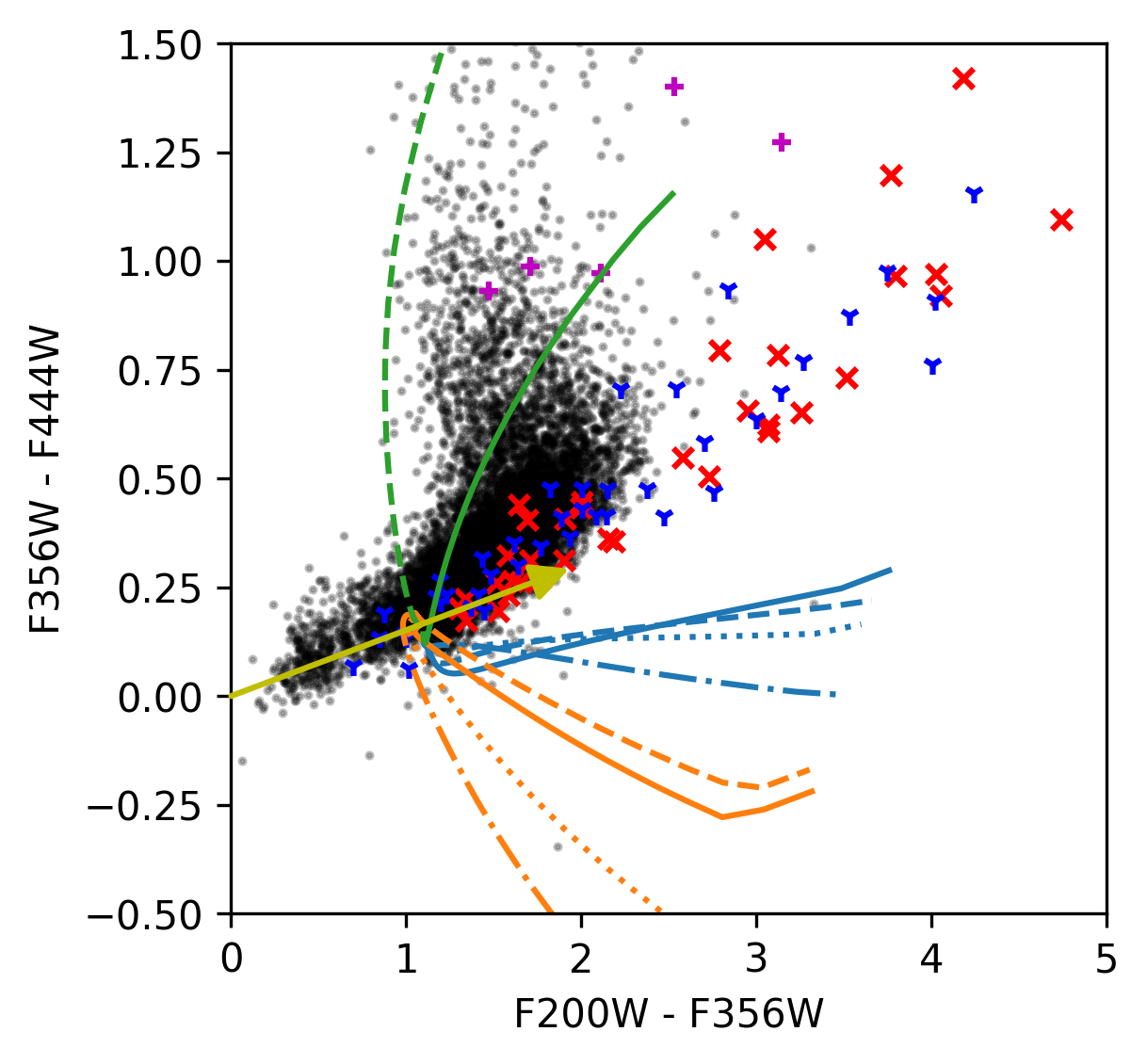
So what is it?
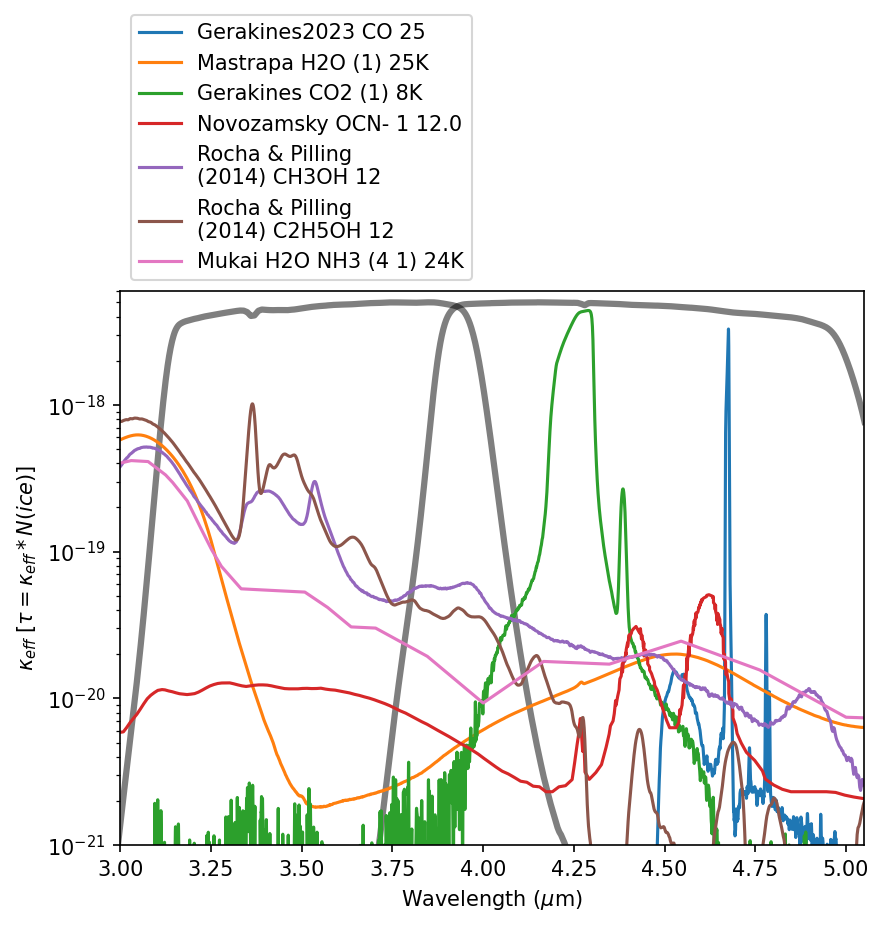
Same structure as CO (left), but there's less in the outskirts




CO2 ice is also detectable


CO2 ice is also detectable
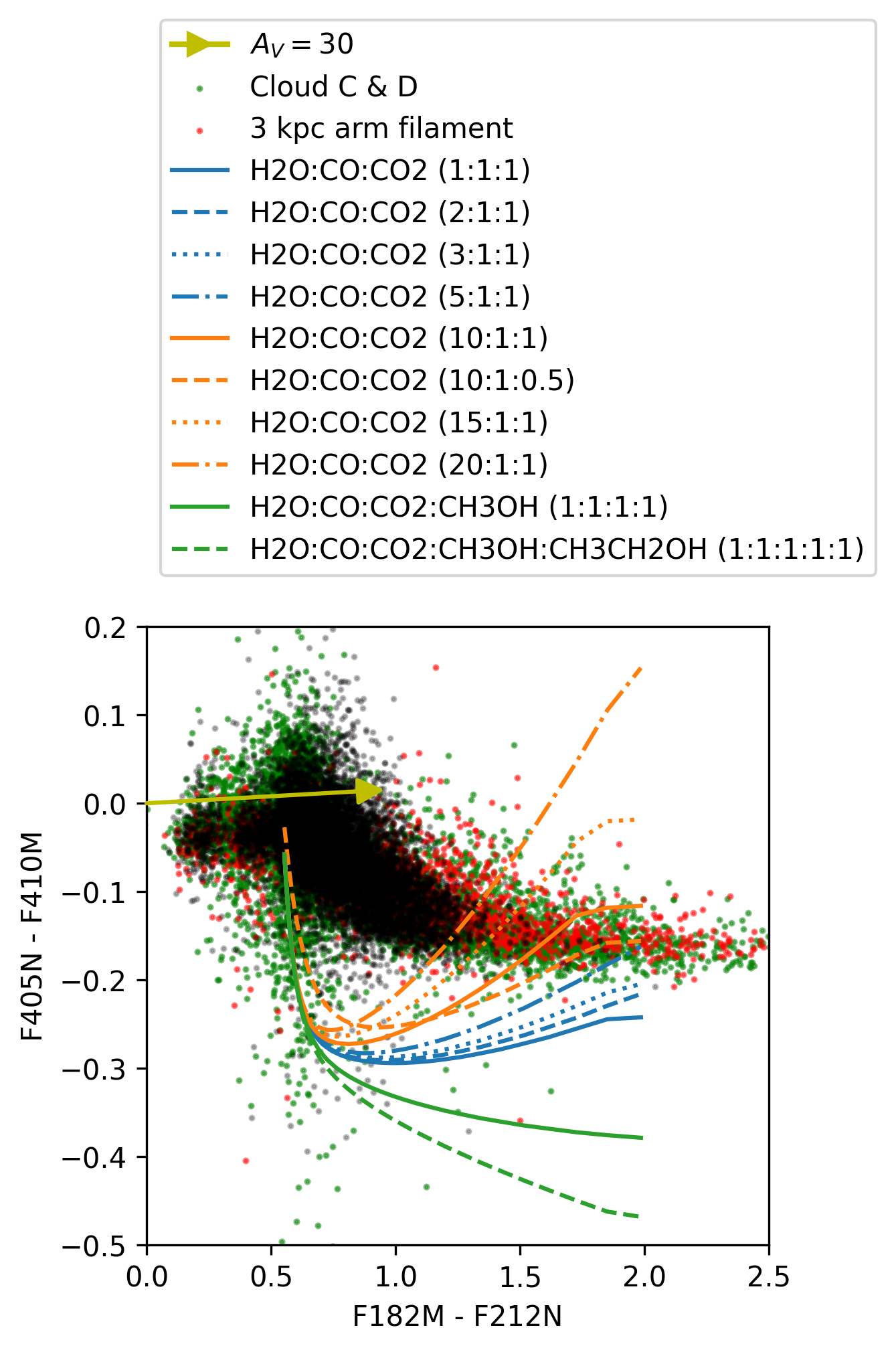
Models don't match if we assume N(CO$_2$) $\propto$ N(H$_2$)
Probably CO$_2$ ice is processing into other molecules
looking forward
We can do this in (a lot) of other clouds.
e.g., water ice in Sgr B2
e.g., water ice in Sgr B2

looking forward
There is potential to measure metallicity directly from photometry.
SPHEREX can do this better for stars it can resolve.
SPHEREX can do this better for stars it can resolve.


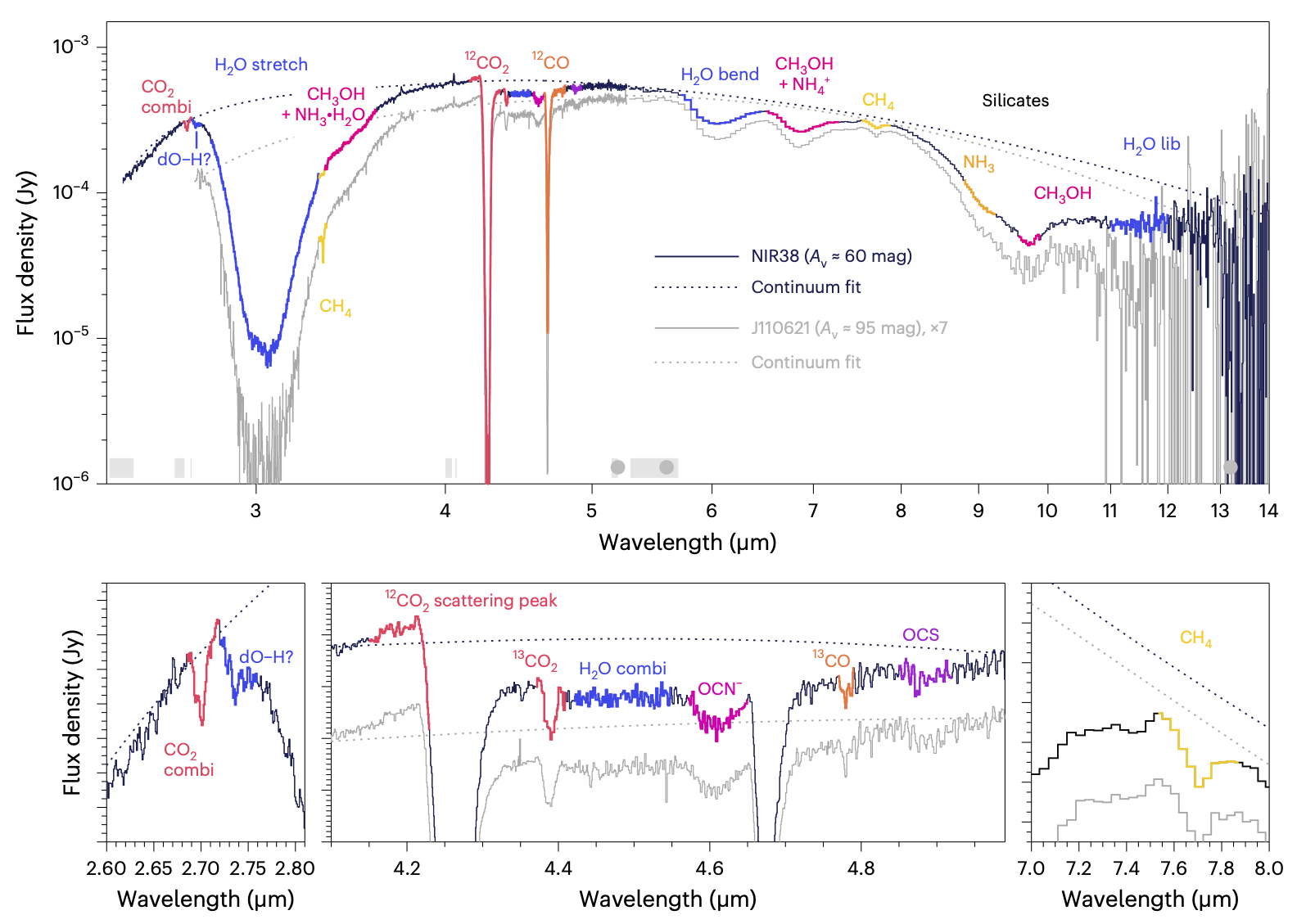
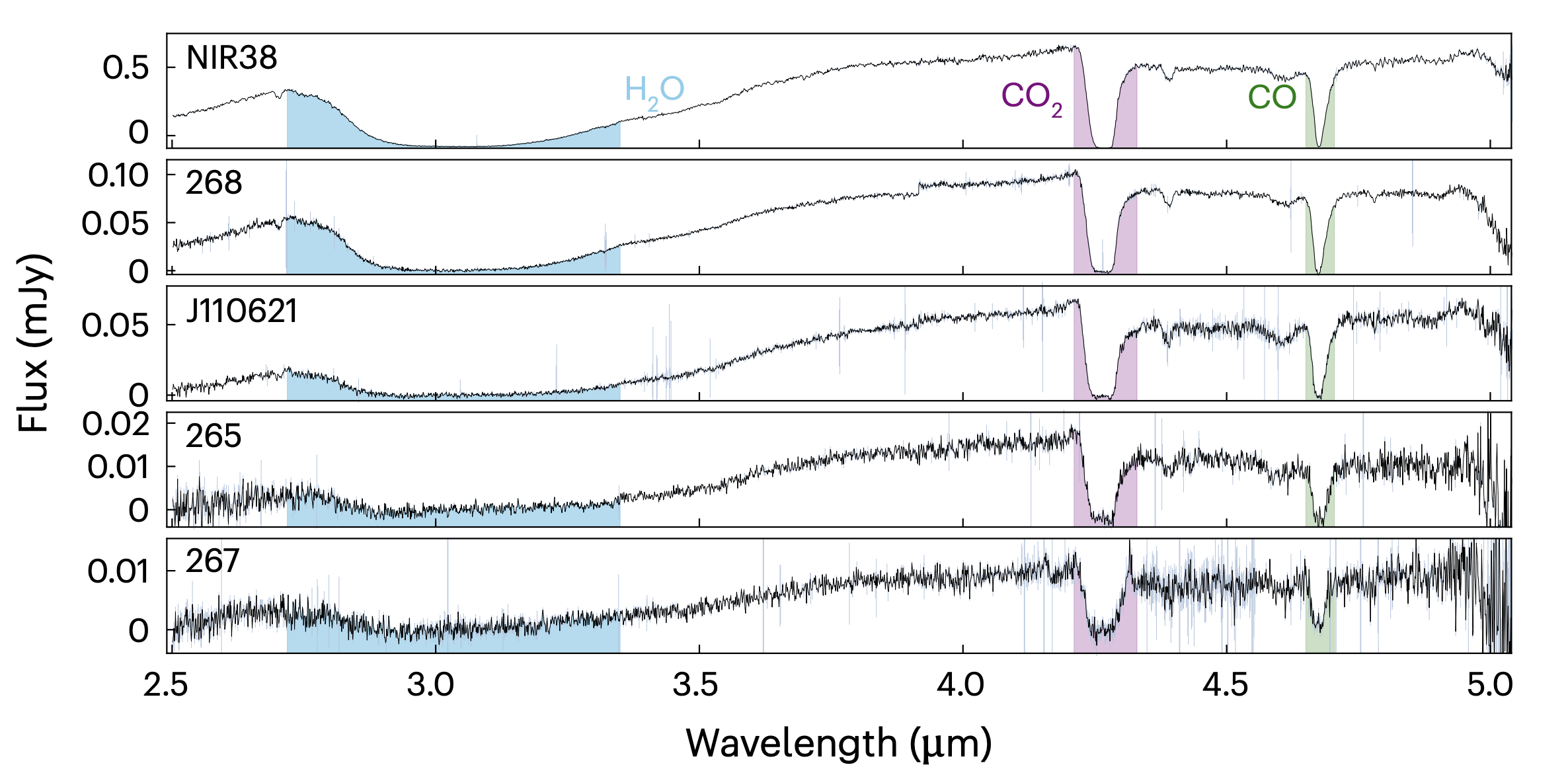
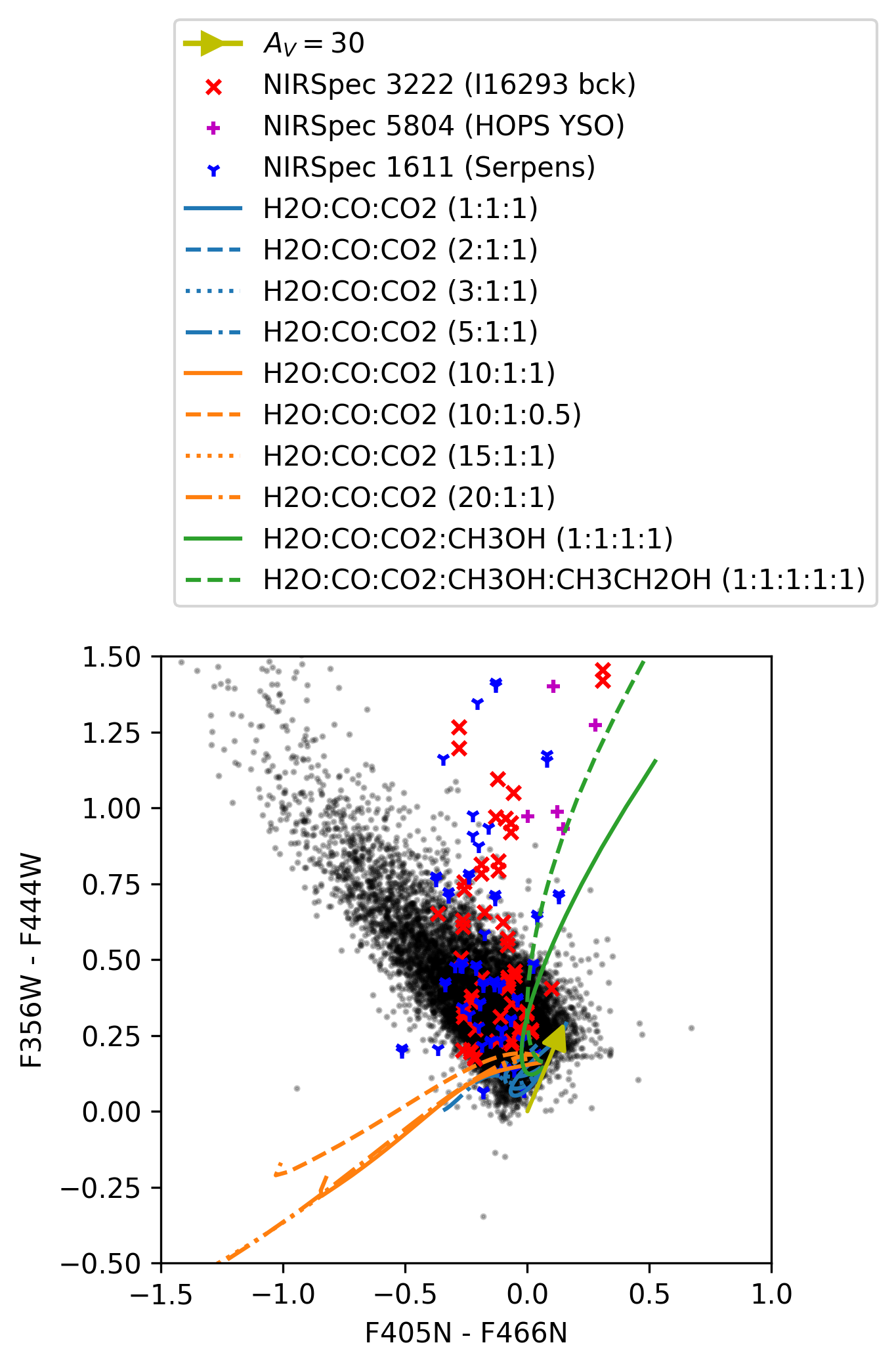
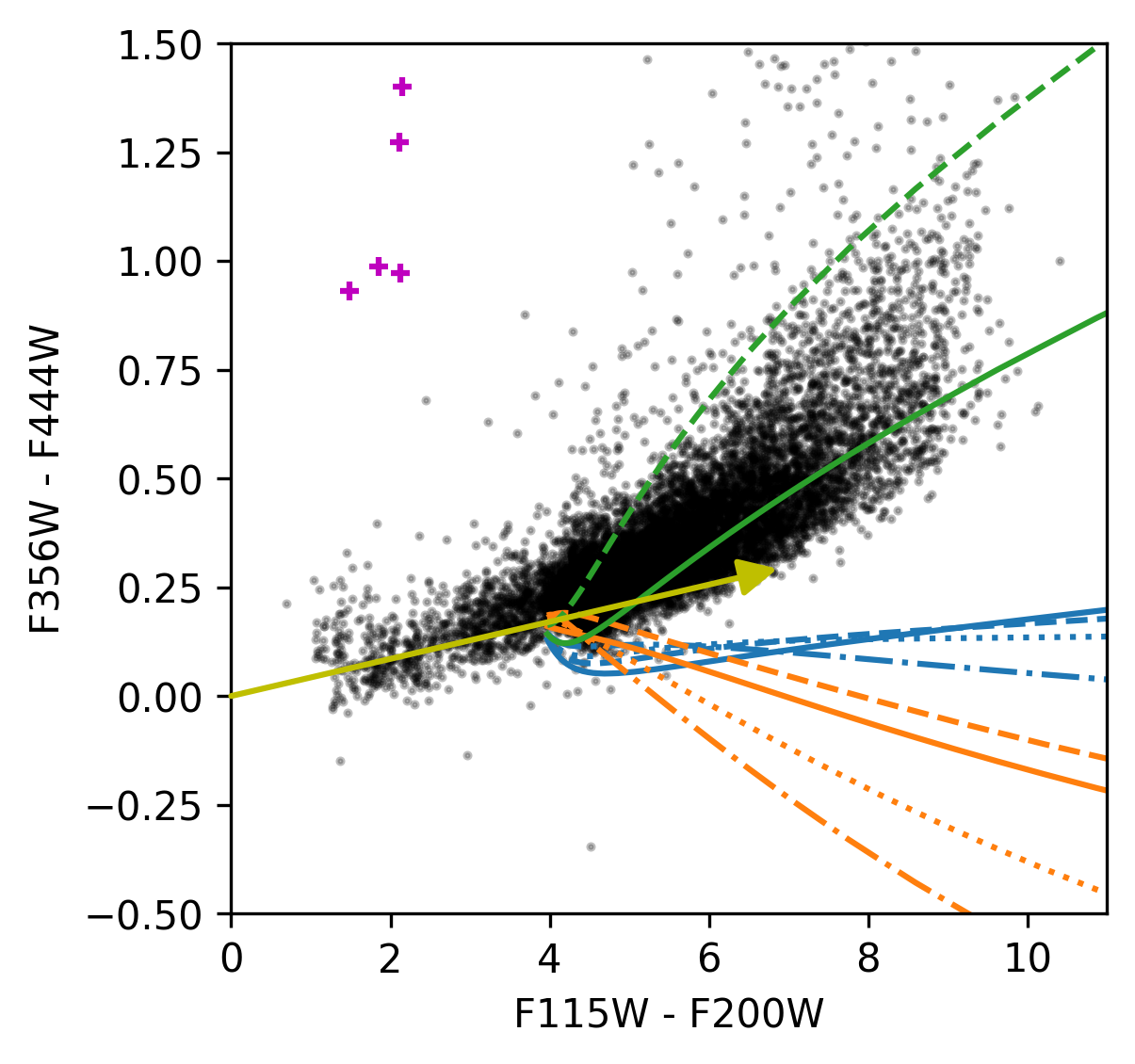


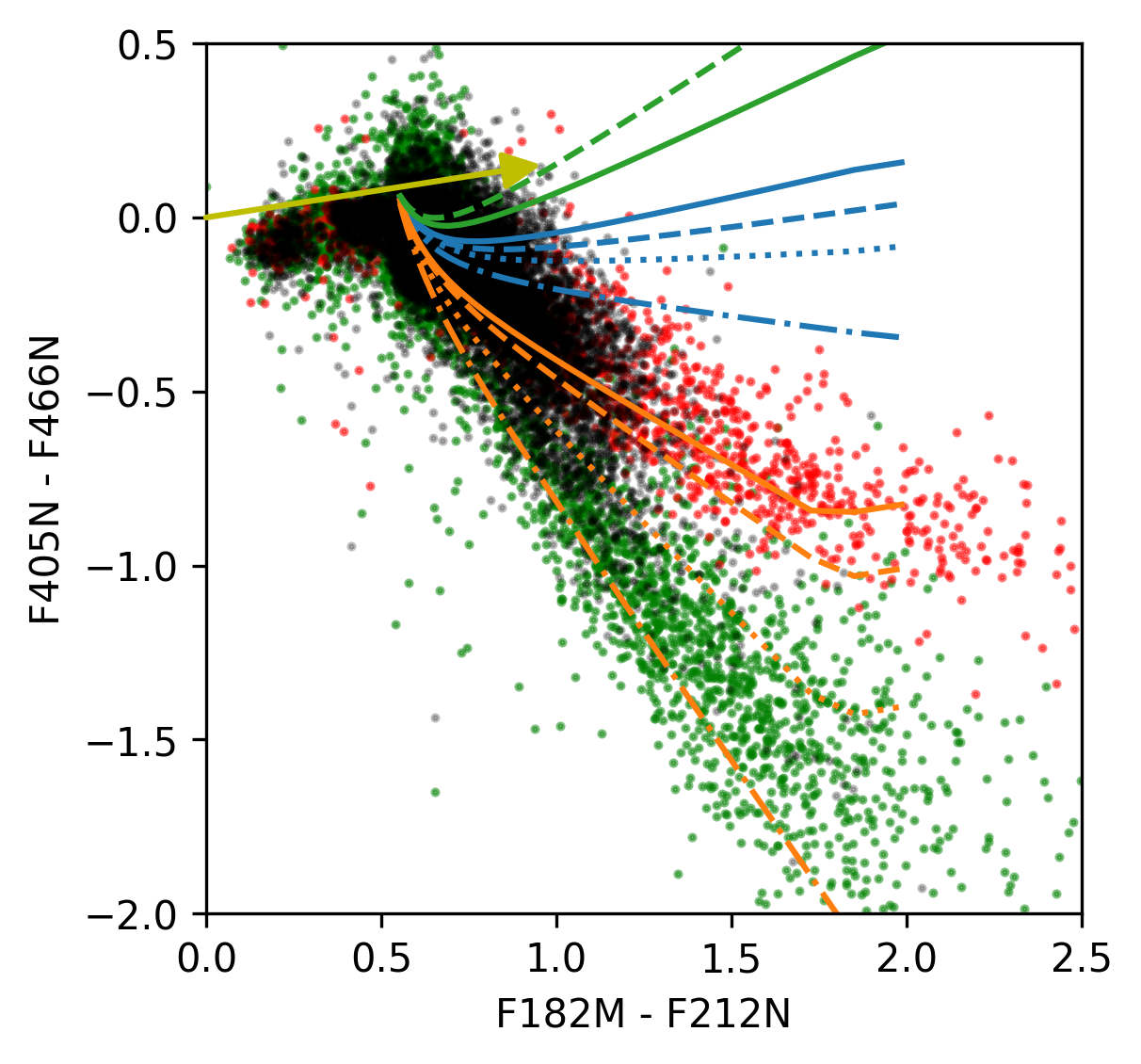
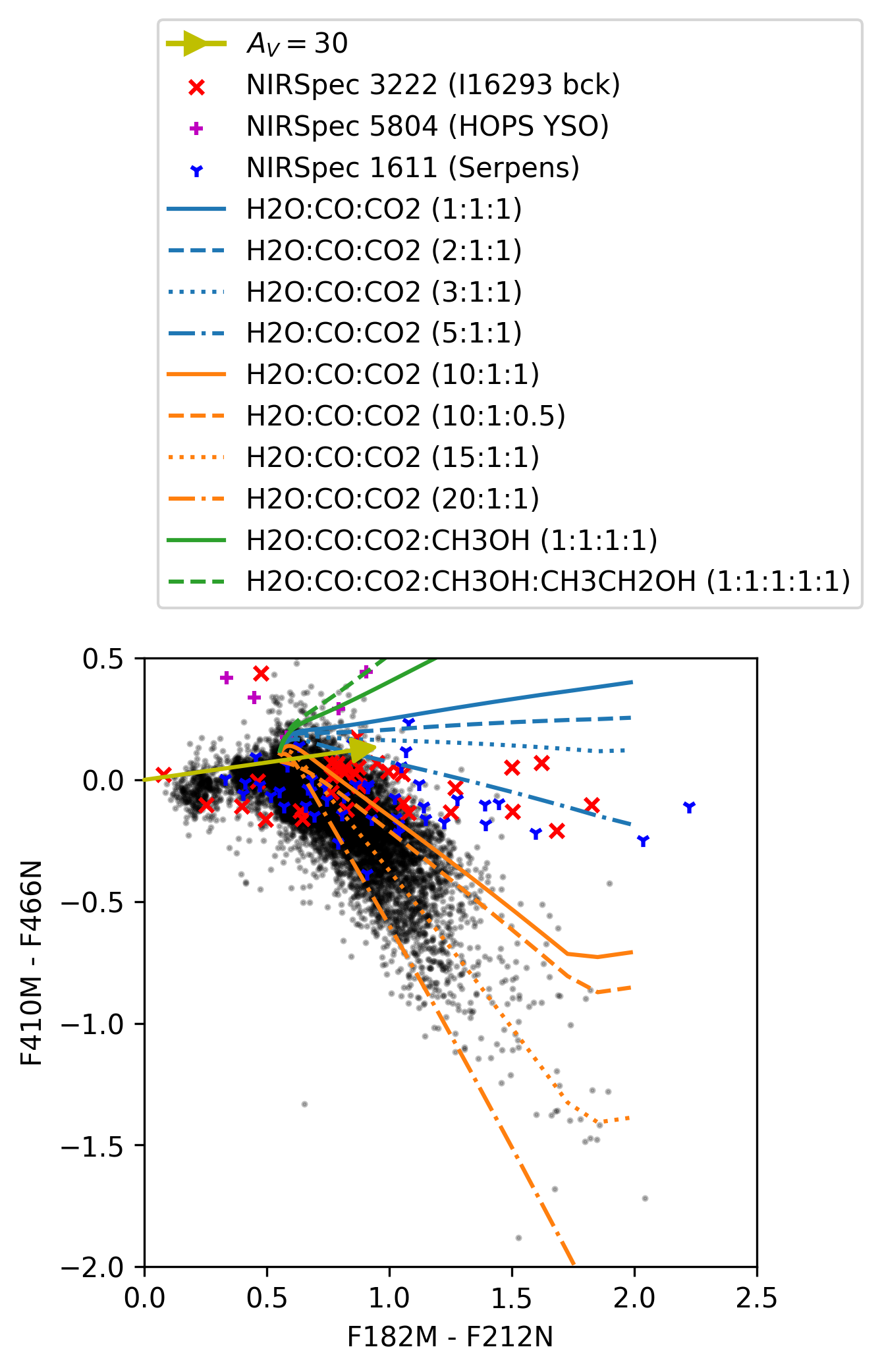
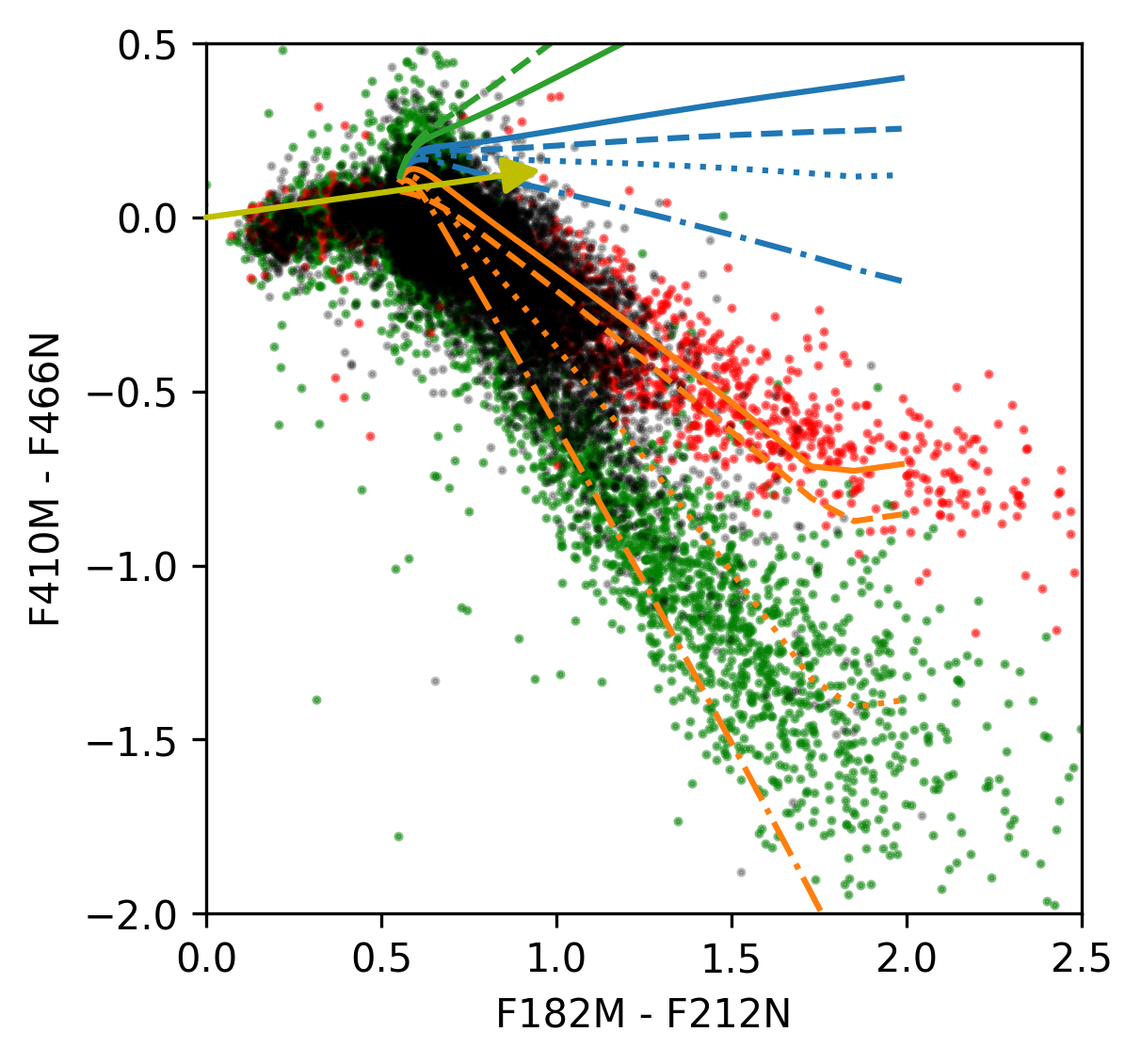
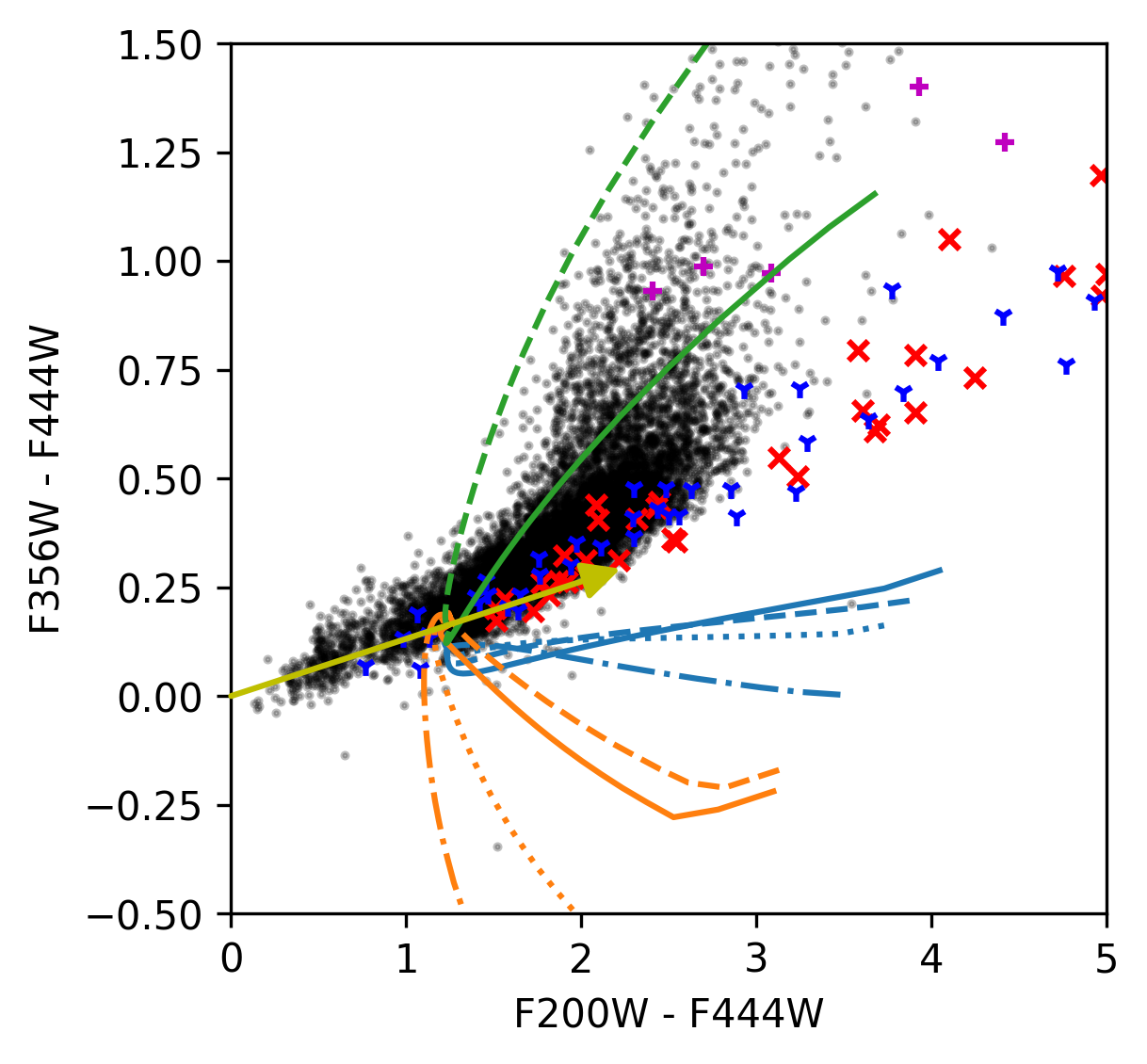

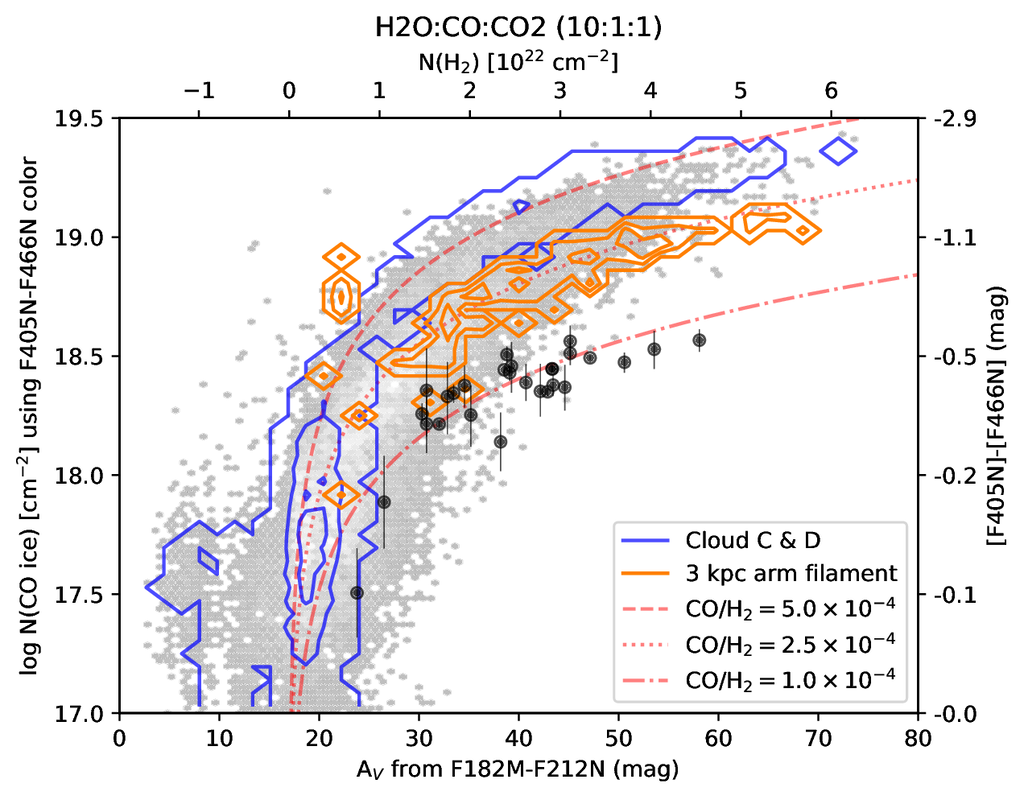

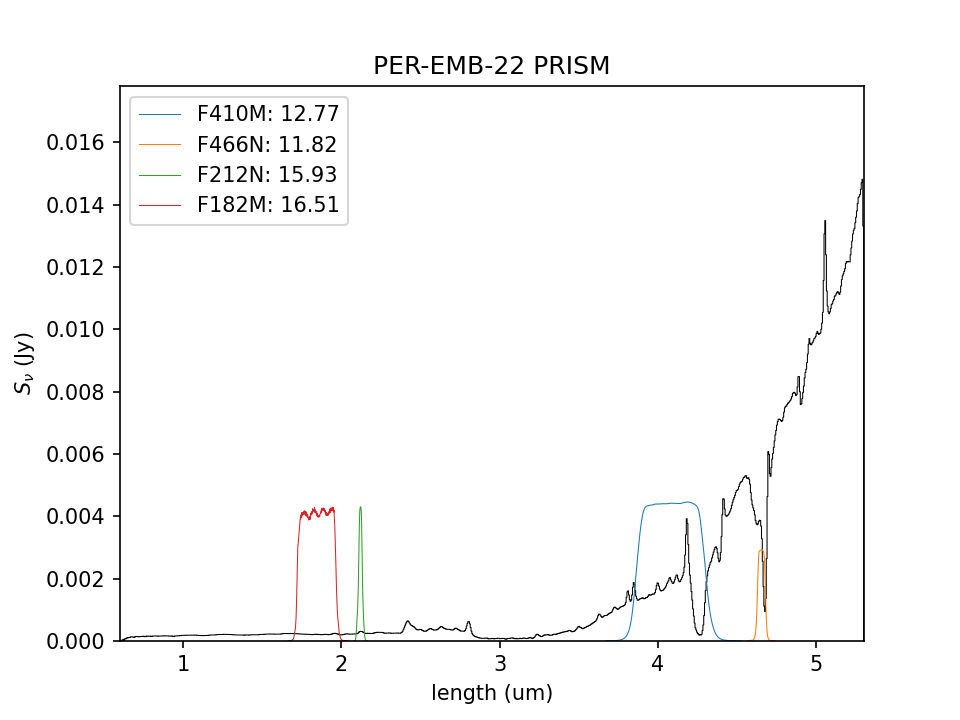


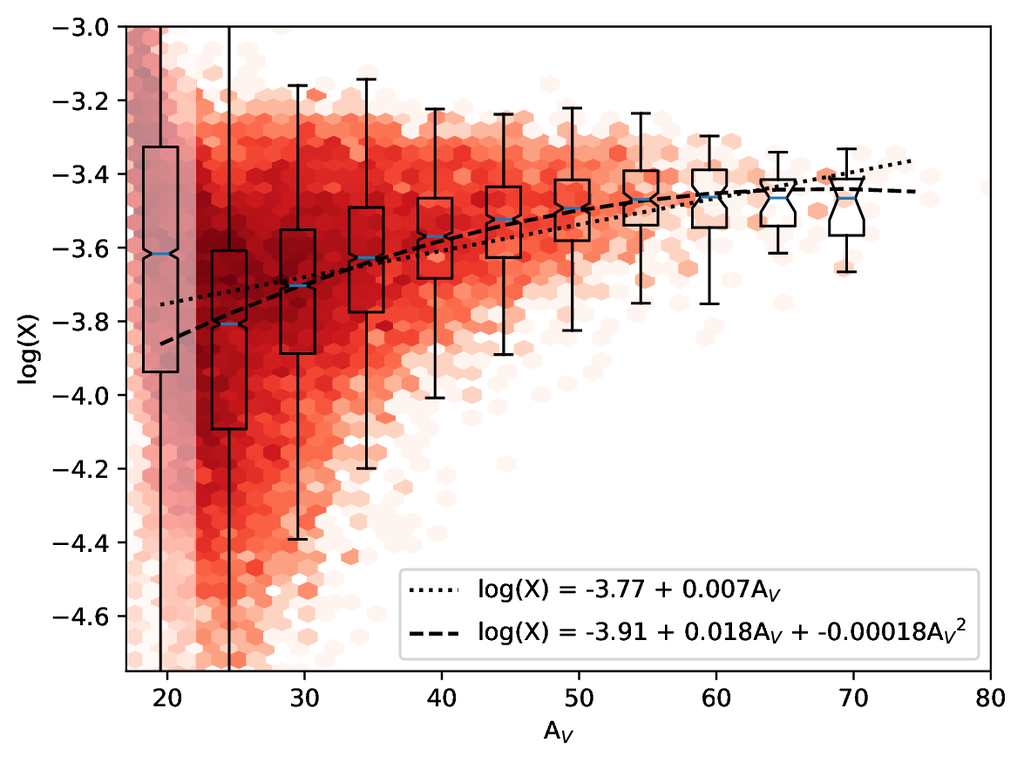

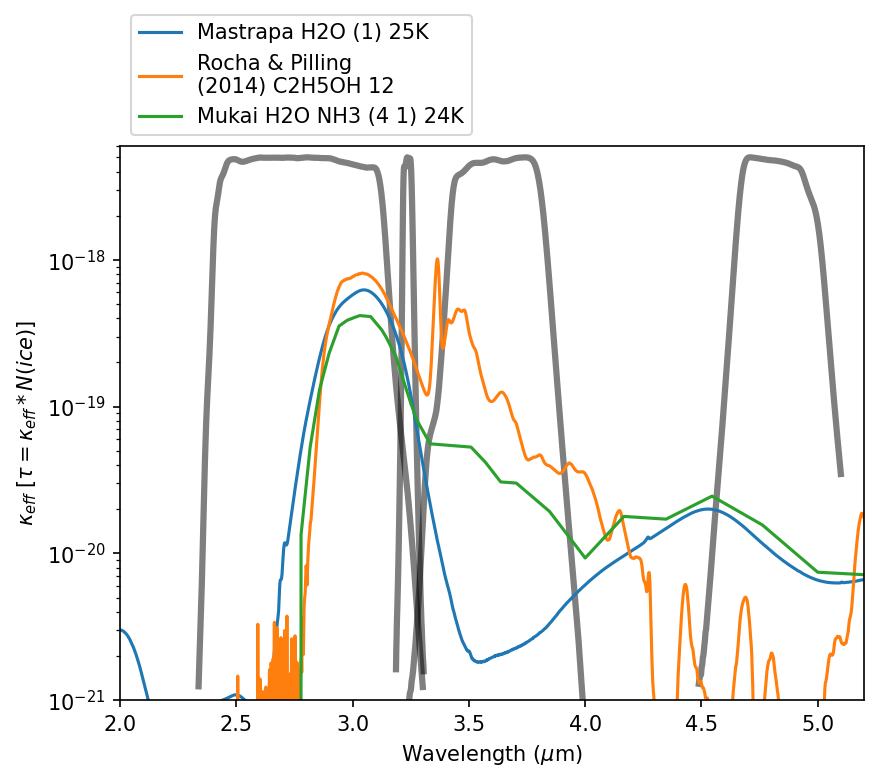
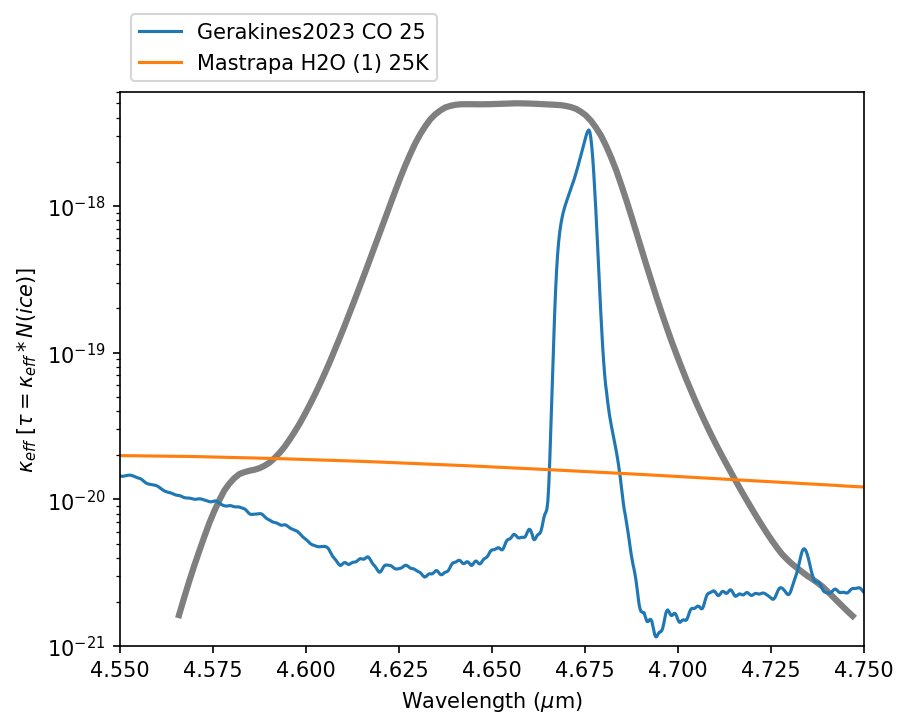
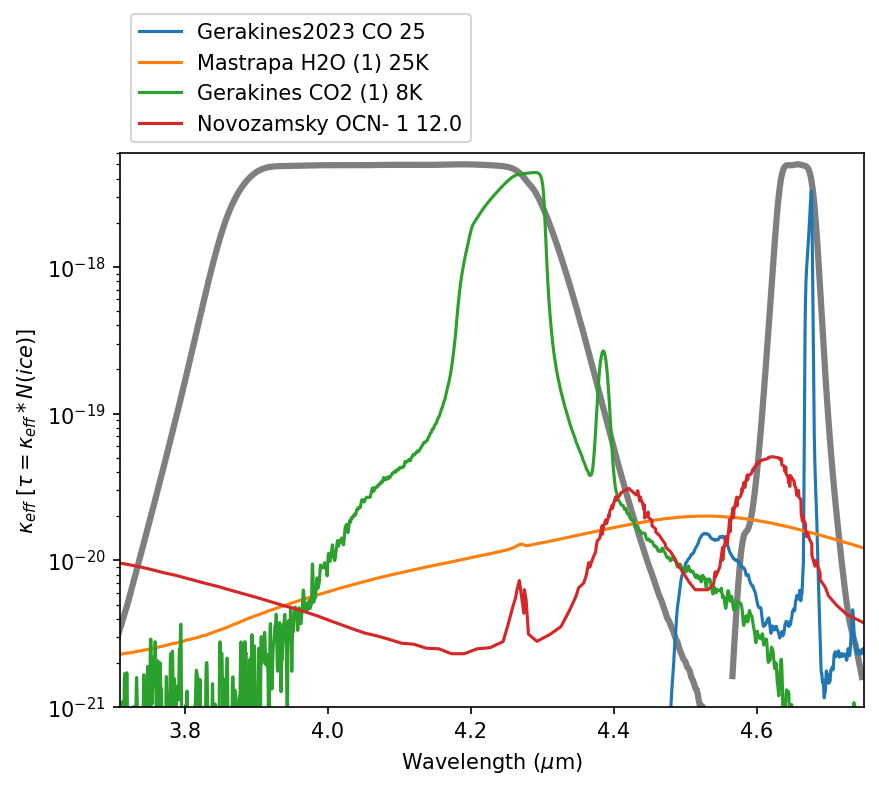
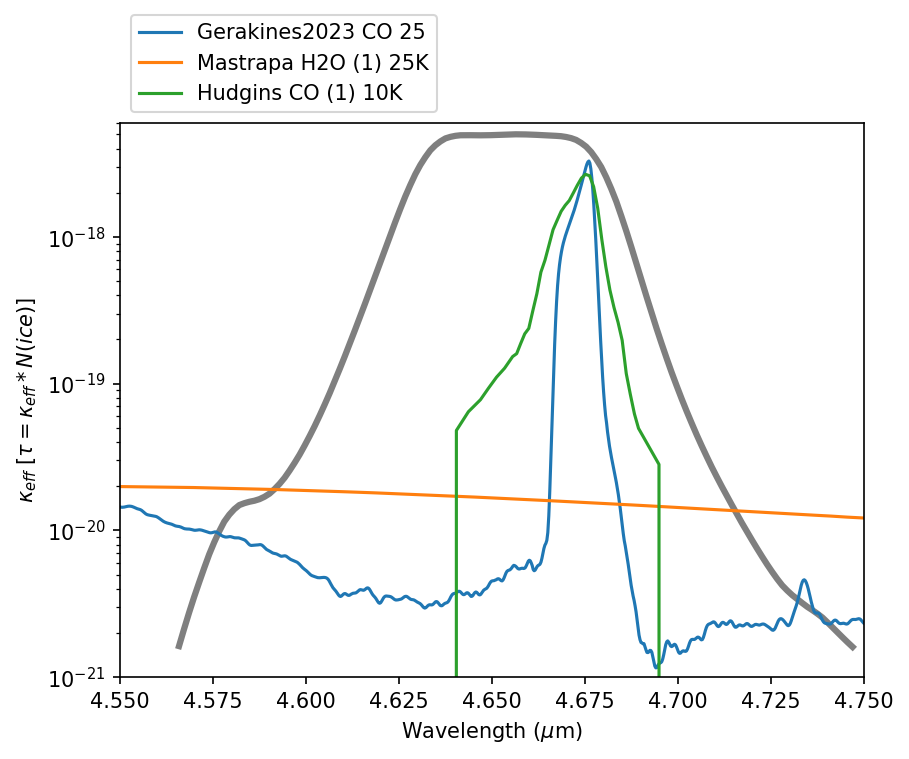
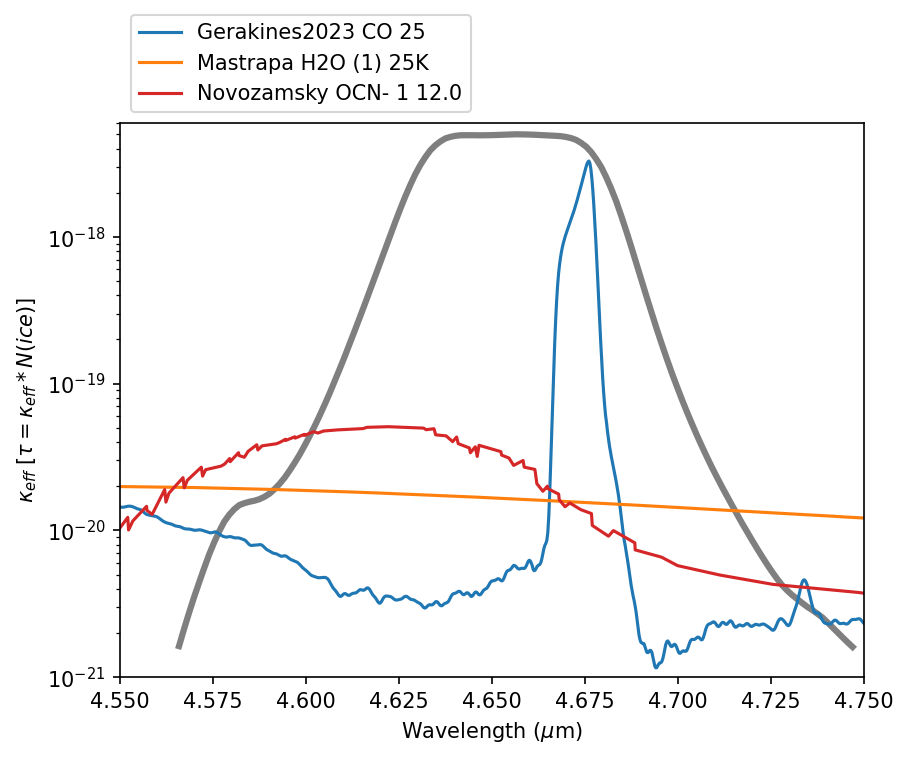
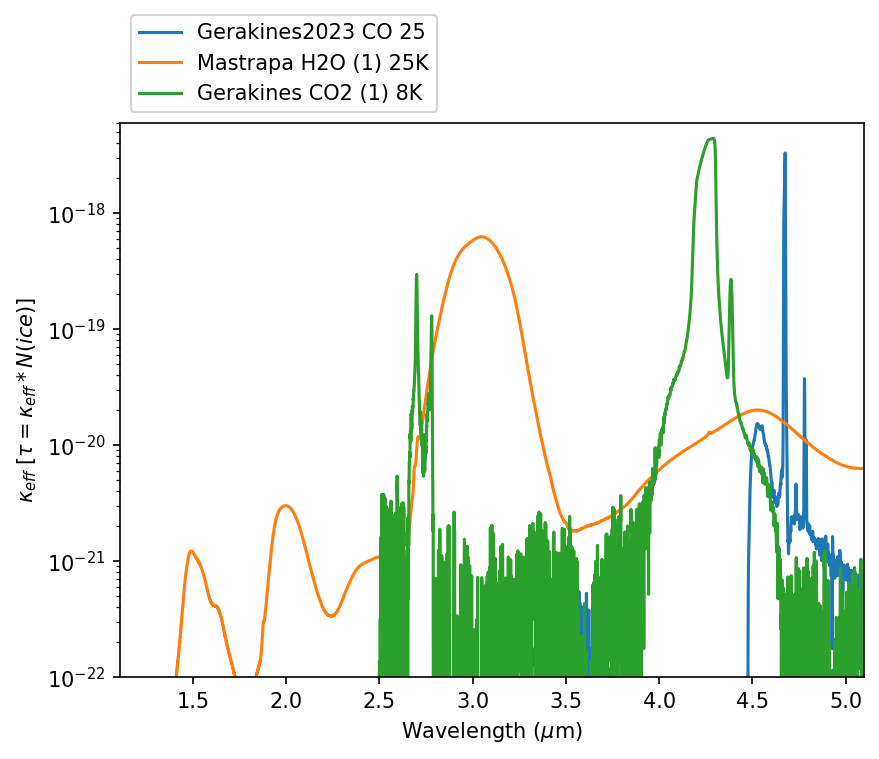
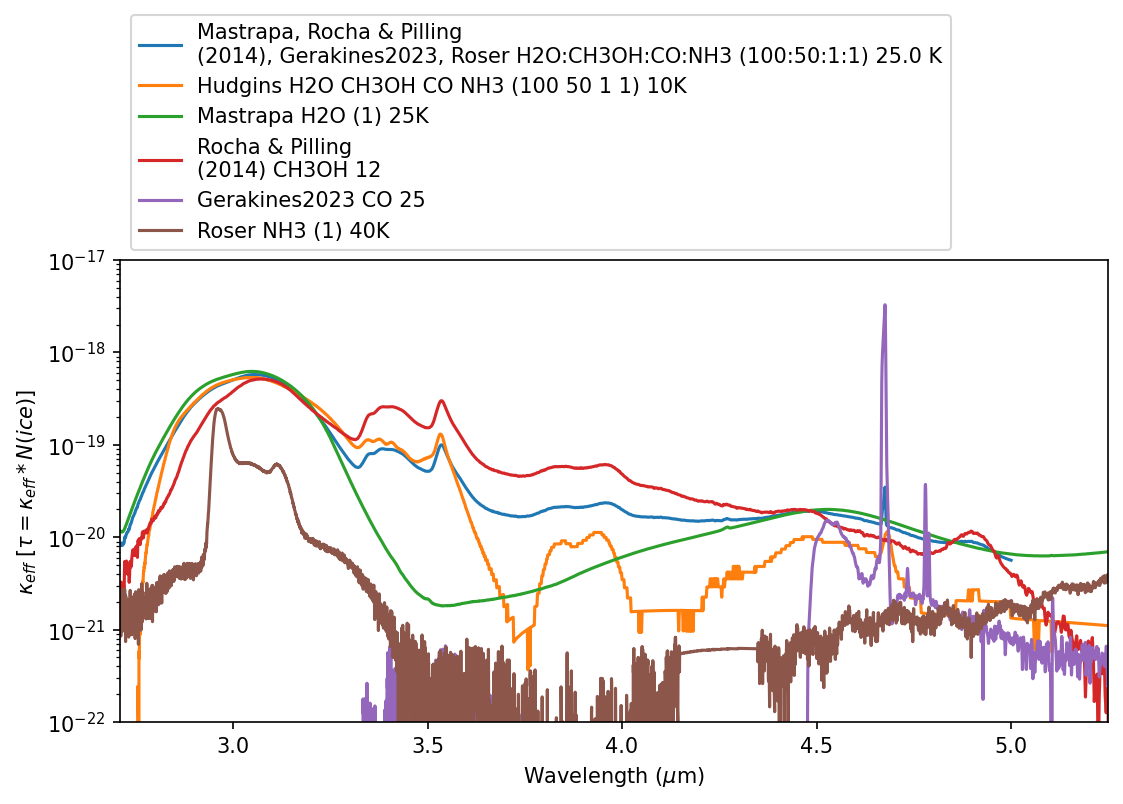
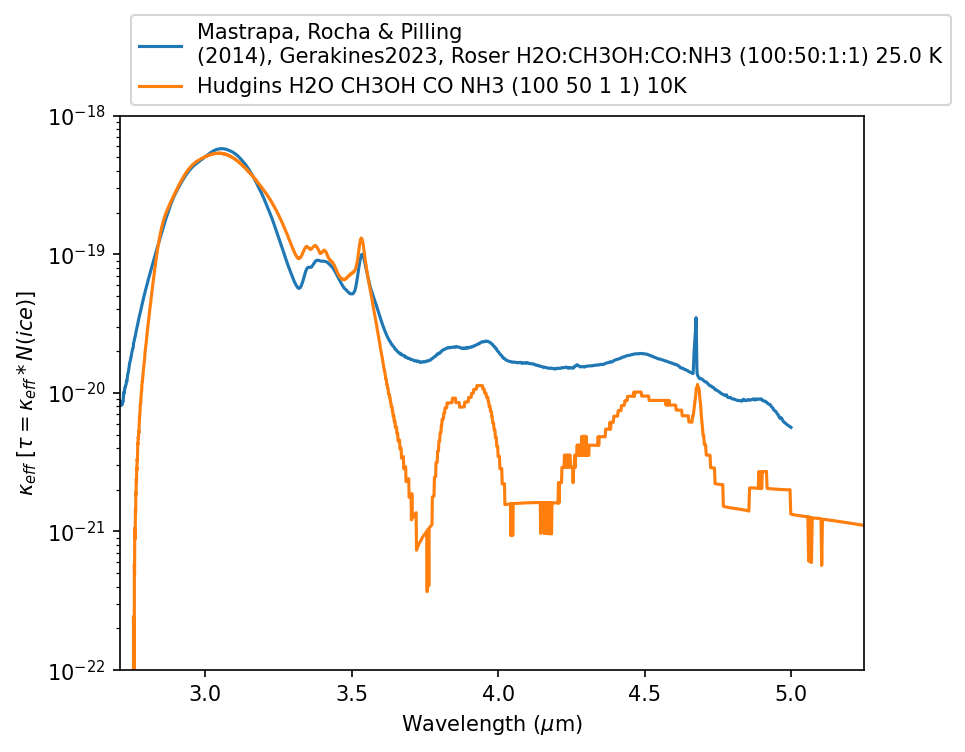
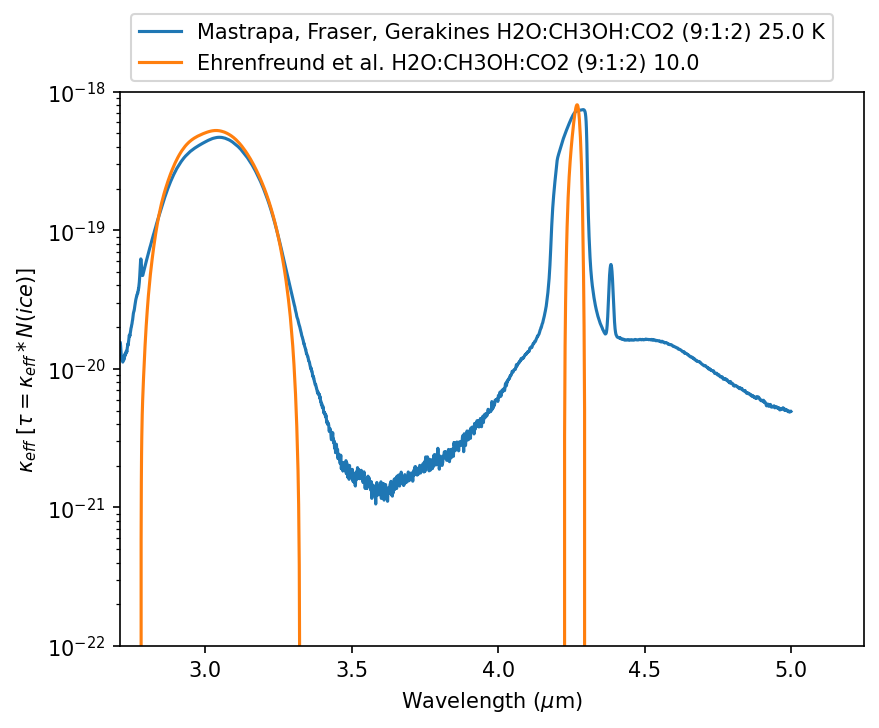
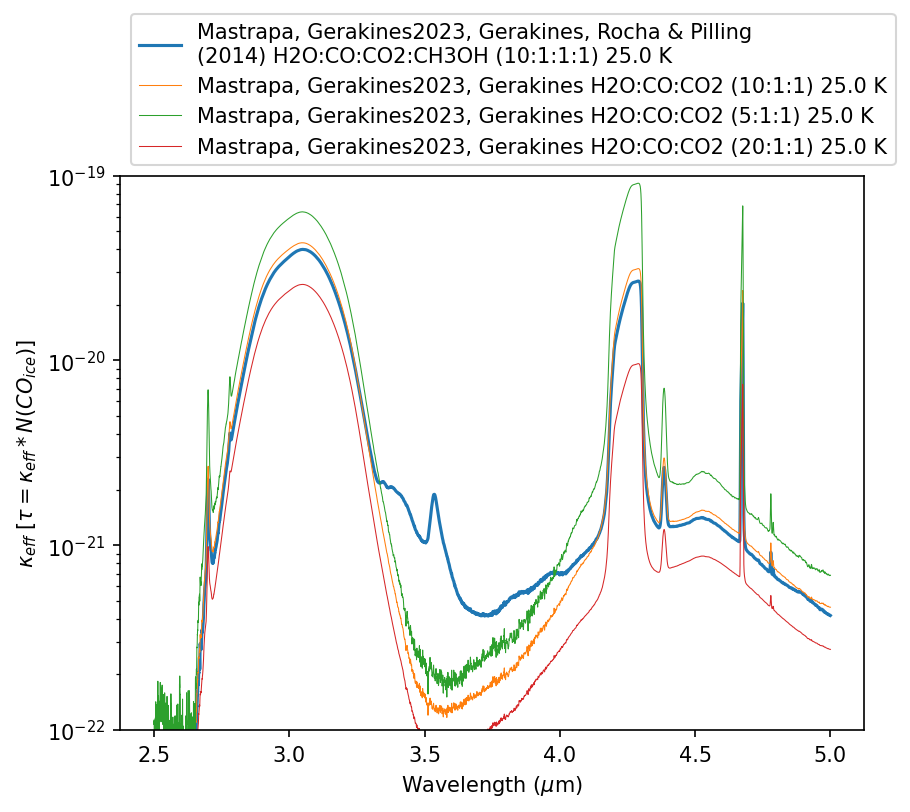
A substantial history of papers on star formation and kinematics in the Brick...
(these are just the papers with G0.253 in the title)
- Longmore+ 2012 Herschel, VLT: density, temperature
- Kauffmann+ 2013 SMA, CARMA: Low star-forming potential
- Clark+ 2013 theory: temperature structure
- Rathborne+ 2014, 2015 MOPRA, ALMA: density structure, chemistry
- Johnston+ 2014 SMA, IRAM: temperature, kinematics
- Marsh+ 2016 Herschel: dust temperature
- Federrath+ 2016 theory: turbulence, kinematics
- Henshaw+ 2019 ALMA: kinematic structure
- Walker+ 2021 ALMA: star formation
- Henshaw+ 2022 ALMA, multiwavelength: feedback
- Petkova+ 2023 theory: chemistry
- Ginsburg+ 2023 JWST: ice
- Sofue 2024 Nobeyama: feedback
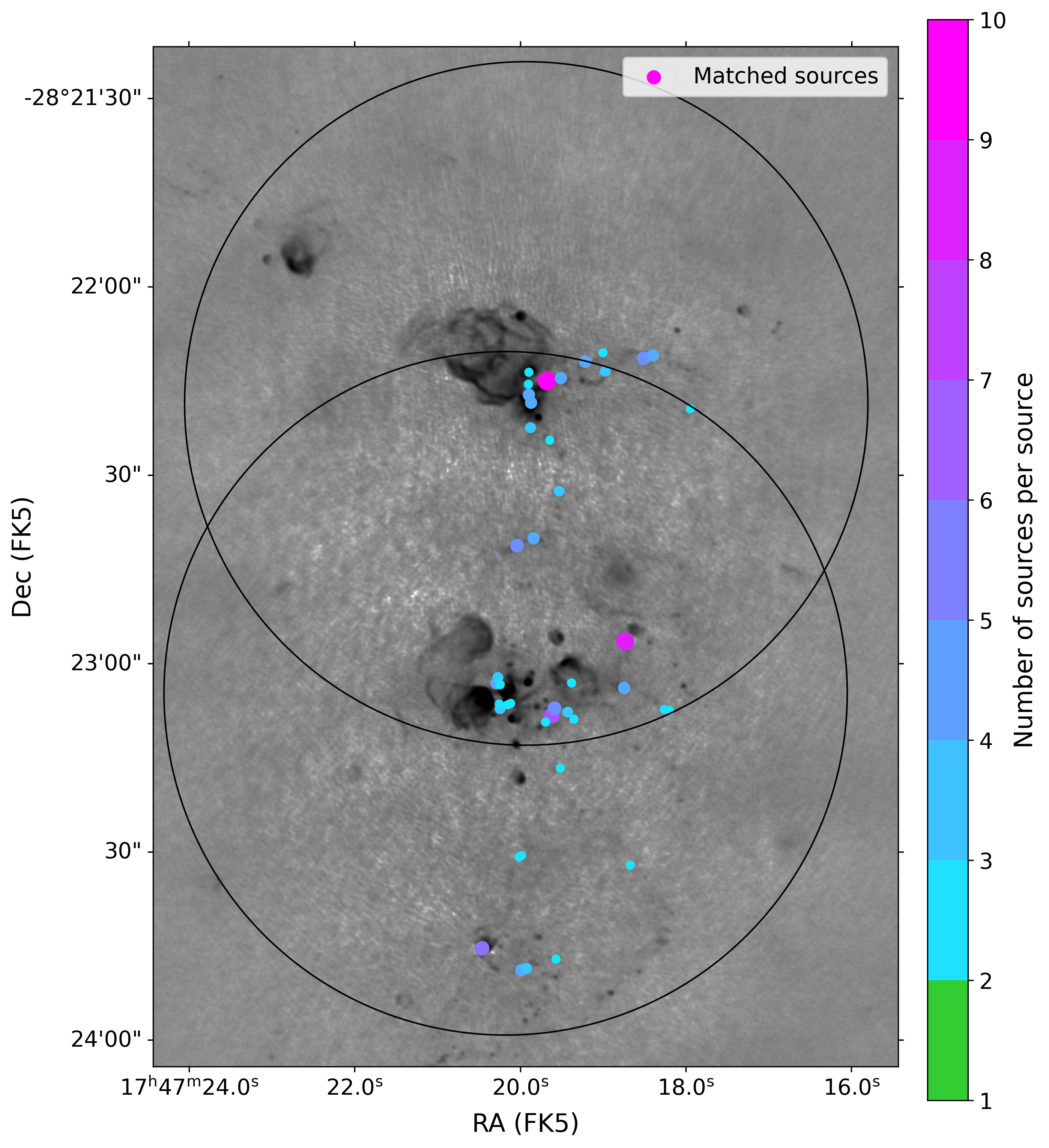
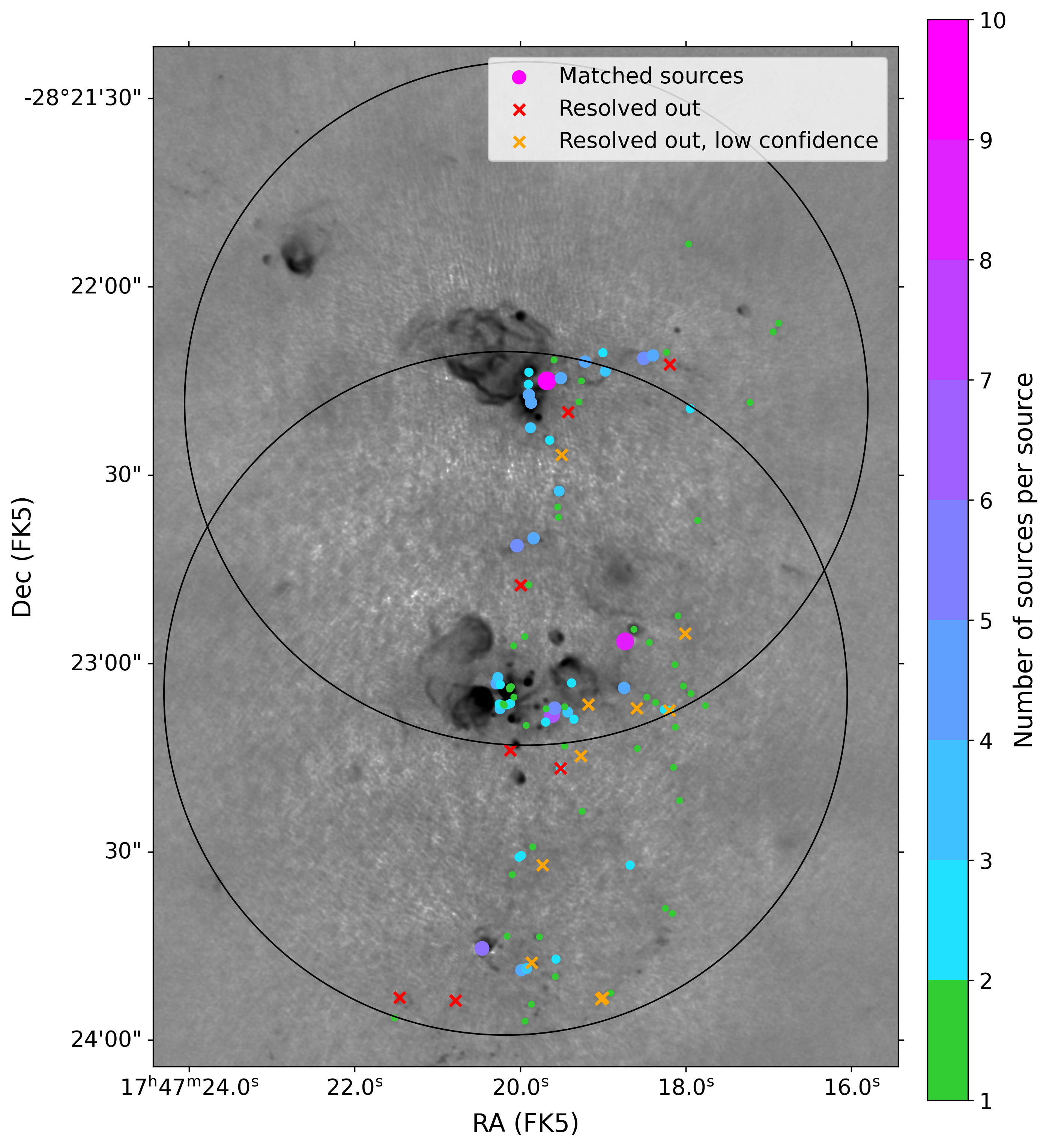
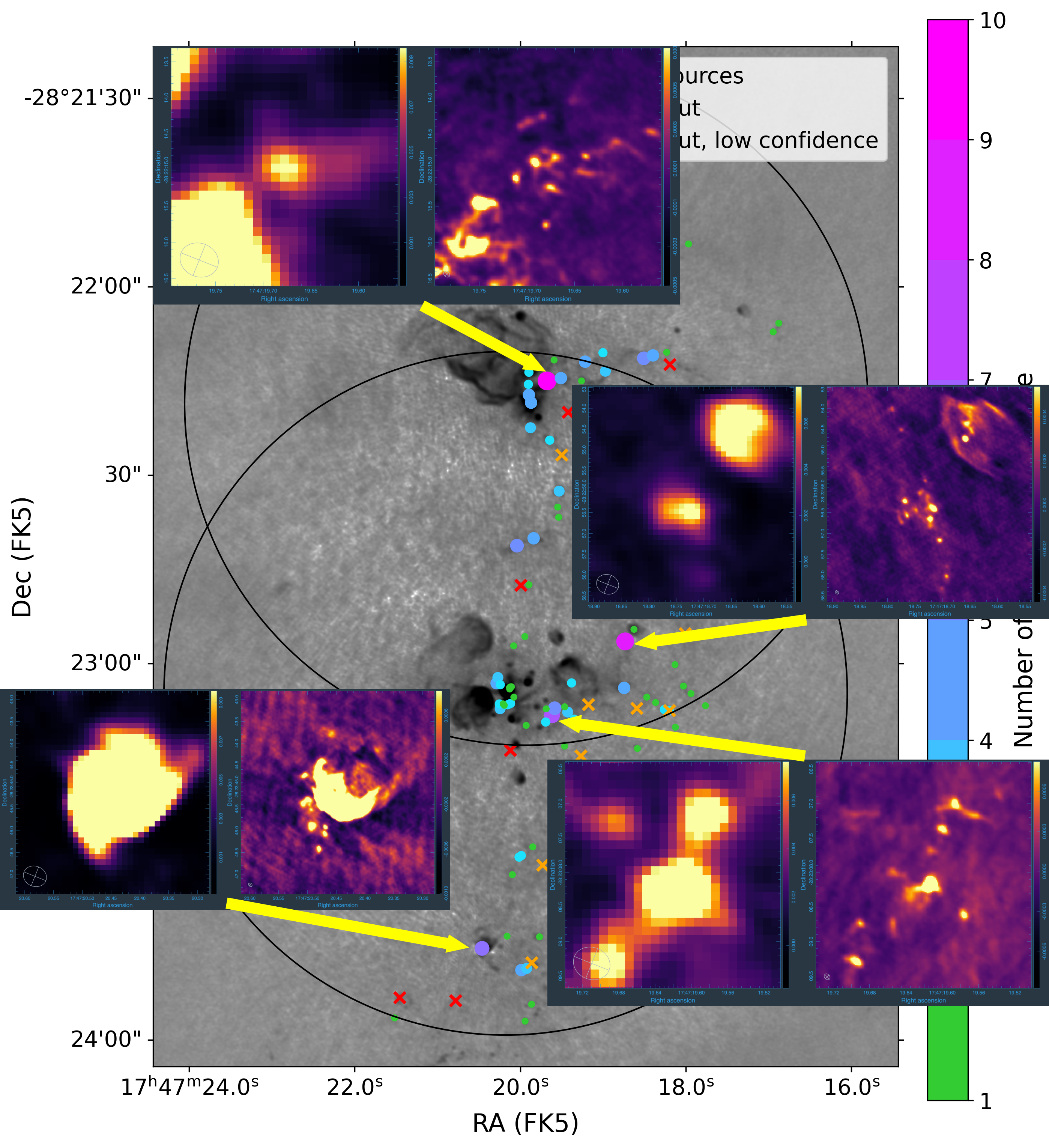
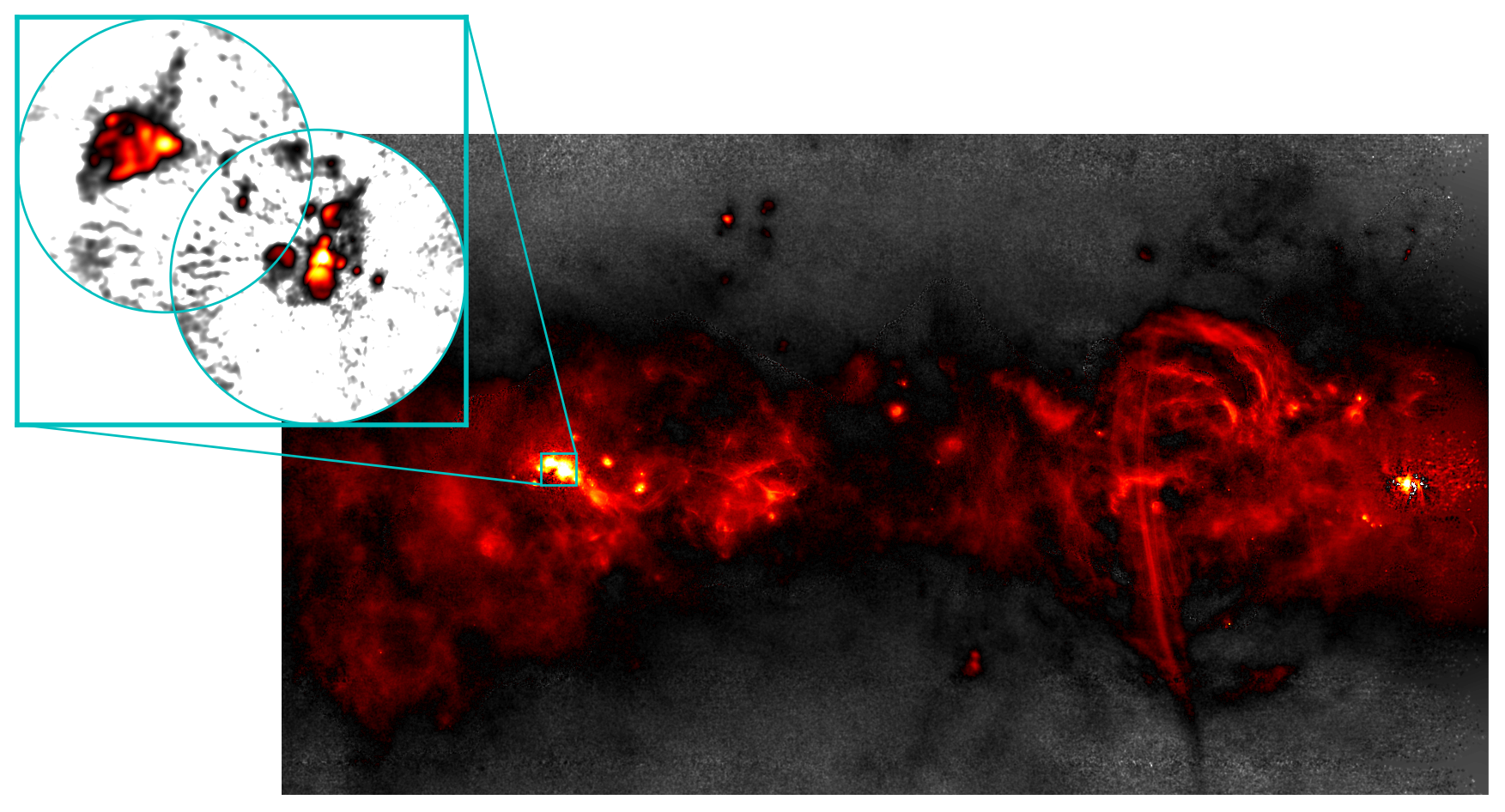
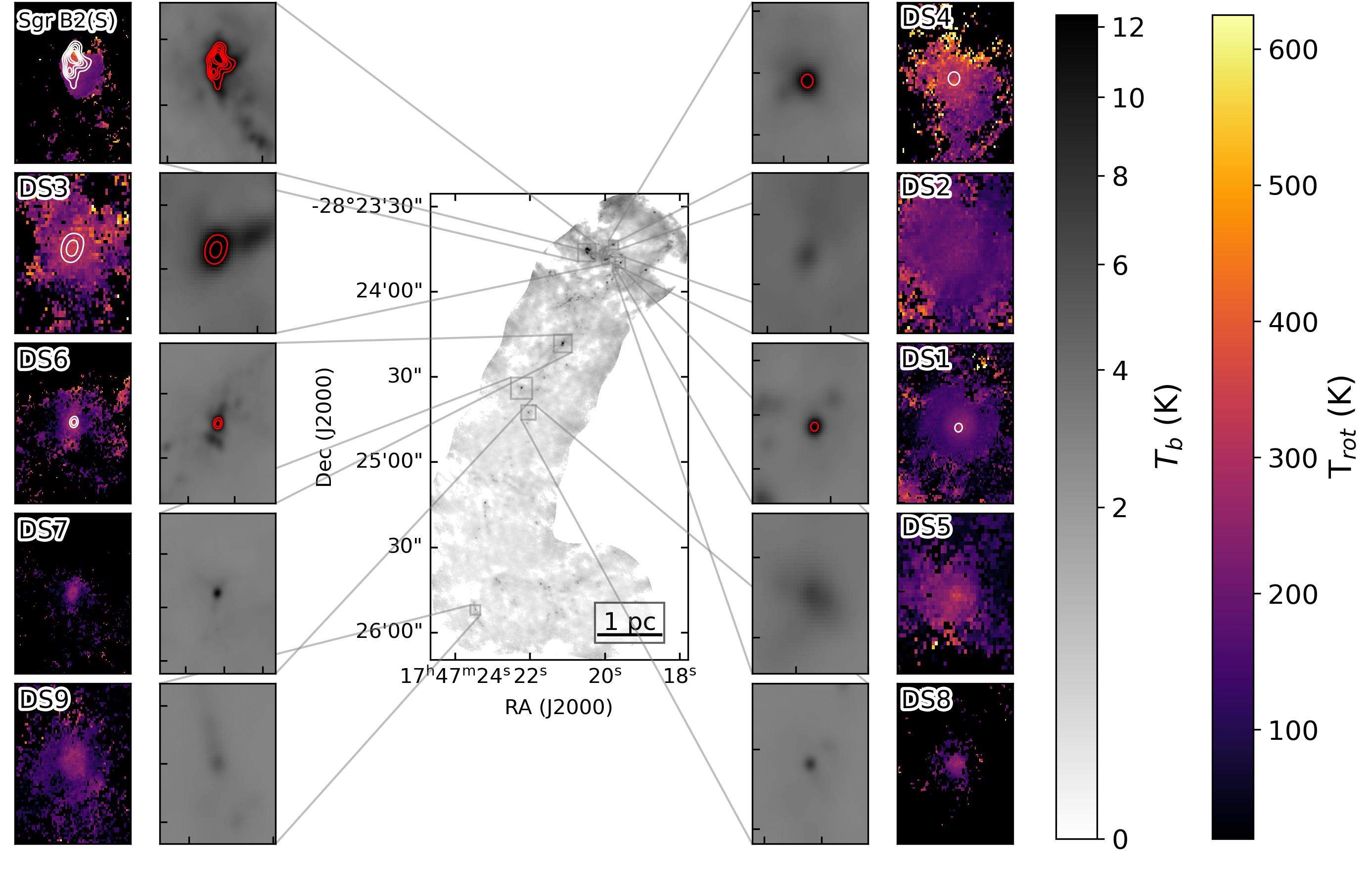
 Desmond Jeff+ 2024
Desmond Jeff+ 2024
Ten hot cores in Sgr B2 DS
outside the massive clusters
TG ~ 200-500 K
M ~ 200 - 2900 M⊙
(proto-O-stars / clusters)
~5% of cores are hot cores
M ~ 200 - 2900 M⊙
(proto-O-stars / clusters)
~5% of cores are hot cores
[P12 Alva Kinman has cataloged 100's more protostars]
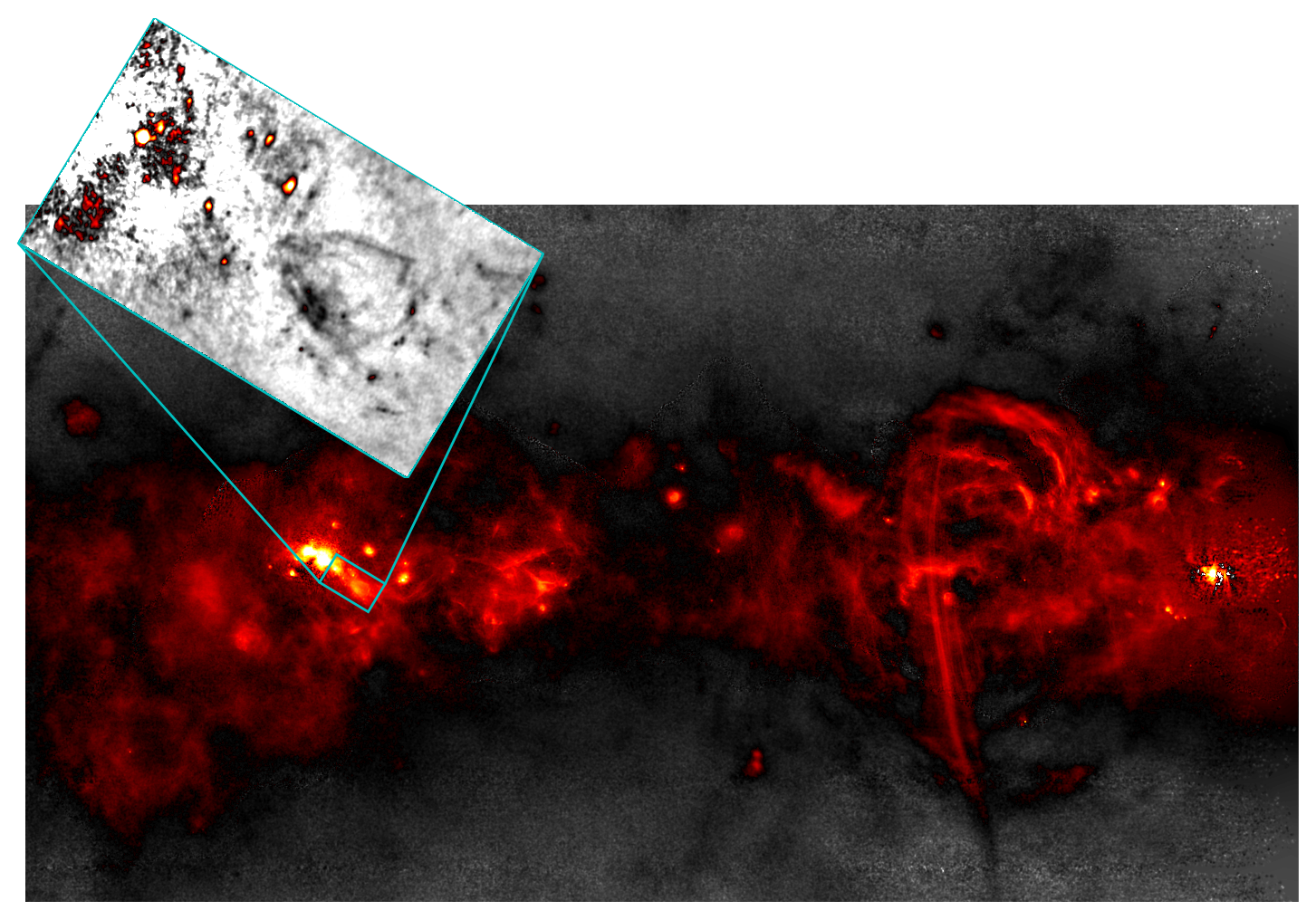
Sgr B2 DS: More massive cores than the Disk
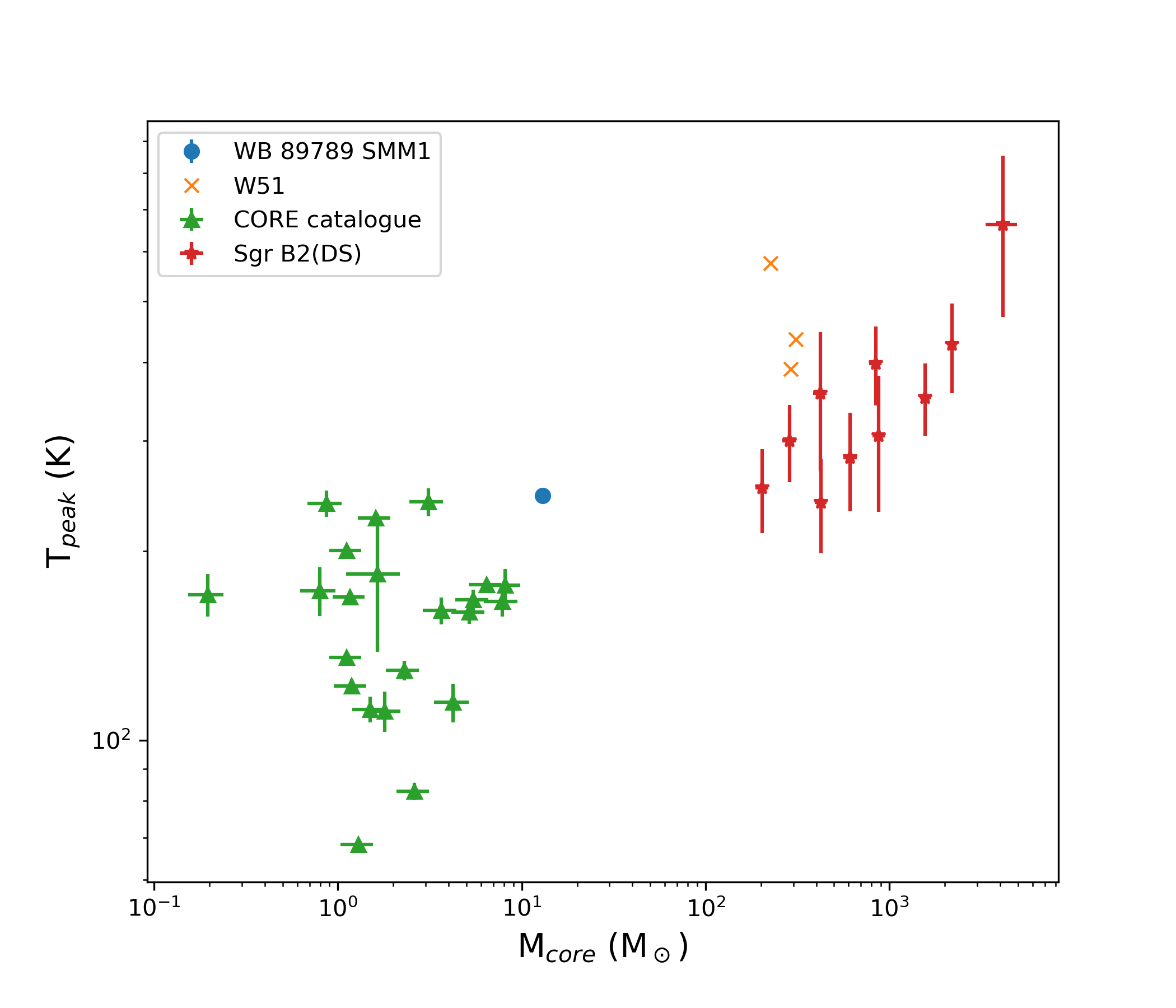
Hot Cores
Hot cores are chemically rich sites of high-mass star formation.
They are only found in the more distant disk & CMZ regions
They are only found in the more distant disk & CMZ regions
Hot Cores
Hot cores are chemically rich sites of high-mass star formation.
They are only found in the more distant disk & CMZ regions
They are only found in the more distant disk & CMZ regions
So is Cloud C
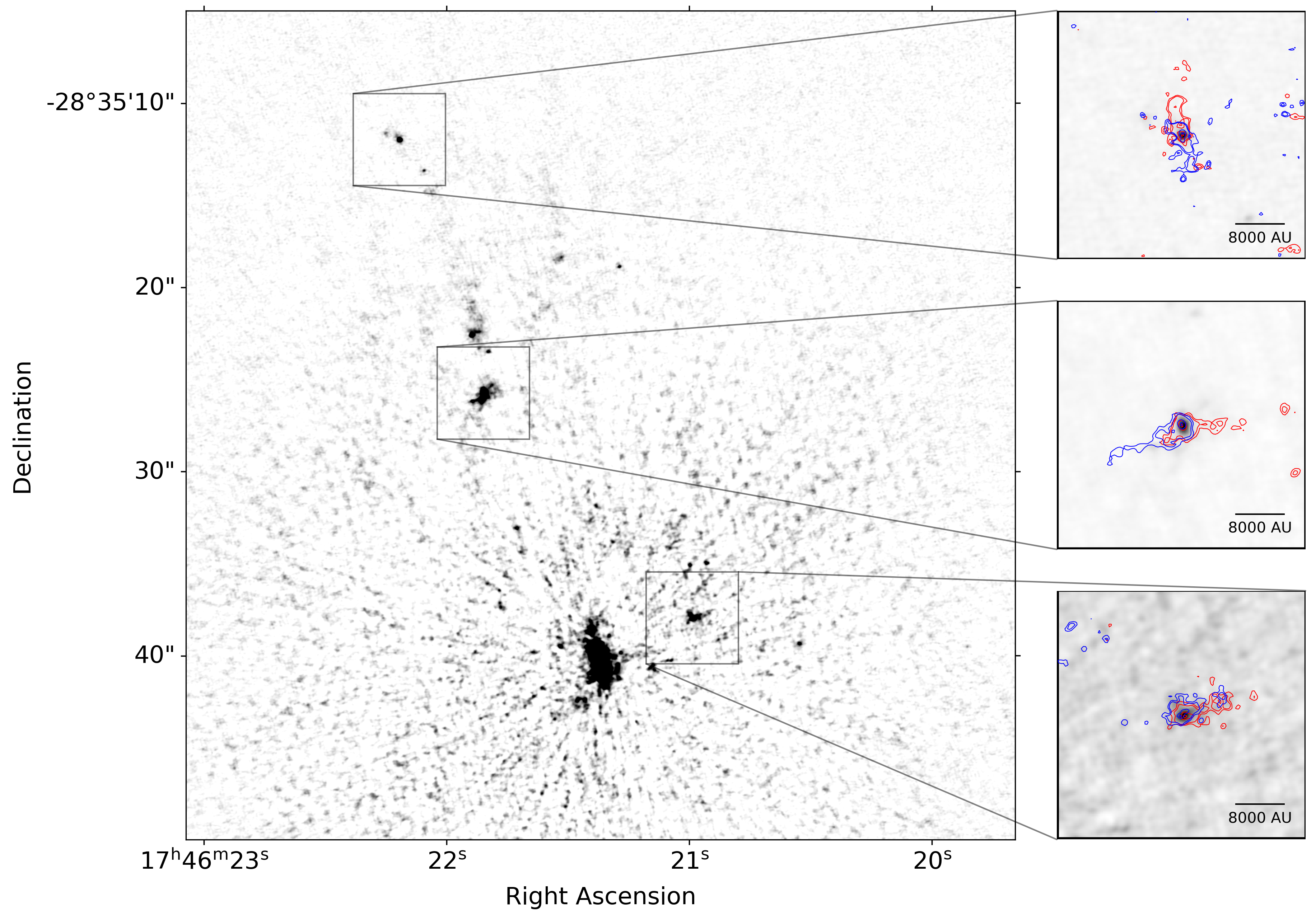
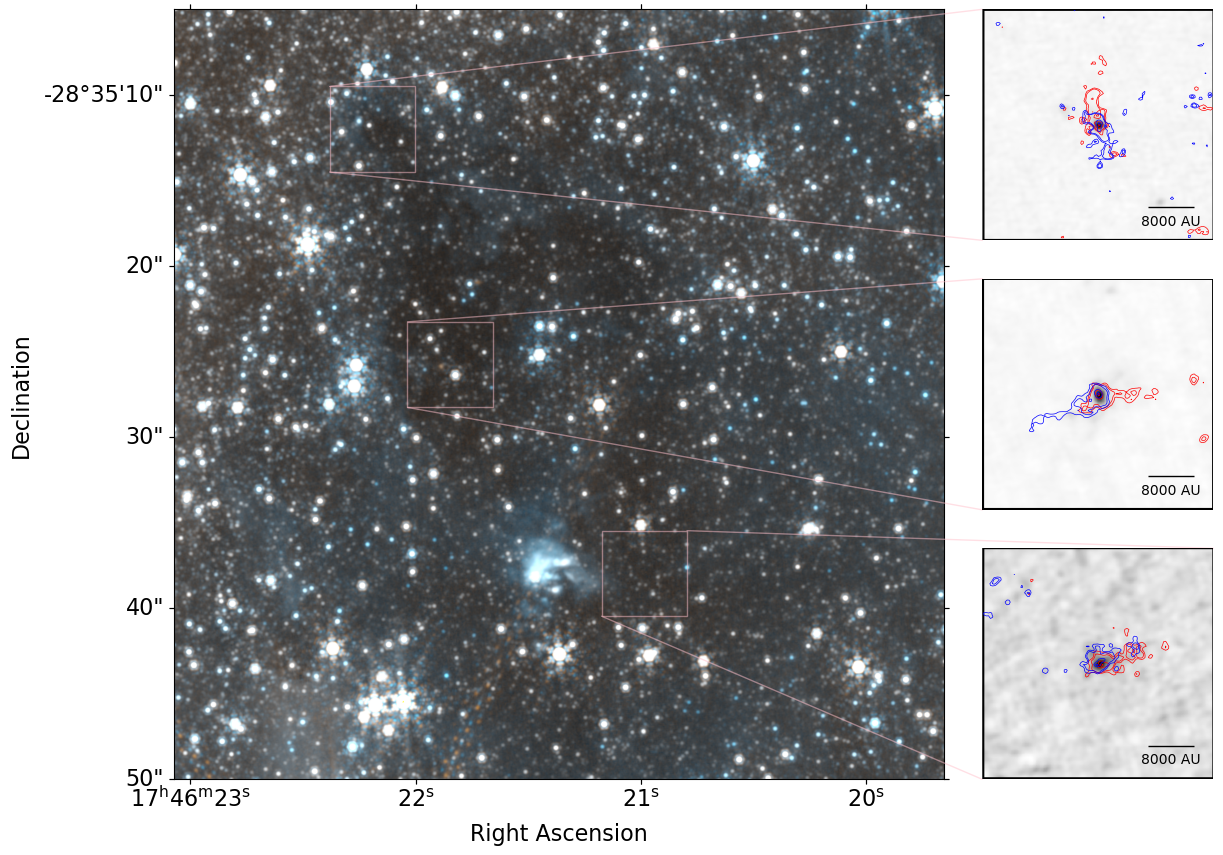

Savannah Gramze
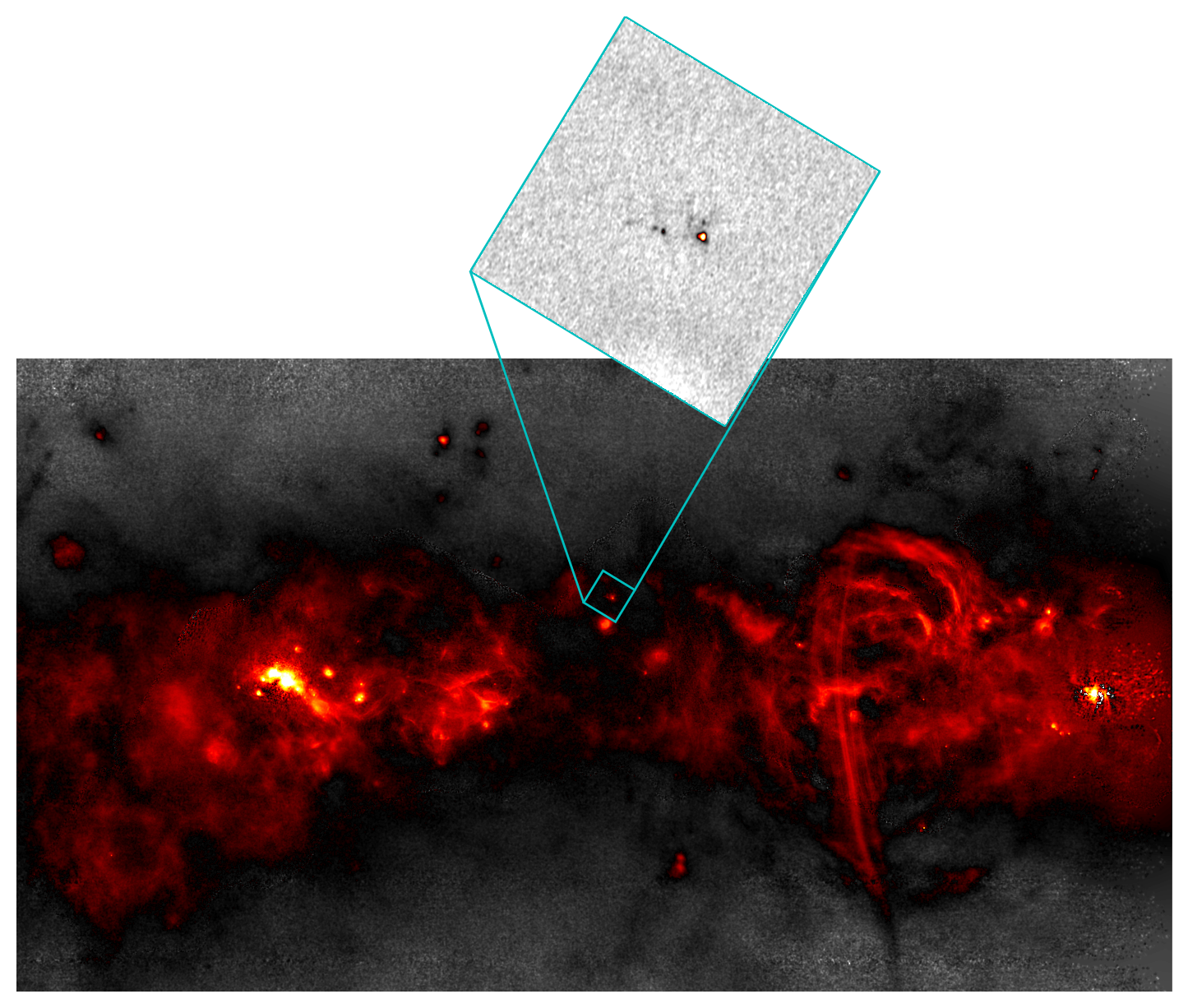
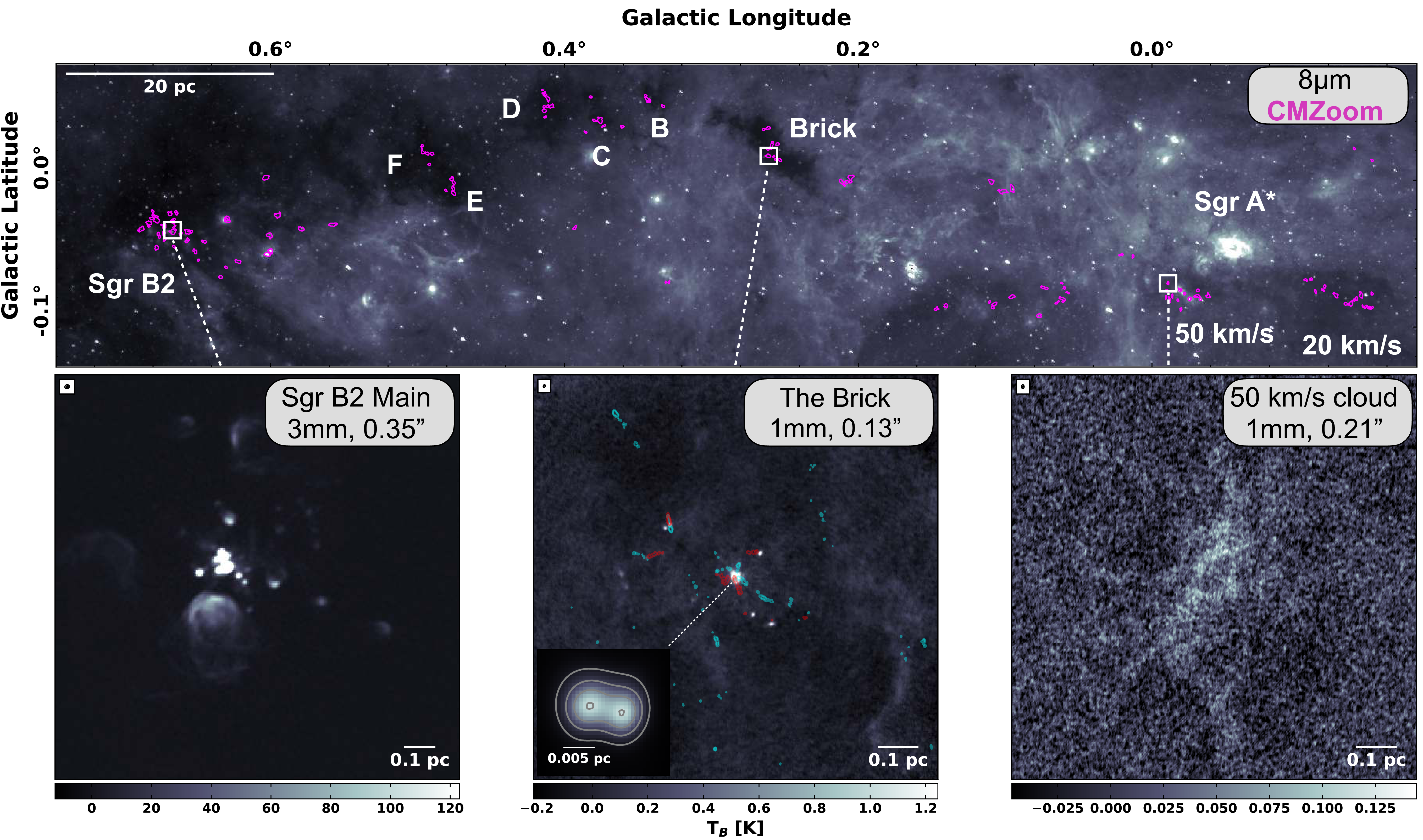 Dust Ridge
Dust Ridge
P08 Houghton E/F, Brick: No/low SF.
Sgr B2, Cloud C: high SF
Sgr B2, Cloud C: high SF
The Brick has lower column density than star-forming Sgr B2
but higher than nearly any cloud in the Galactic plane
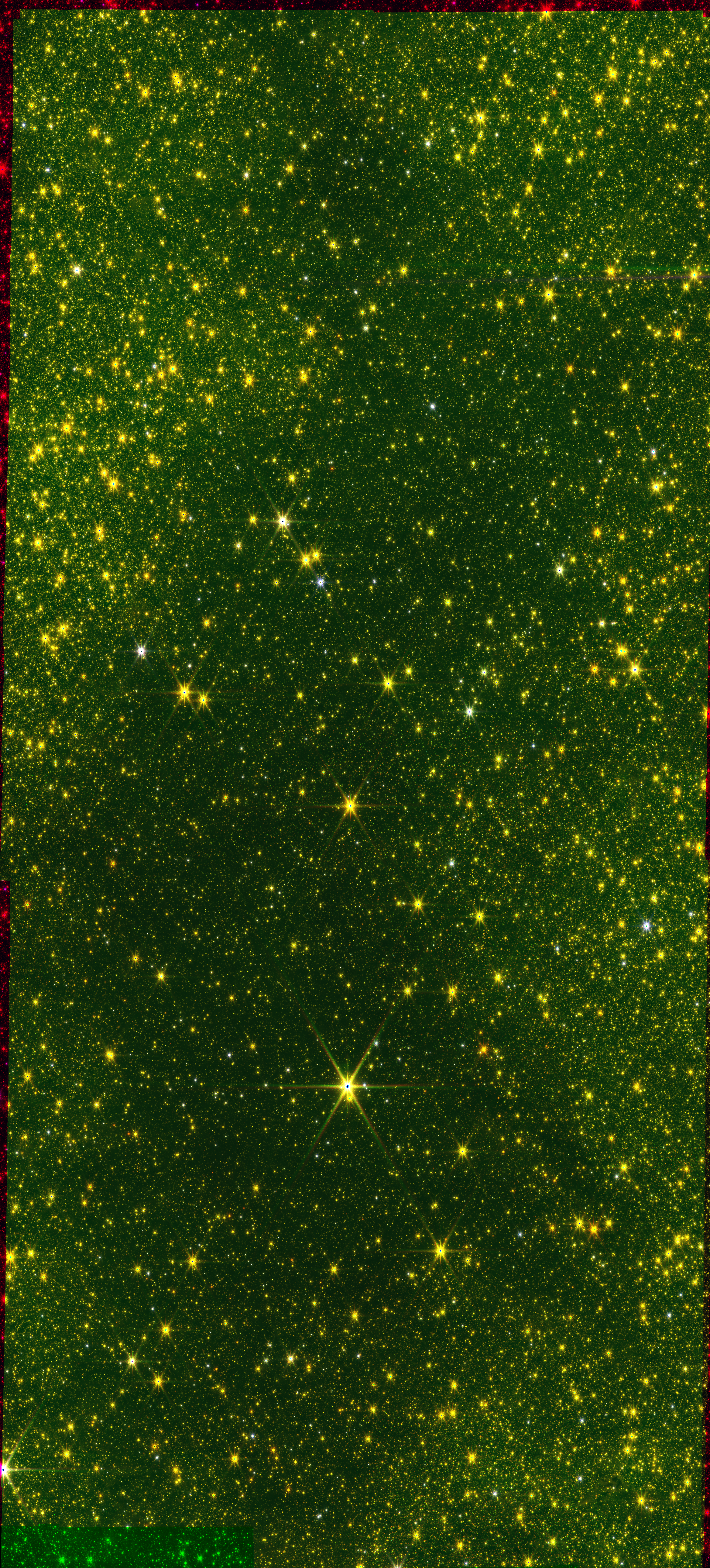
F200W F182M F115W
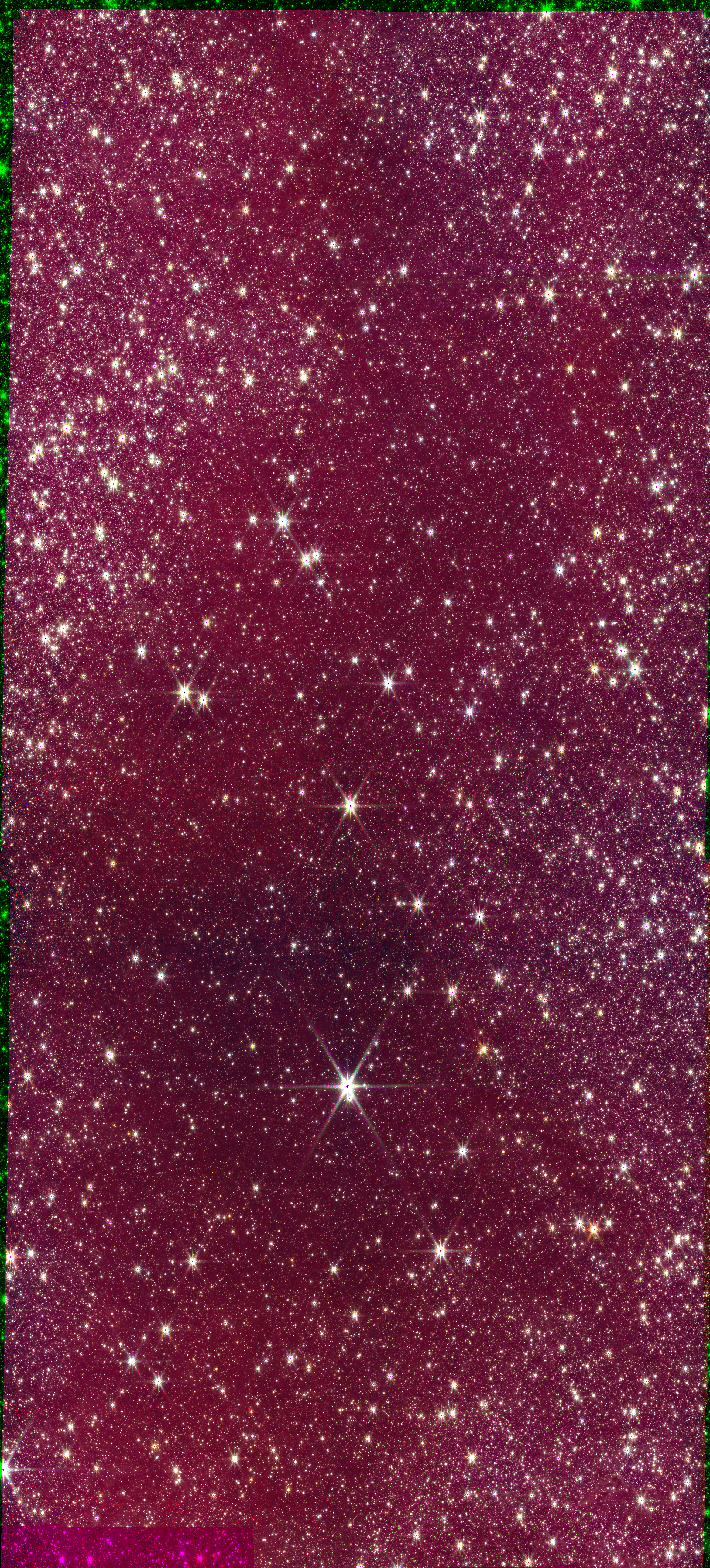
F212N F200W F182M
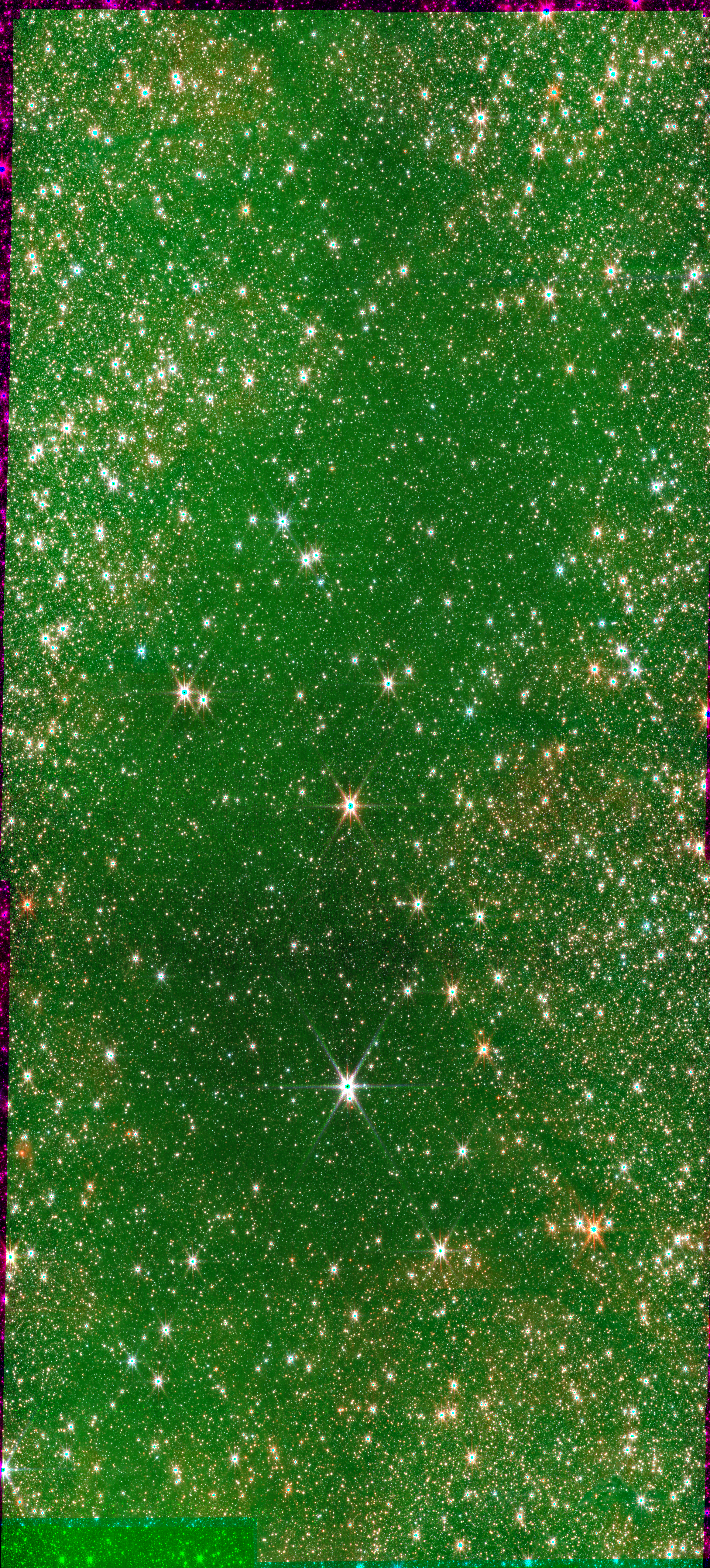
F356W F212N F200W
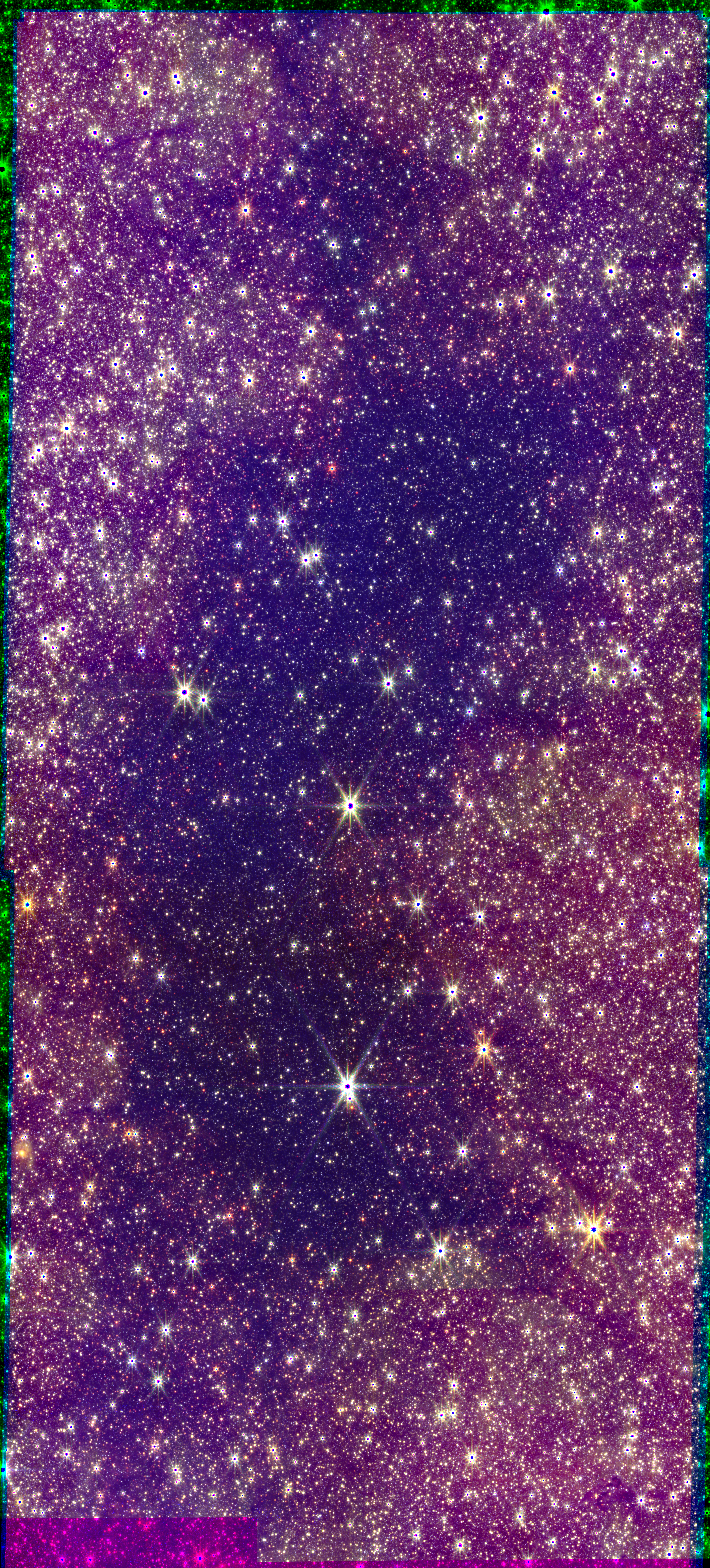
F410M F356W F212N
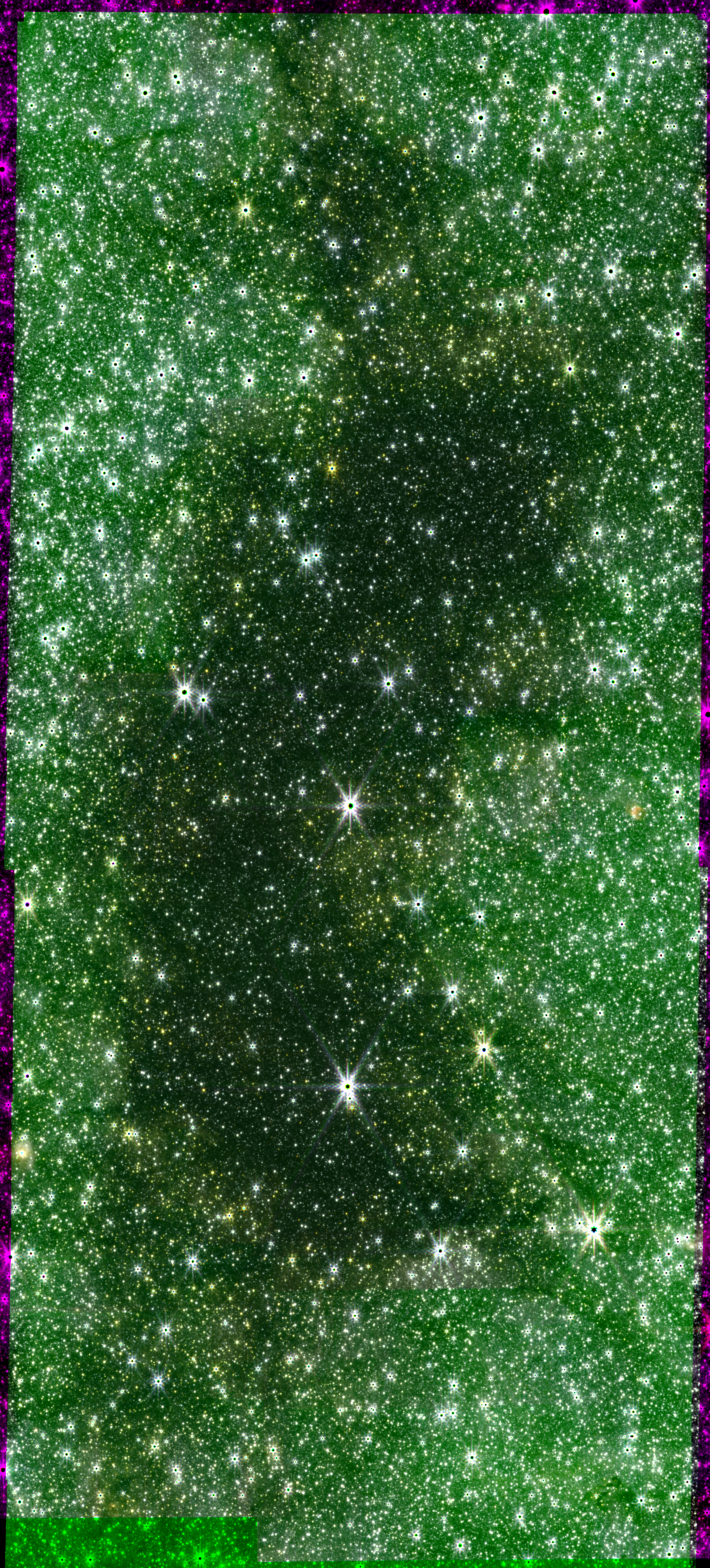
F444W F410M F356W
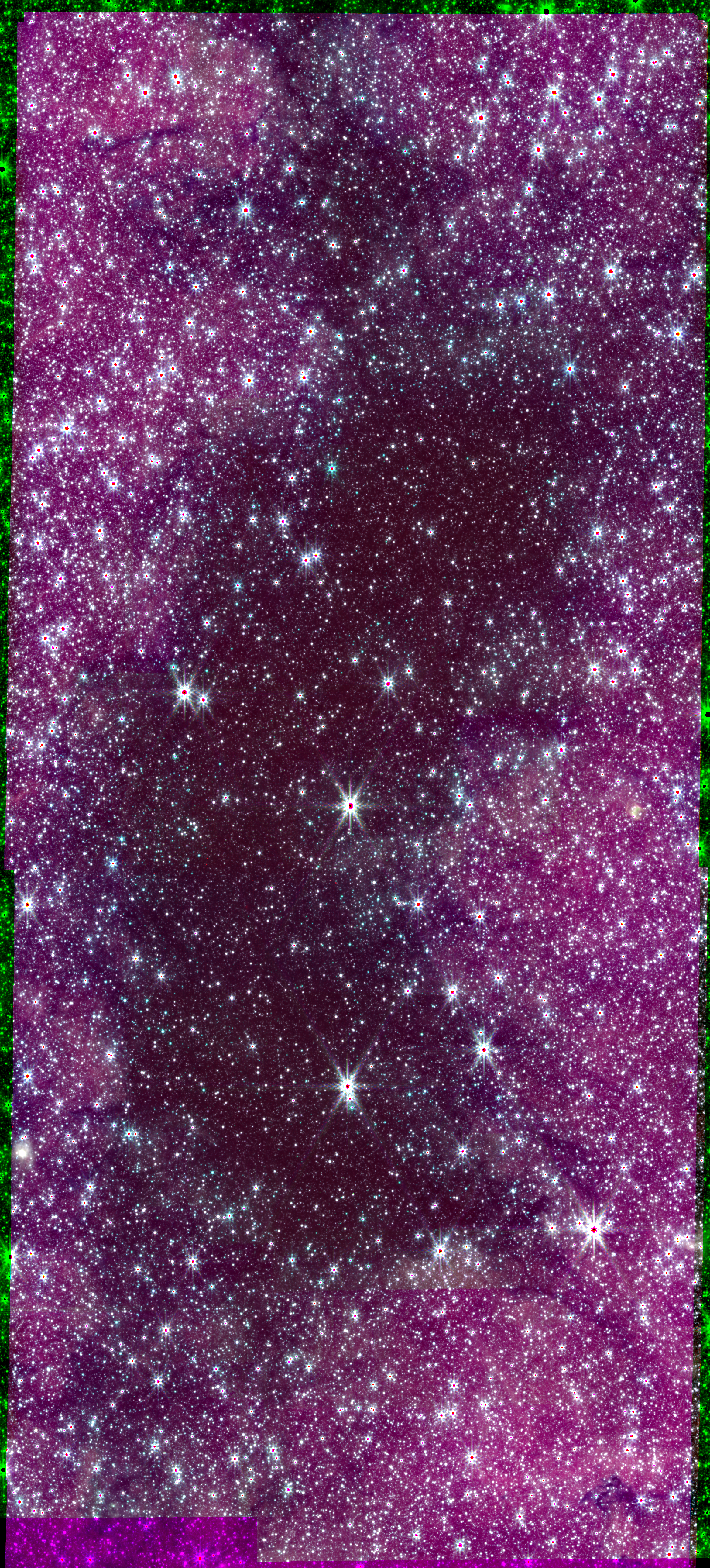
F466N F444W F410M
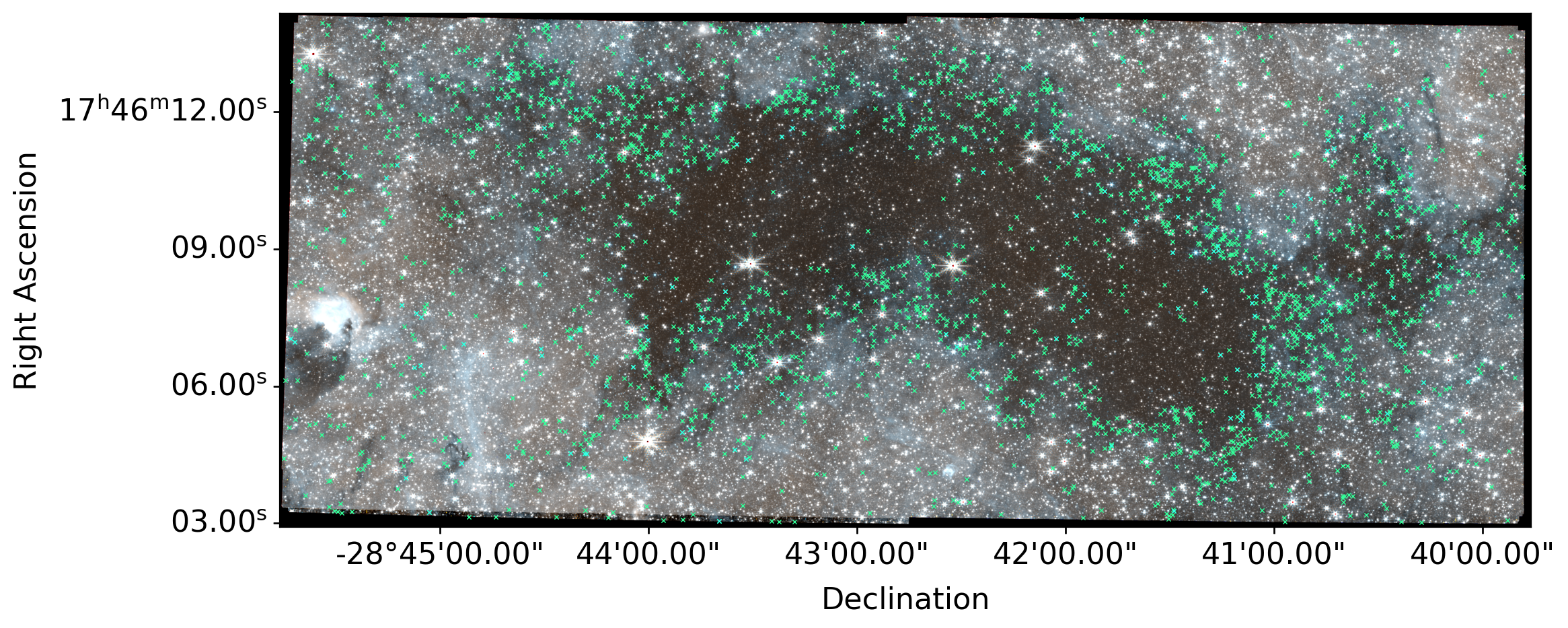
stars behind/within the center of the brick are too extincted to detect even at 4μm
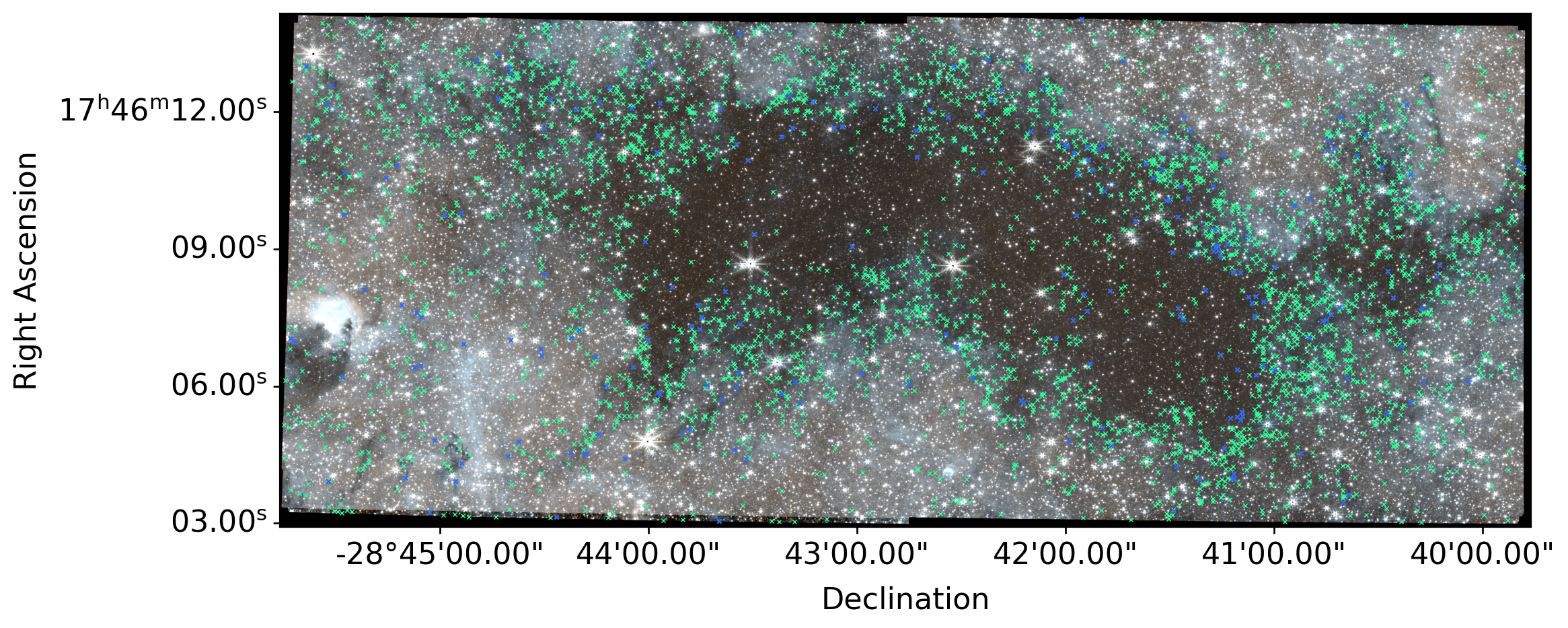
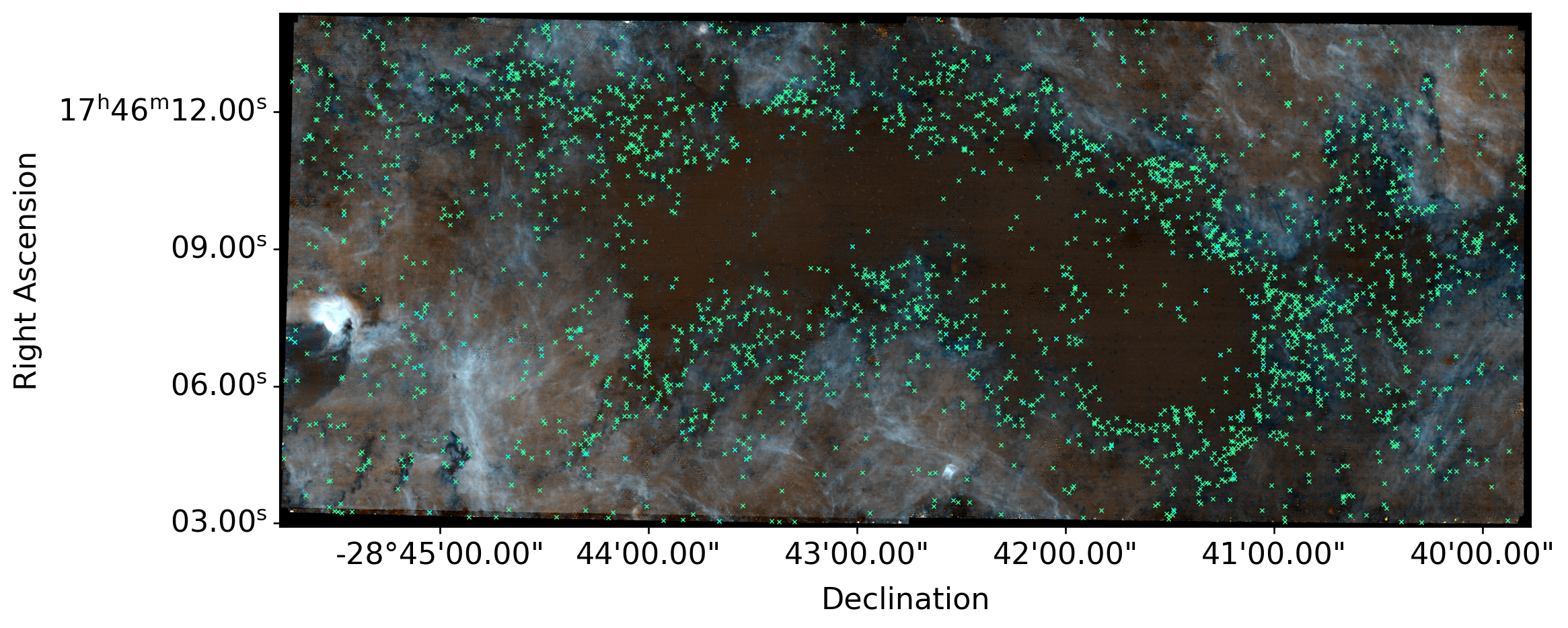
stars behind/within the center of the brick are too extincted to detect even at 4μm
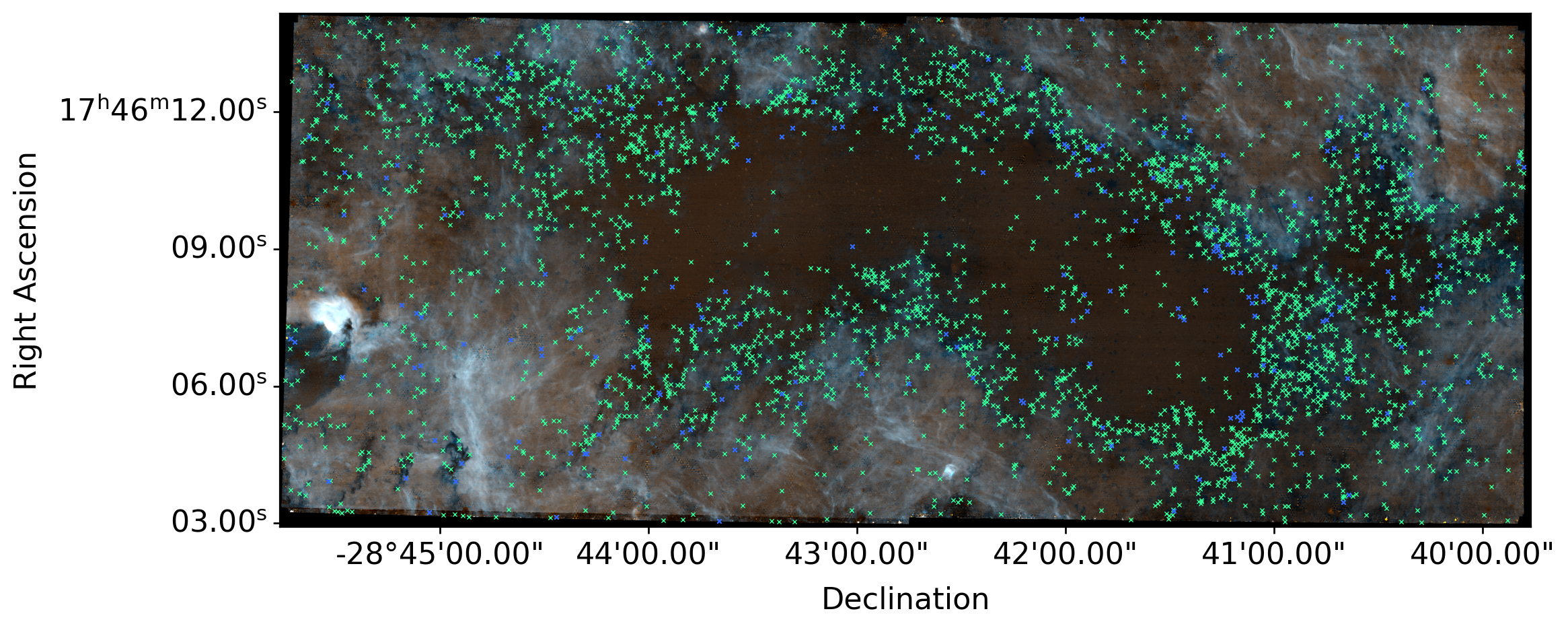
Gas emission pointed toward freezeout already
(e.g., Rathborne+ "Baked Alaska": a frozen interior)

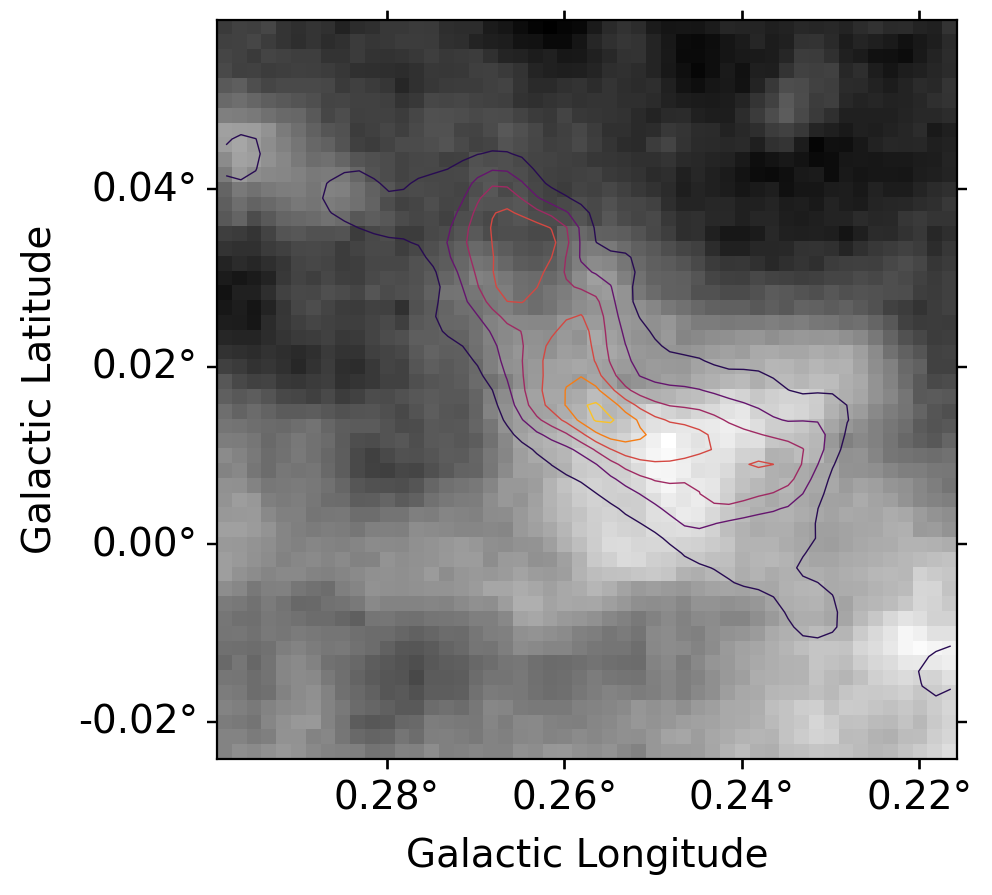
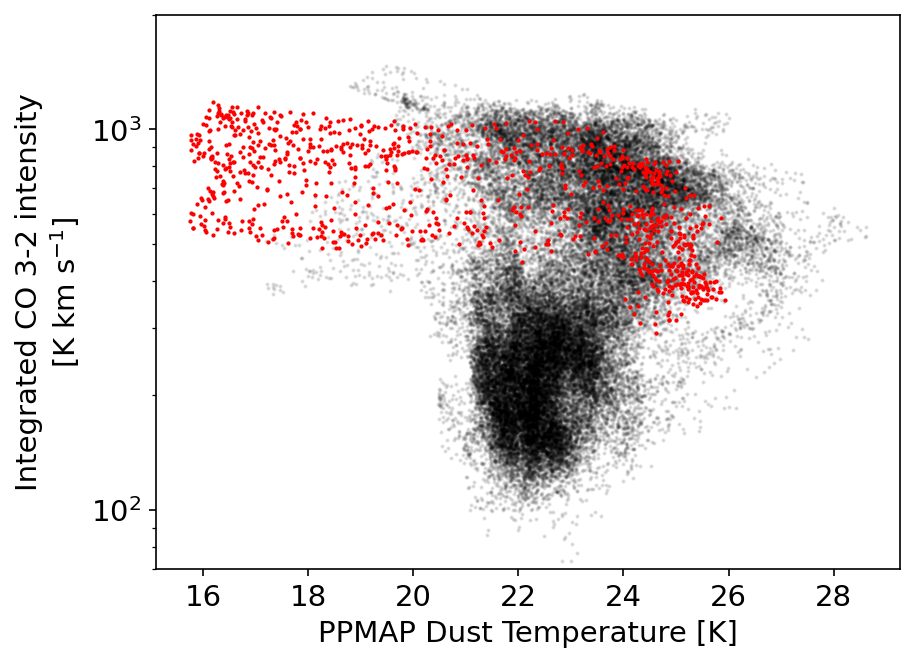
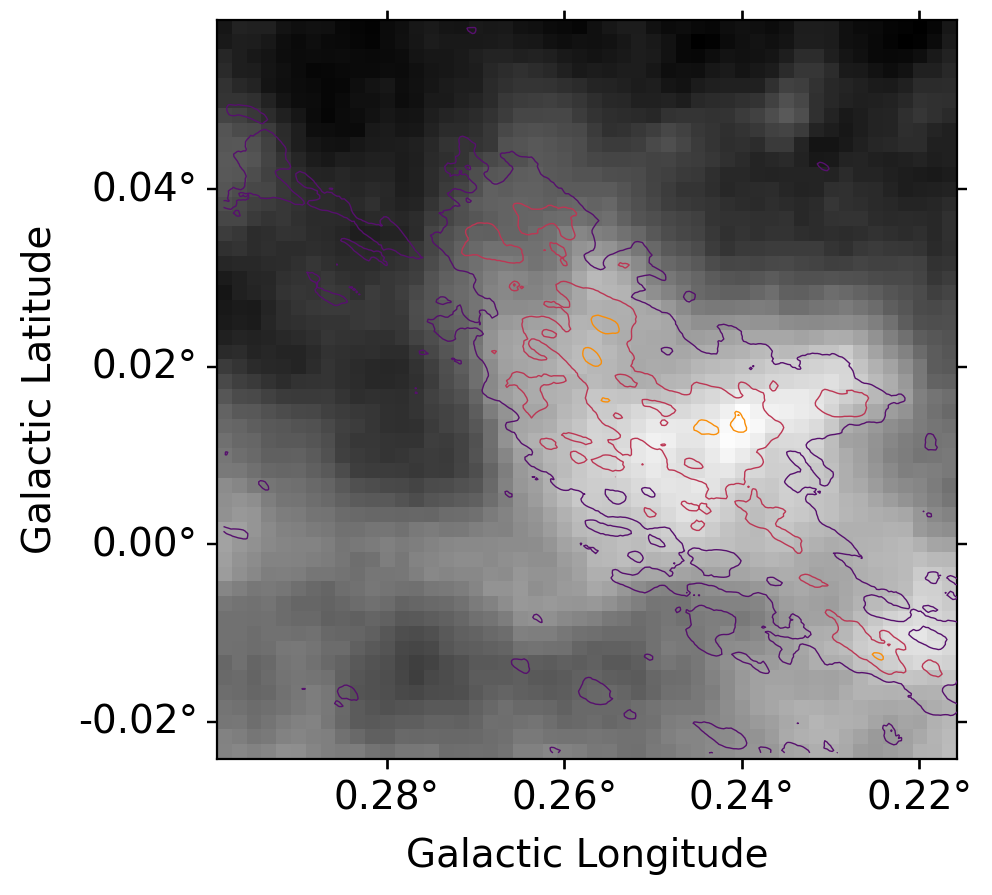
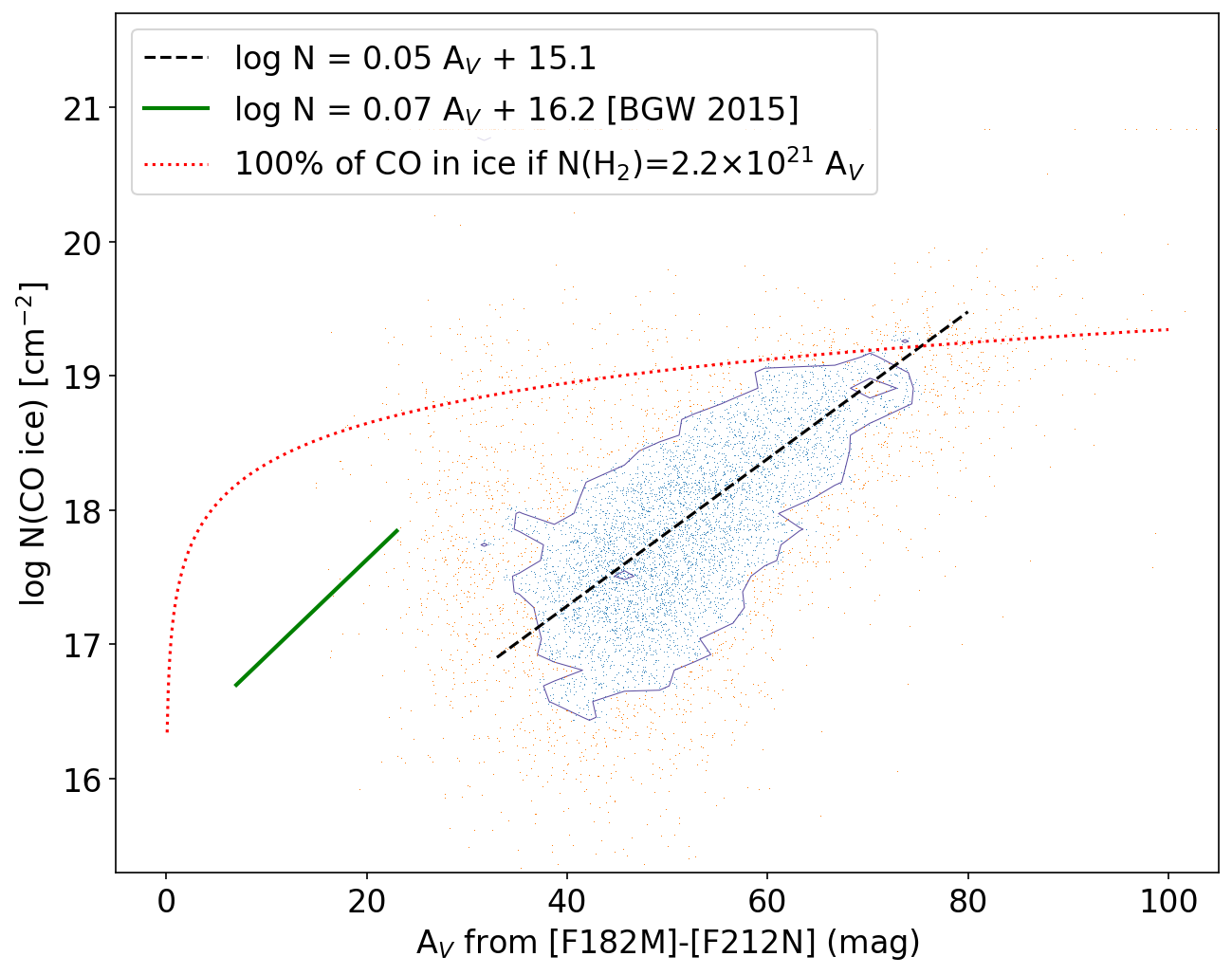
Tgas > Tdust. Gas is heated by CRs & turbulence

At high CRIR, CO fails as a coolant because
But, The Brick is a really weak emitter in C+
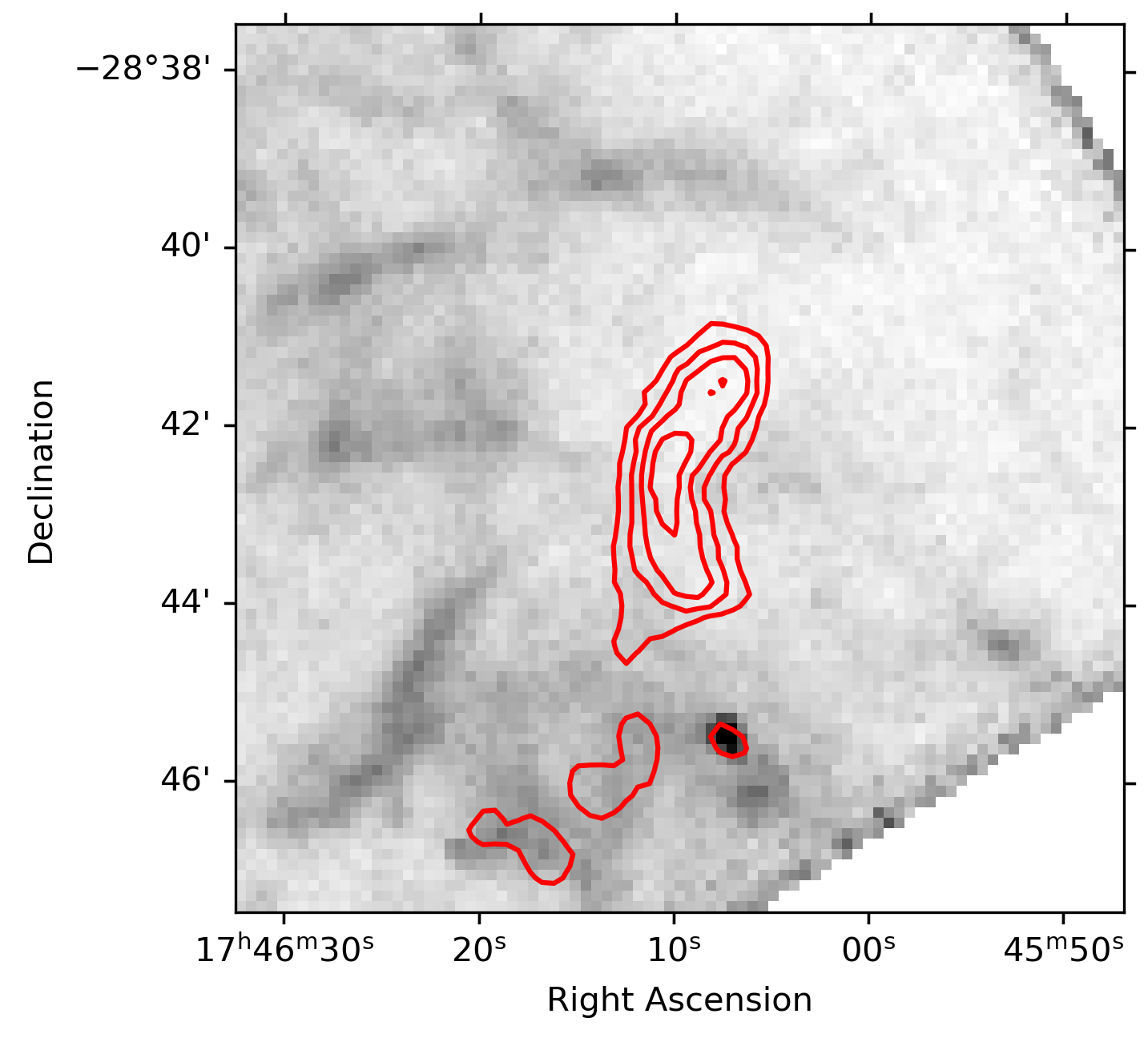
CO + He+ → C+ + O + HeBut, The Brick is a really weak emitter in C+

CO is limited as a coolant, but because of freezeout, not (just) CRs
No, not yet.
Brα and Paα excess sources exist, but they're uniformly distributed - not likely to be associated with star formation.
(P08 Rebecca Houghton - similar result)
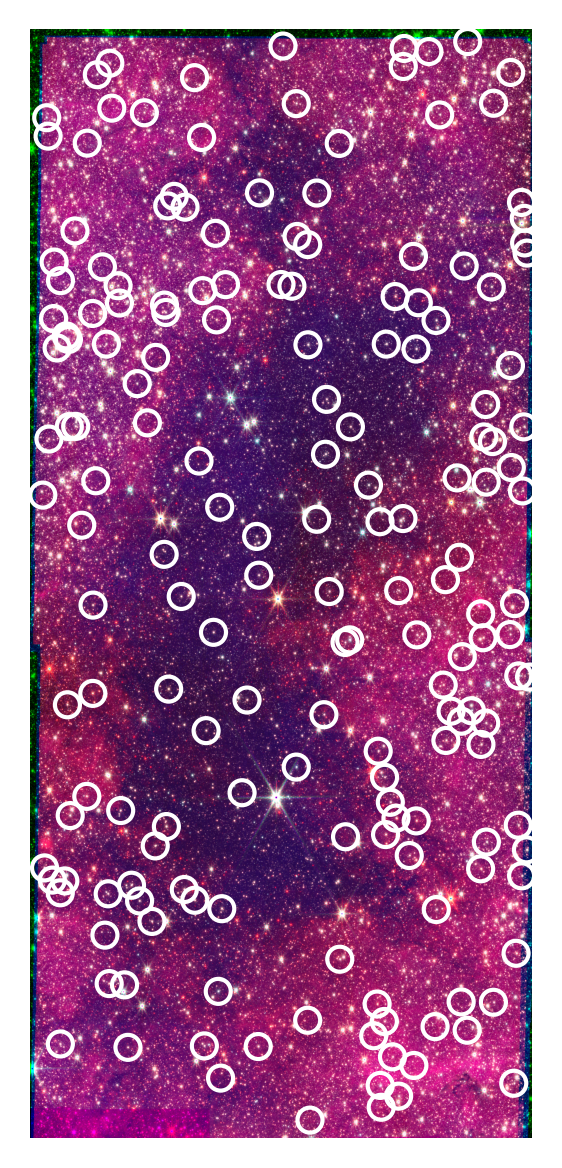
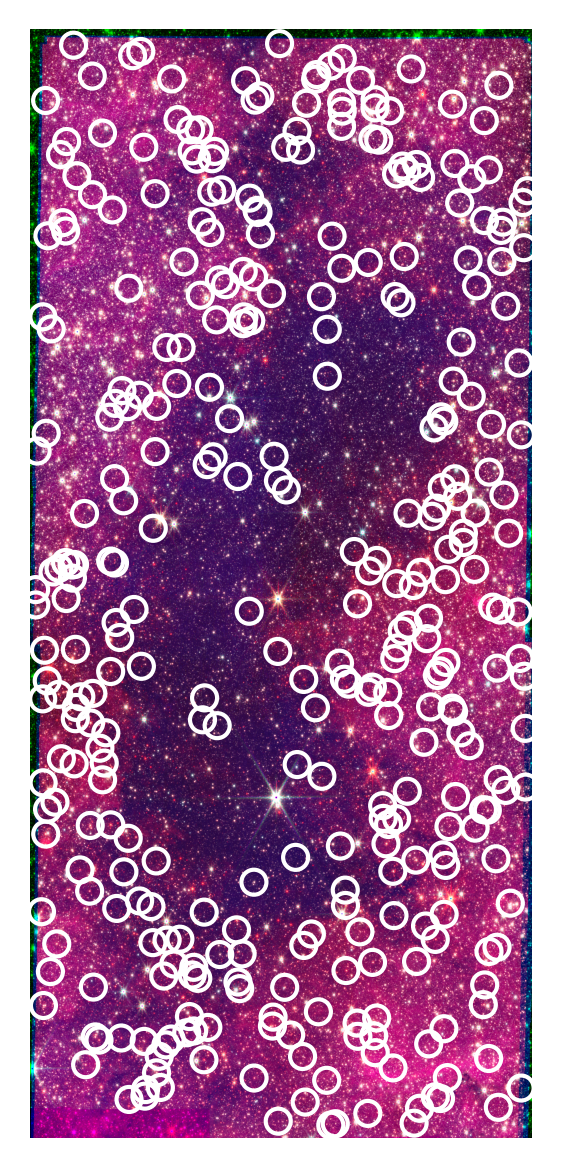
- The Brick is (nearly) protostarless
- Ice forms very readily in the GC environment
- Early freezeout, in addition to CRs, may limit gas cooling












